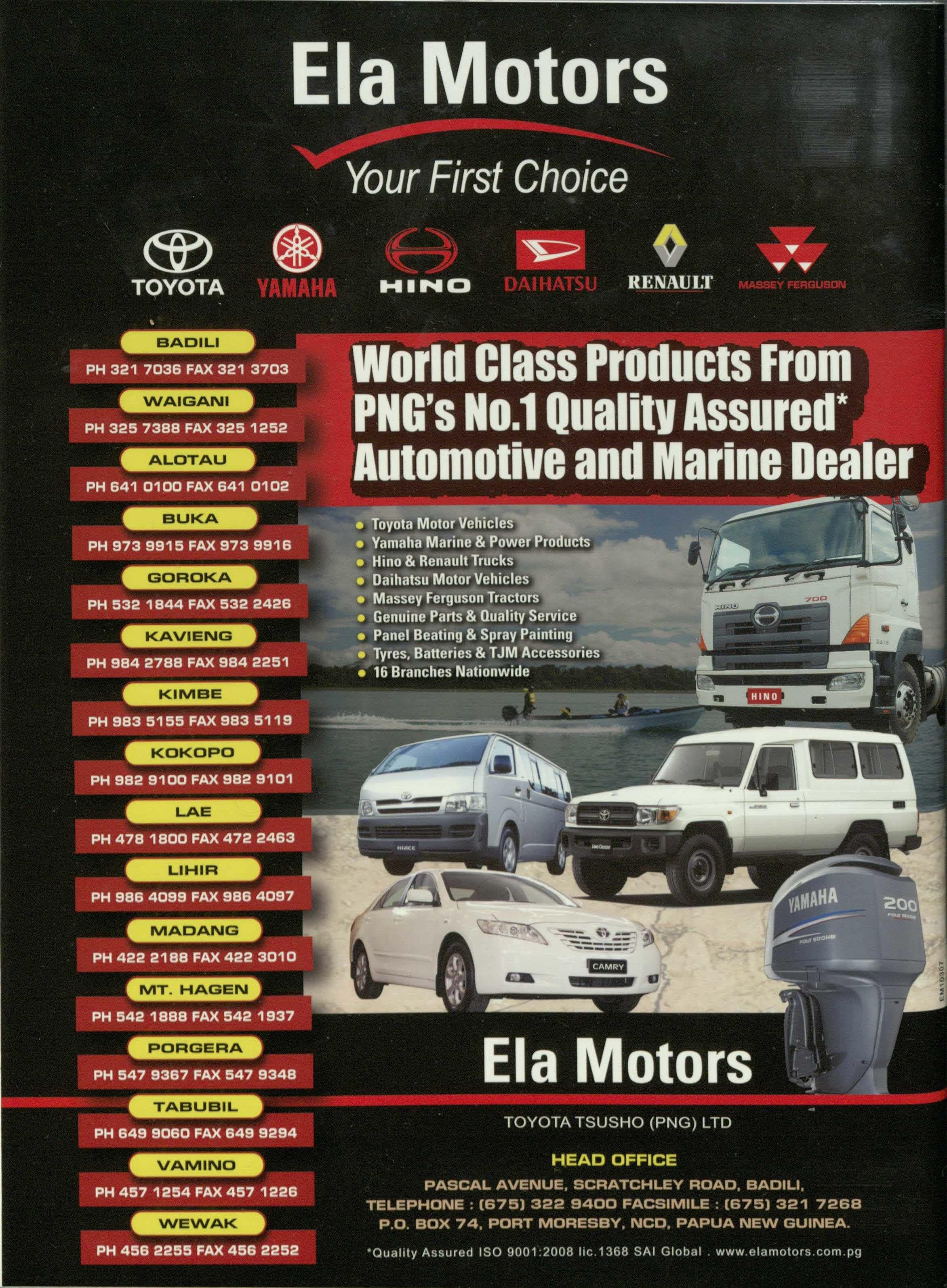




Your new environment is unique. We understand what you need to know to be successful in PNG, and how to manage and enjoy both your business and private lives.
That's why we've provided the "Welcome Guide to Port Moresby" - the most comprehensive and up-to-date source of information you'll need. It's another reason why BSP is the number one choice for banking in Papua New Guinea and the South Pacific.
Contact us to obtain your copy today - bringing your bank closer, with hundreds of ATMs and more branches in more locations throughout PNG.
Daltron stands apart from our competitors in terms of providing the complete IT solution for your business. As the leading ICT Service· provider and with eight offices strategically located throughout the South Pacific, Daltron provides your business a reliable network built upon comprehensive regional market knowledge and expertise.
Backed by the largest IT support staff and field engineering service facilities in the South Pacific region, Daltron offers a wide range of support services, from business critical performance assessment to Internet and IT Management. Daltron provides a "one-stop-shop" for staging deployment and life cycle maintenance of customers ICT Solutions.
Our service offering includes:
RETAIL SHOWROOM
• Desktop computers and laptops
• Education, Business & Gaming Software
• Printers(Mono/Color/Multifunction)
• Consumables(Paper, Toner, Ink Cartridges)
• IT Accessories & Peripherals
SERVER & STORAGE SOLUTIONS
• Pre & Post Sales Support
• Scalable solutions to grow with your business
• Data Centre & Disaster Recovery Facilities
• Server Builds
INTERNET
• Domain hosting
• Webmail
• Airspot
• Wireless Broadband Internet
SOFTWARE DEVELOPMENT
• Design & Development
• SAGEACCPACSolutions
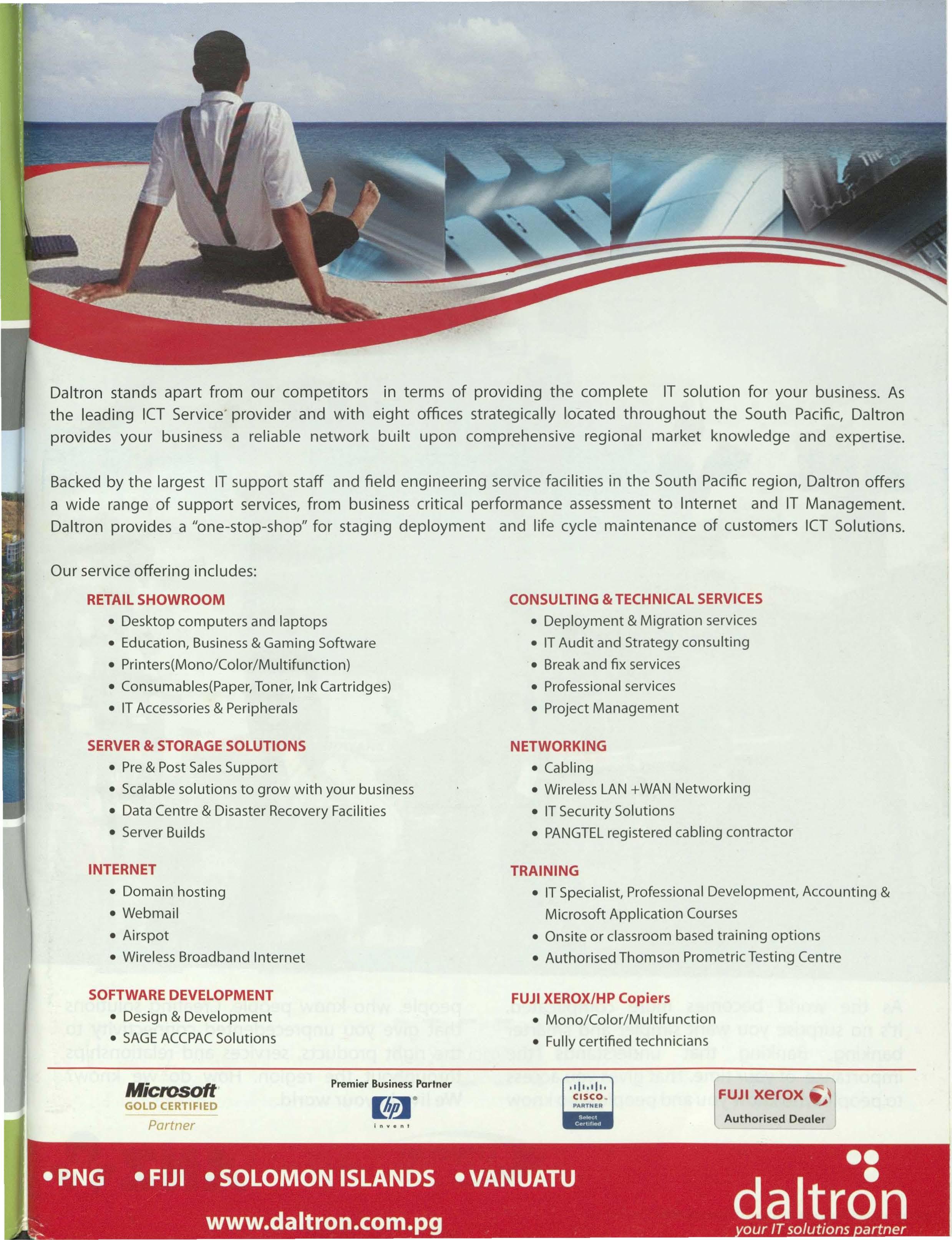
CONSULTING & TECHNICAL SERVICES
• Deployment & Migration services
• IT Audit and Strategy consulting
• Break and fix services
• Professional services
• Project Management
NETWORKING
• Cabling
• Wireless LAN +WAN Networking
• IT Security Solutions
• PANGTELregistered cabling contractor
TRAINING
• IT Specialist, Professional Development, Accounting & Microsoft Application Courses
• Onsite or classroom based training options
• Authorised Thomson Prometric Testing Centre
FUJI XEROX/HP Copiers
• Mono/Color/Multifunction
• Fully certified technicians
- '/
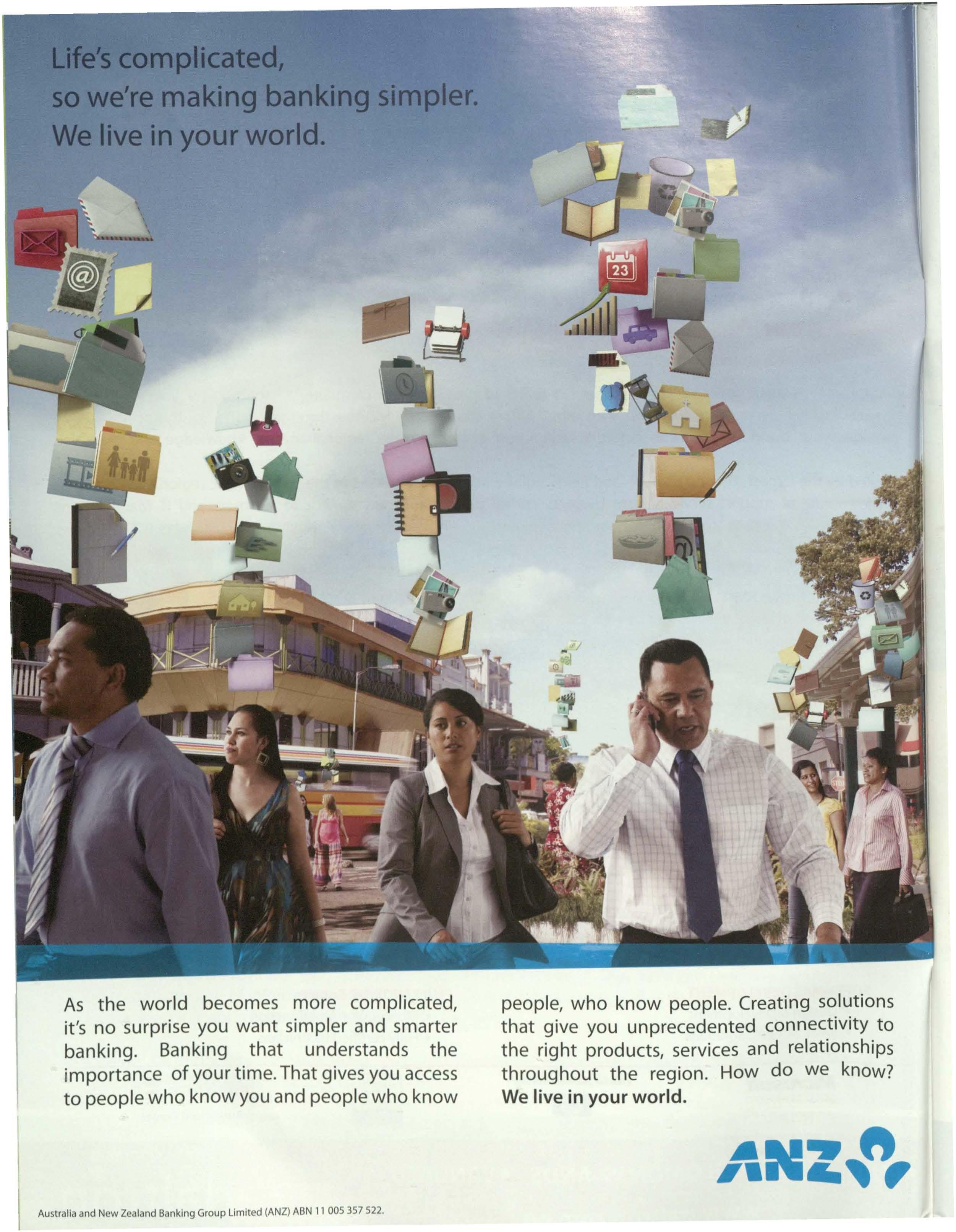
As the world becomes more complicated, it's no surprise you want simpler and smarter banking. Banking that understands the importance of your time. That gives you access to people who know you and people who know
people, who know people. Creating solutions that give you unprecedented connectivity to the right products, services and relationships throughout the region. How do we know? We live in your world.
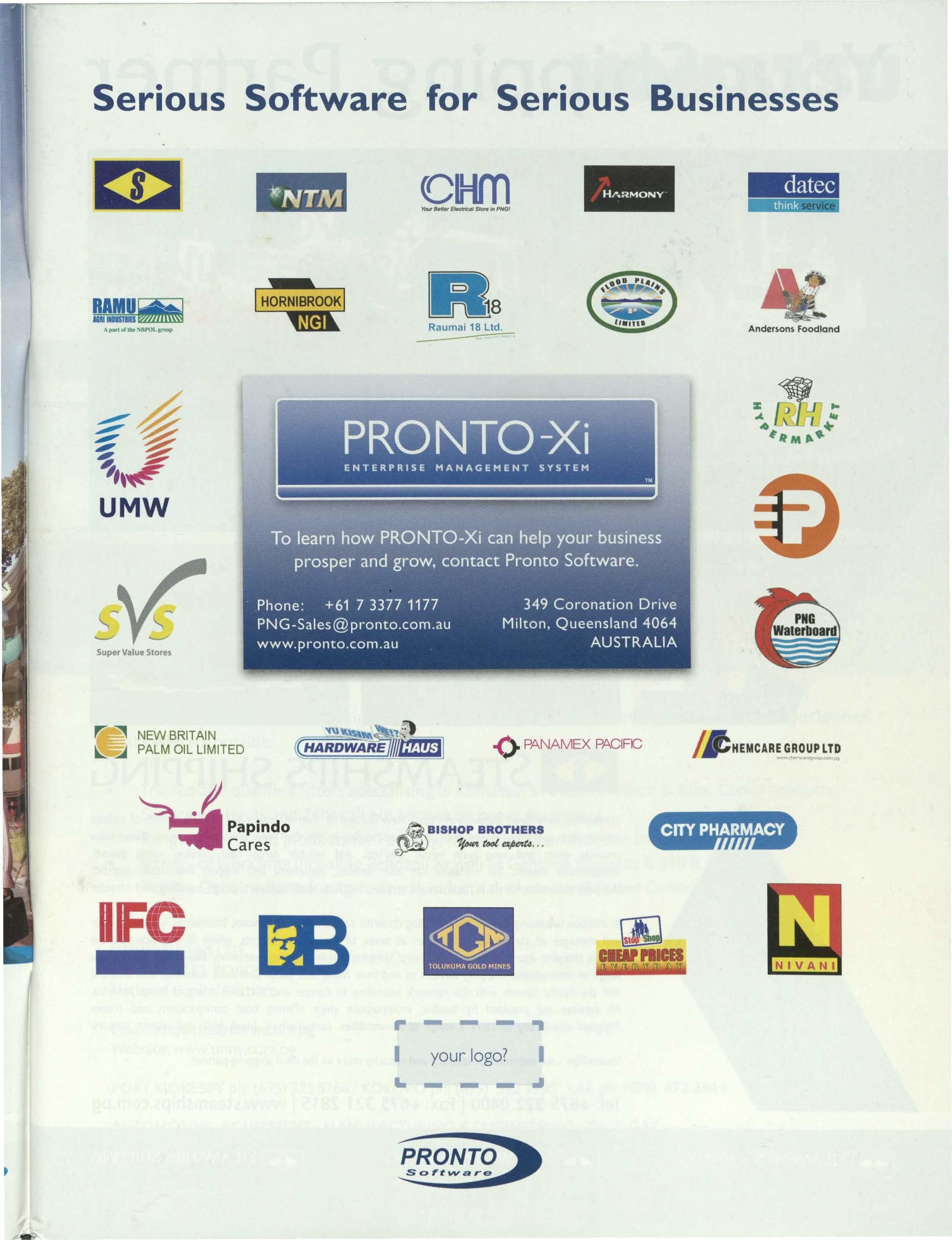

Steamshipshave been shipping in PapuaNew Guineafor over 90 years.We operate a fleet of coastal vesselsand specialisein estuarine and river trades in the Gulf and Western Provinces.Steamships provides short and long term vessel charters, and reliable cargo liner services using geared, multipurposevessels.The company can also develop, implement and support inter-modal logistics shipping solutions,linked to land based servicessuch as road transport, cargo handling and storage.
In additionto owningvesselsand providingdomesticcoastalshippingservices,Steamshipsis a shareholder and managerof stevedoringcompaniesat seven of the country's ports, where it also operatesthe largestshipping agencybusiness.As Swire Shipping'sin-countryrepresentative,Steamshipscan offer a range of internationalshippingservicesto and from North and South EastAsia,Australia,New Zealand and the PacificIslandswith the network extending to Europeand the west coast of North America. All services are provided by flexible, multipurpose ships offering hold configurations and cranes designedspecificallyto carry a range of commodities,containerised,break bulk and project cargoes.
Steamships - our experience,capabilityand capacitymakeusthe idealshippingpartner.

At UMW, we understand that business is all about people not only meeting, but exceeding expectations. That's why we provide:
• Trained and qualified fitters specialising in Komatsu, STIHL, FG Wilson & Atlas Copco products.
• Service contracts and 24hr call out service on heavy machinery.
• Range of parts and products for Forestry, Mining and Construction industries.
• Variety of lubricants including Pennzoil as well as Genuine Komatsu & STIHL oil.
• Perkins Genuine Parts for Agricultural, Industrial, Marine and Power Generation applications.
UMW NIUGINI LTD
P.O BOX 5243, BOROKO
National Capital District
Email: enquiries@umw.com.pg
Website: www.umw.com.pg
PORT MORESBY ph: (675) 325 5766 KOKOPO ph: (675) 982 9795 LAE ph: (675) 472 2444
It has been a very eventful and exciting year to date for the airline.We recentlycelebratedthe launch of our new aircraft livery and welcomed the arrivalof the first of two Q400 Next Generationaircraftand a second Boeing767.
The introduction of the OHSQ400will provide a significant improvement to the domestic scheduleson a number of routes including Gurneyand Goroka.With the variousstagesof the LNGproject,there will be increasednumber of people and cargo movements and having additional aircraftensuresAir Niugini is in a better position to handle such movements.
With the planned arrivalof a second OHSQ400 Next Generationaircraftin Septemberthis year, our fleet will have 20 aircraftwhich includestwo B767sand one B7S7.
Coinciding with the arrivalof the Q400,the airline launched its new aircraft liveryfeaturing a redesigned plumed bird of paradiseon the tailfin and extending to a swirl of gold and red on the fuselageof the aircraft symbolizingthe Birdof Paradisein flight. This new representationgivesAir Niugini a bold new look.
All aircraft in the fleet will soon carrythis new livery.As a national icon, the bird of paradiseon our livery continues to representand promote Air Niugini and PapuaNew Guineato our overseasdestinations.
Performancein the last quarter is pleasingwith the Australianroutes up on passengernumbers while all Asian routes showed positive growth particularlythe Port Moresby- Hong Kong sector.The introduction of a second Naritaservicehascontributed to passengergrowth for the year overalland both Honiaraand Nadi routes showed improvements.Domestic routes reflecteda steadygrowth over the comparable period in 2009.
DestinationsLoyaltyprogram is progressingwell with the next stageof development which allows membersto earn their points at the time of check- in.The revampedwebsite now displaysmore modern, airline like website featuresand will be updated on an ongoing basisby dedicated staff.
During August and Septemberthere are variouscultural eventstaking place around the country with the world famous HagenShow planned for August 14th and 15th.The equally well known GorokaShow and the CoffeeFestivalis also held around this time. Whether it's your first time in PapuaNew Guineaor you are a resident,treat yourselfto a cultural experienceat one of these events.
Our cabin crew is on board to ensureyou are looked after until you reachyour destination. And don't forget to select a gift for yourselfor that someone specialfrom the wide range of products from our"ParadiseWorld Boutique".
Thankyou for your continued patronage.
Enjoyyour flight
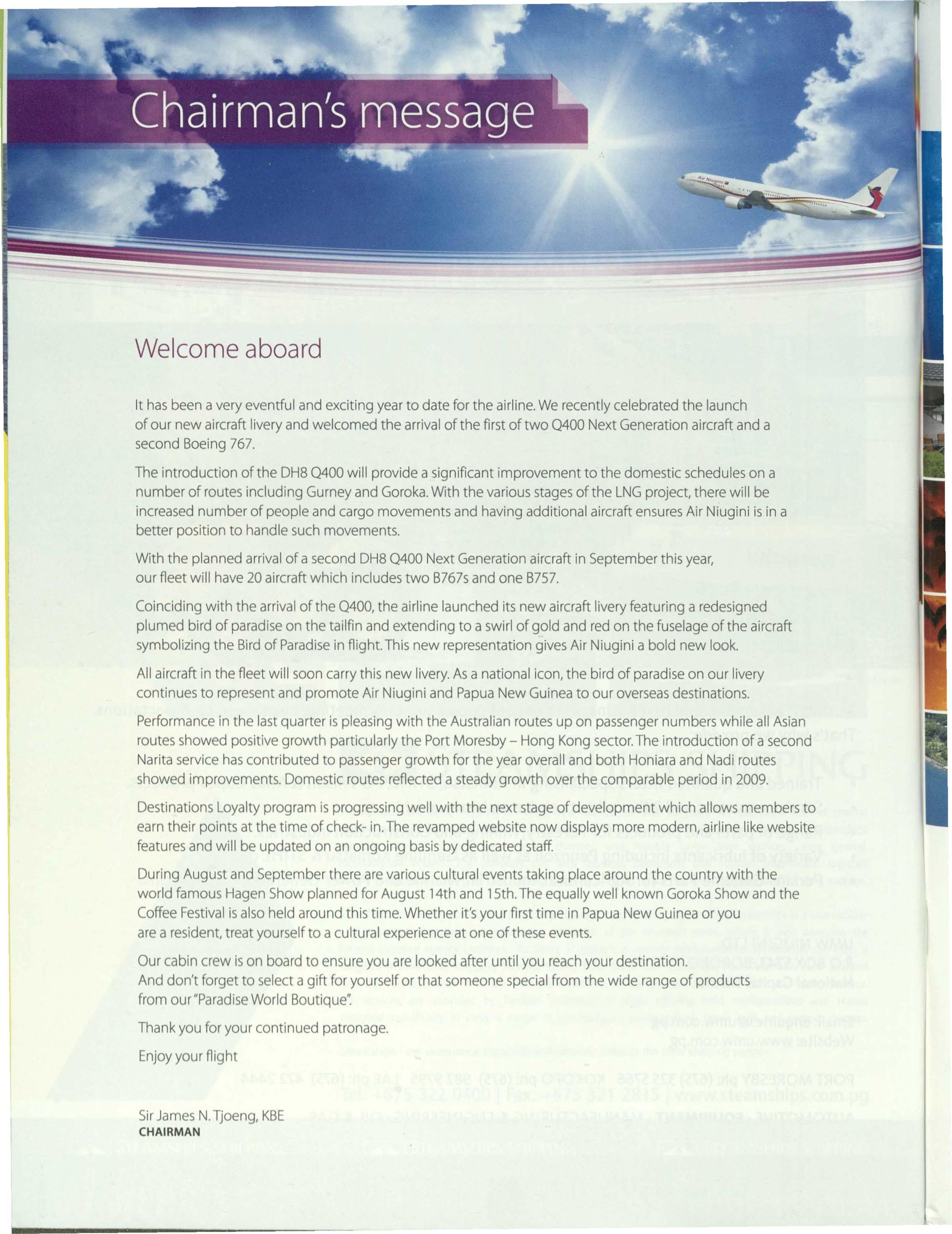
SirJamesN.Tjoeng, KBE CHAIRMAN
Hold your next convention at PNG's top Resort?
Unlike Port Moresby, we can offer diving, snorkelling, kayaks, sailing catamaran, tennis, marina, shopping, three restaurants, four pools, landscaped gardens with two lagoons and an unsurpassed absolute waterfront location. PNG's most stunning location for business, Madang
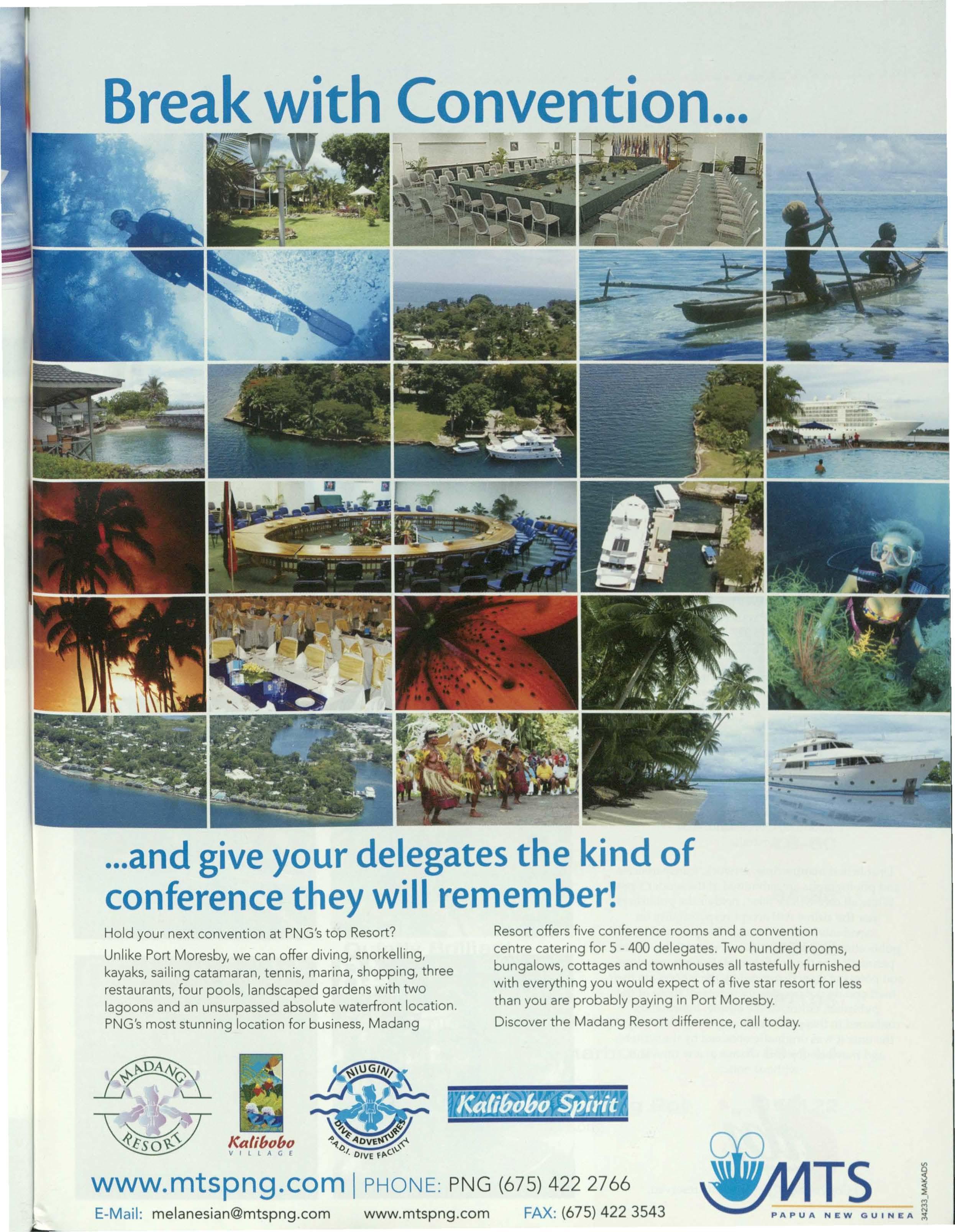
Resort offers five conference rooms and a convention centre catering for 5 - 400 delegates. Two hundred rooms, bungalows, cottages and townhouses all tastefully furnished with everything you would expect of a five star resort for less than you are probably paying in Port Moresby. Discover the Madang Resort difference, call today.
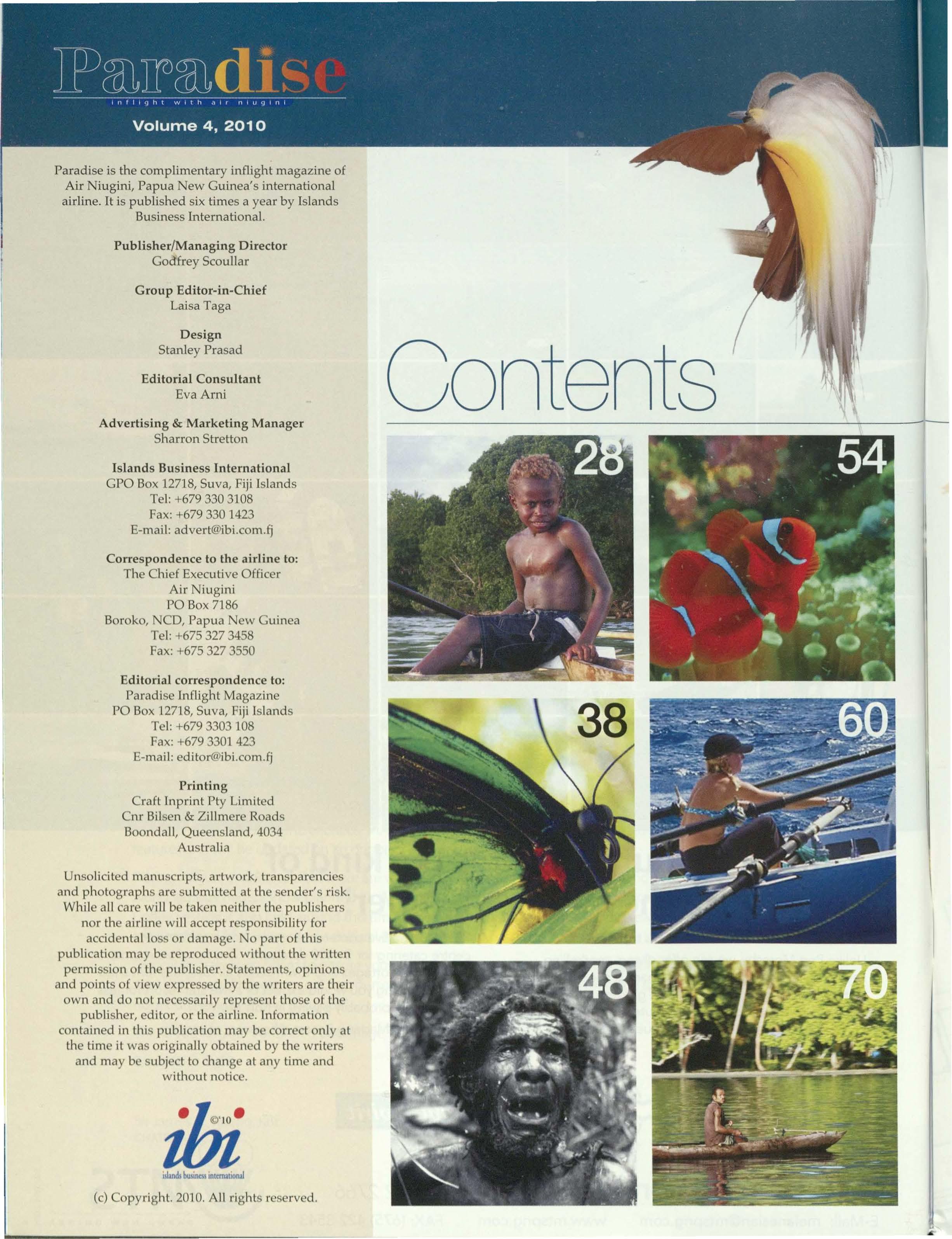
Paradise is the complimentary inflight magazine of Air Niugini, Papua New Guinea's international airline. It is published six times a year by Islands Business International.
Publisher/Managing Director
Godfrey Scoullar
Group Editor-in-Chief Laisa Taga
Design Stanley Prasad
Editorial Consultant Eva Ami
Advertising & Marketing Manager
Sharron Stretton
Islands Business International
GPO Box 12718, Suva, Fiji Islands
Tel: +679 330 3108
Fax: +679 330 1423
E-mail: advert@ibi.com.fj
Correspondence to the airline to: The Chief Executive Officer
AirNiugini
PO Box 7186
Boroko, CD, Papua New Guinea
Tel: +675 327 3458
Fax: +675 327 3550
Editorial correspondence to: Paradise lnflight Magazine
PO Box 12718, Suva, Fiji Islands
Tel: +679 3303108
Fax: +679 3301 423
E-mail: editor@ibi.com.fj
Printing
Craft In print Pty Limited
Cnr Bilsen & Zill mere Roads
Boondall, Queen land, 4034 Australia
Unsolicit d manuscripts, artwork, transparencie and photographs arc submitted at the sender's risk. While all car will be taken neither th publishers nor the airline will accept re ponsibility for accid ntal loss or damage. No part of this publication may be reproduced without the written permis ion of the publisher. Stal m nl , opinions and points of view expressed by the writers are their own and do not ncccs arily represent those of the publisher, editor, or the airlin Information contained in this publication may be correct only at the time it was originally obtained by the writer and may be ubje t lo hange al any time and without notice.

New Ireland Odyssey
5-day sea kayaking journey
Hunters of a Different Kind
Harvesting megapode eggs
Hargy Caldera
The exploring the unexplored
Golden Wahgi
When gold was discovered in the highlands
Underwater Magic
Pristine waters, WWII relics and scuba diving
'My Epic Pacific Crossing'
Roz Savage rows solo across the Pacific ocean
• On a Slow Boat
Getting to Milne Bay
Magic Music
Buruka Tau lights up the imagination
Trekking Tips
Making trekking Kokoda safe
Quietly Brilliant
East Coast Malaysia
Thrills & Spills
The annual Mt Garnet race and rodeo weekend
Beach-hopping the harbour
Sydney's sandy secrets
The Great Chinese Melting Pot
The vibrant and bustling Hong Kong

Brian Bell & Company Ltd is Papua New Guinea's premier retailer, wholesaler & distributor of quality brand products. Through our extensive branch & distribution network we offer a wide range of products & services to businesses, aid agencies, mining companies, government departments and individuals throughout Papua New Guinea.

Brian Bell Projects Division, 50 year
PNG experience offers the complete service - from design to fit-out for Restaurants
Mining Sites
Hotels
Clubs
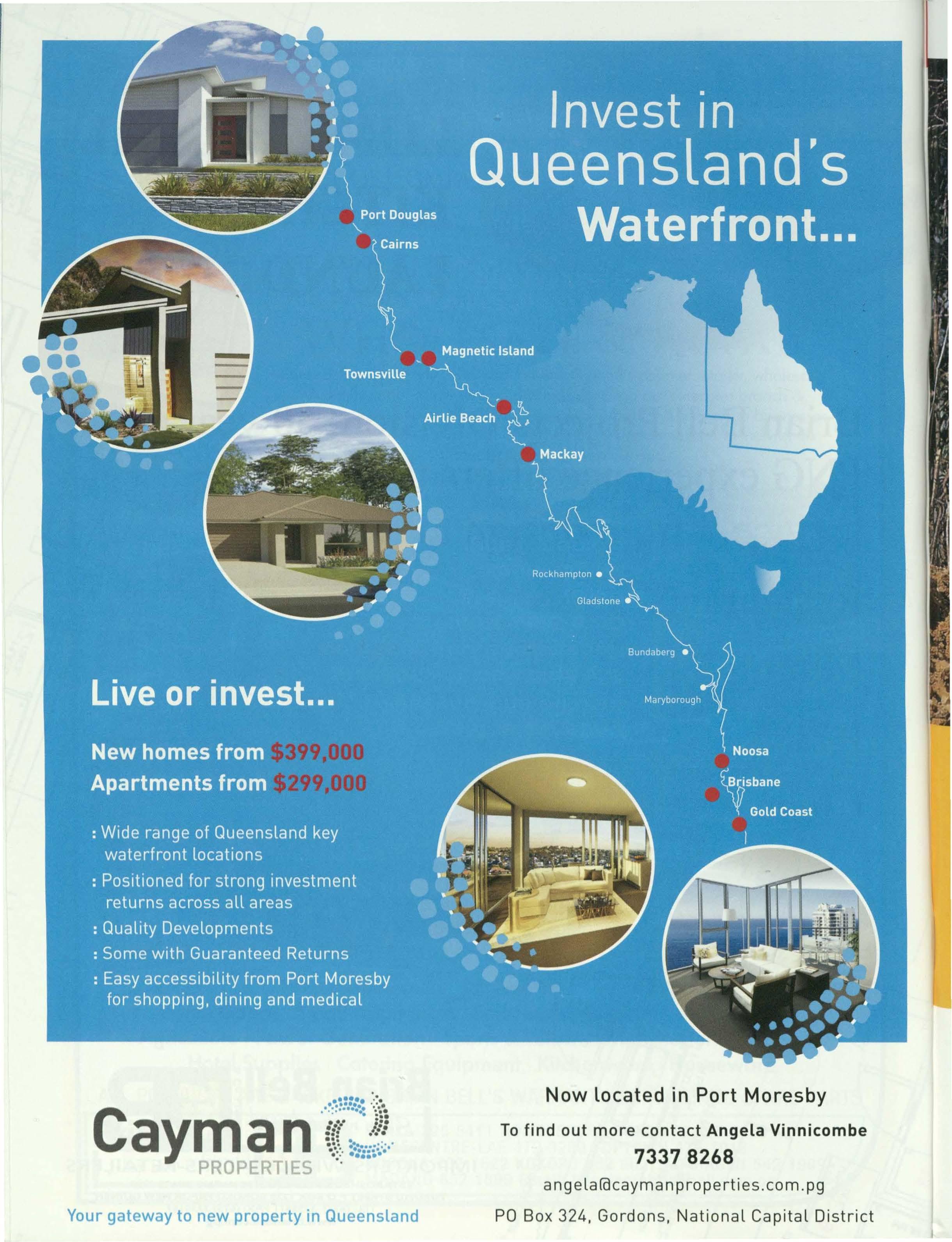
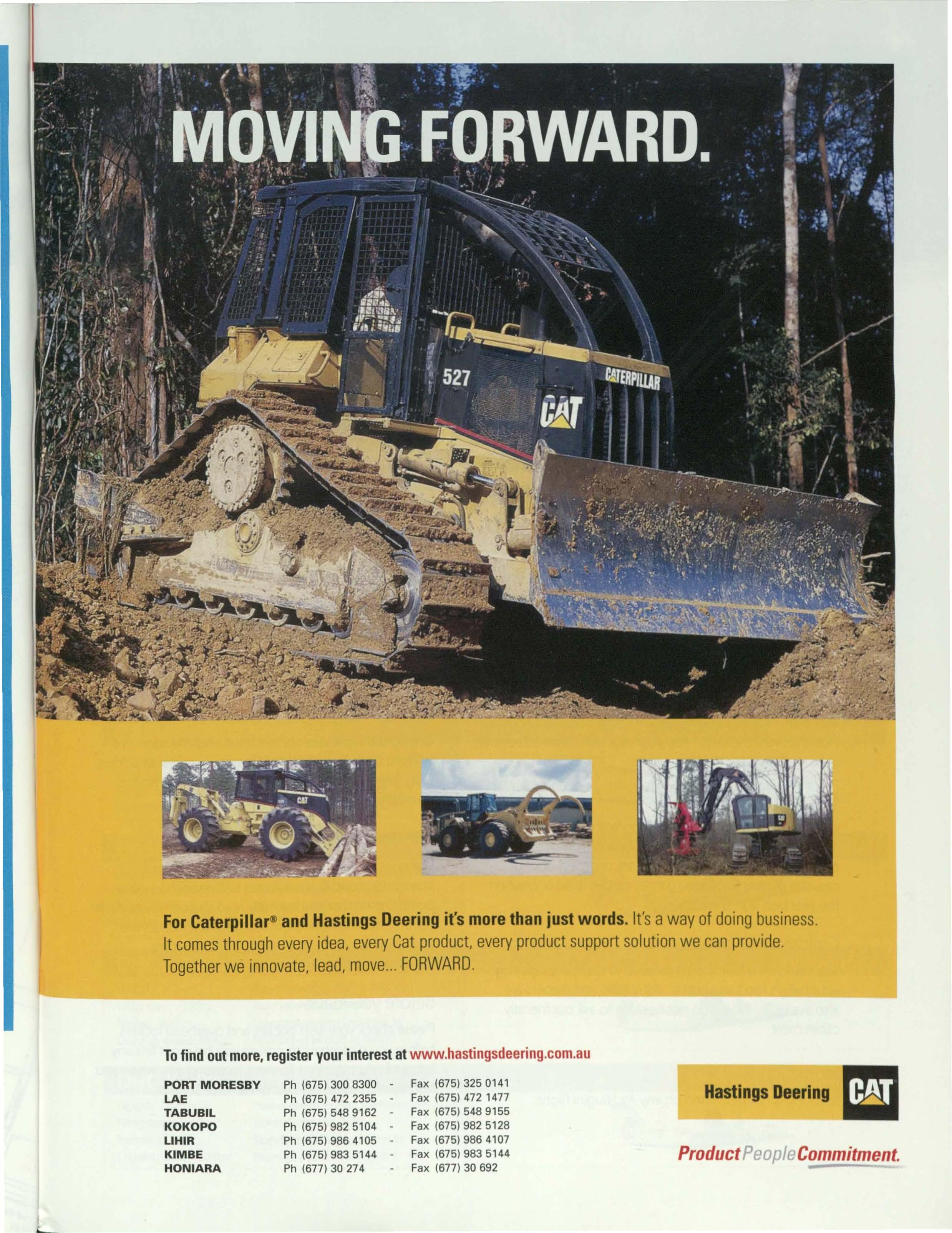
If there is anything our cabin crew can assistyou with during your flight, pleasedo not hesitateto askthem.
Pleaseensurethat your carry on luggage is placed in the overheadlockeror under the seatin front of you.
Ensurethat your seatis in the upright position during takeoff and landing.Foldingtables must be returned to their original position in the seat backor the armrest.
Your seatbelt must be securelyfastenedduring take off and landing or wheneverthe seatbelt sign is on. When the seat belt sign is off you may move about the cabin as necessary. Howeverwhile seated,keep your seat belt fastenedsecurely in caseof unexpectedturbulence.
Cellulartelephones,TV receiversor radio controlled devices are not to be usedat any time on board an aircraft.Electronic devicessuch as portable computers,compact discsor cassetteplayersand video gamescan be used only when the seatbelt sign is switched off.
The cabin crew will also be pleasedto assistin preparing your baby'sfood and bottle. Babyfood and diapersare alsoavailable. Pleasedo not hesitateto askour friendly cabin crew.
Smoking is not permitted on any Air Niugini flight.

A selectionof moviesand music including classical, modern, country and local are availableon international services.Programmescan be found in the in-flight entertainment section of this magazine.
On Internationalflights, pillows and blanketsare available on requestfrom our cabin crew.
Our in-flight* mealshave been speciallypreparedfor your enjoyment. If you requirea vegetarianmeal or you are on a specialdiet, child or baby food, pleaseinform us when making your reservation.
During the flight take sometime to look through our In-flight Duty Freebrochure located in your seatpocket. Duty free purchasescan be made after Meal Service. All major credit cardsare accepted.
During your flight, our cabin crew will distribute Immigration and Customforms before each landing point. Ensurethat you carefullyreadand complete these documents and havethem readyfor inspectionwith your passportat the Immigration and Customs arrivalcounters.
Pleasecheckyour seat pocket and overheadlockers beforeyou disembarkto ensureyou have not left any items of value.We look forward to seeingyou when you next fly with us on our Birdof ParadiseService.
Length: 59.94m
Wing span: 47.51m
Range: 8100km
Cruising speed: 851kph
Length: 41.3m
Wing span:47.lm
Range: 4700km
Cruising speed: 857kph

Length: 35.528m
Wing span: 28.076m
Range: 3000km
Cruising speed: 780kph
Length: 32.Bm
Wing span: 28.4m
Range: 3000km
Cruising speed: 670kph
Length: 25.7m
Wing span: 24.4m
Range: 1100km
Cruising speed: 5/0kph
Length: 22.25m
Wing span: 25.89m
Range: 1800km
Cruising speed: 550kph
Length: 22.25m
Wing span: 25.89m
Range: 1800km
Cruising speed: 500kph
Power plant: 2 x PW4000
Normal altitude: 11000·12000m
Standard seating capacity:274
Number of aircraft in fleet: 2
Power plant: 2x RollsRoyceRB211
Normal altitude: 11000-12000m
Standard seating capacity: 184
Number of aircraft in fleet: 7
Power plant: 2 x RollsRoyceTay650
Normal altitude: 11,000m
Standard seating capacity: 98
Number of aircraft in fleet: 6
Power plant: 2x Pratt&WhitneyPWIS0A
Normal altitude: 7500m
Standard seating capacity: 74
Number of aircraft in fleet: 2
Power plant: 2 x Pratt& WhitneyPW123E
Normal altitude: 7500m
Standard seating capacity: 50
Number of aircraft in fleet: 3
Power plant: 2 x Pratt& WhitneyPWI230
Normal altitude: 7600m
Standard seating capacity: 36
Number of aircraft in fleet: 3
Power plant: 2 x Pratt& WhitneyPW/21
Normal altitude: 7600m
Standard seating capacity: 36
Number of aircraft in fleet: 2
Theseexercisesare designed to encourage a safe way to enjoy movement and stretch certain muscle groups that can become stiff as a result of long periods of sitting.They may be effective in increasingthe body's circulation and massagingthe muscles. We recommend you do these exercisesfor three or
four minutes every hour and occasionallyget out of your seat and walk down the aislesif conditions allow. Eachexerciseshould be done with minimal disturbance to other passengers.None of the following should be performed if they cause pain or cannot be done with ease.
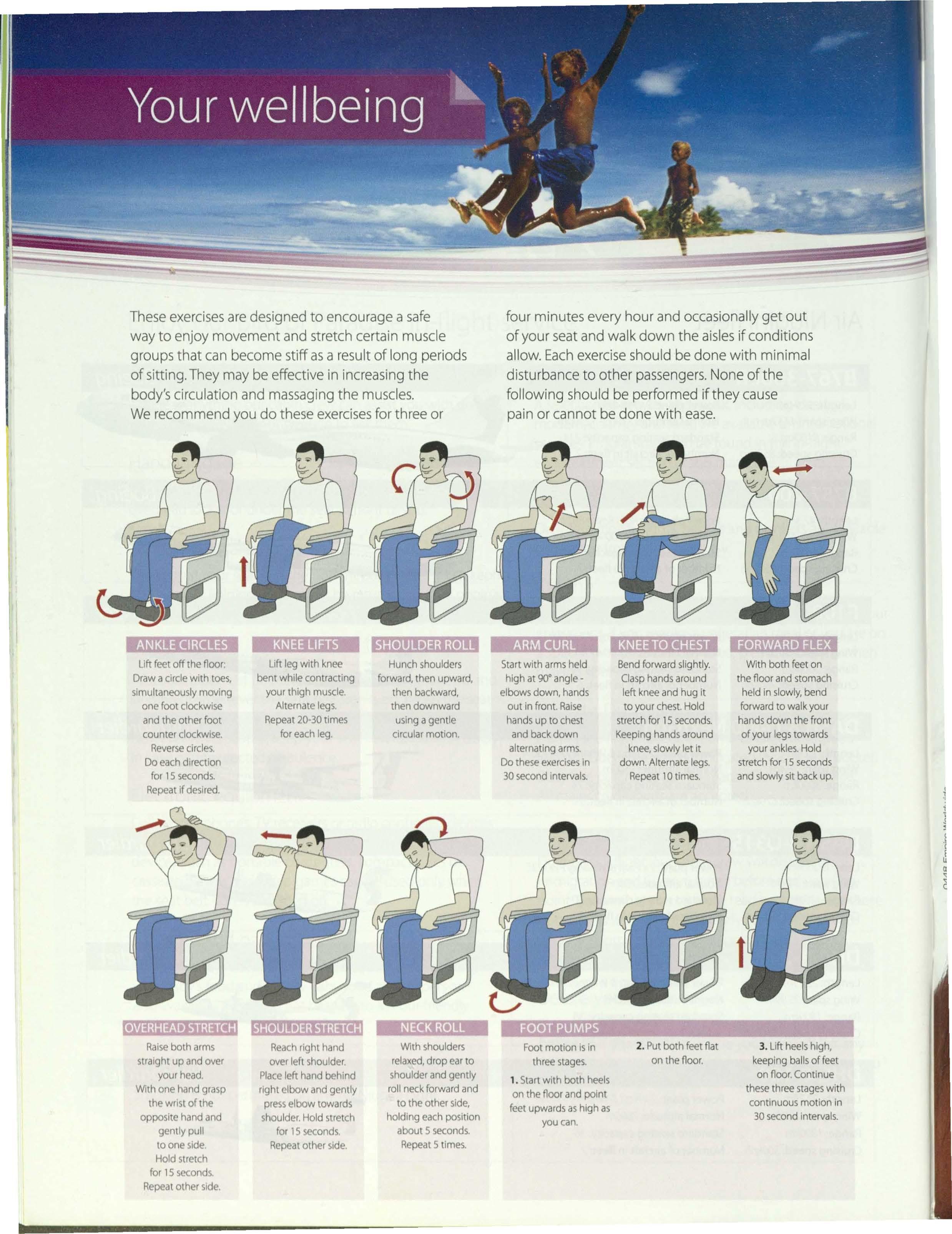
Lift feet off the floor: Drawa circlewith toes, simultaneouslymoving one foot clockwise and the other foot counterclockwise. Reversecircles. Do eachdirection for 15seconds. Repeatif desired.
Lift leg with knee Hunchshoulders bent while contracting forward,then upward, your thigh muscle. then backward, Alternatelegs. then downward Repeat20-30times usinga gentle for eachleg. circularmotion.
Startwith armsheld Bendforwardslightly. With both feet on high at 90•angle- Clasphandsaround the floor and stomach elbowsdown, hands left kneeand hug it held in slowly,bend out in front.Raise to your chest.Hold forwardto walkyour handsup to chest stretchfor 1S seconds. handsdown the front and backdown Keepinghandsaround of your legstowards alternatingarms. knee,slowlylet it your ankles.Hold Do theseexercisesin down.Alternatelegs. stretchfor 15seconds 30 secondintervals. Repeat10times. and slowlysit backup.
Raiseboth arms straightup and over your head. With one handgrasp the wrist of the oppositehandand gently pull to one side. Holdstretch for 15seconds. Repeatother side.
Reachright hand With shoulders overleft shoulder. relaxed,drop earto Placeleft hand behind shoulderand gently right elbow and gently roll neckforwardand presselbow towards to the other side, shoulder.Holdstretch holdingeachposition for 1S seconds. about S seconds. Repeatother side. Repeat5 times.
Footmotion is in 2. Putboth feet flat 3. Lift heelshigh, threestages. on the noor. keepingballsof feet 1. Startwith both heels on floor.Continue on the floor and point thesethreestageswith feet upwardsashigh as continuousmotionin 30secondintervals. you can.
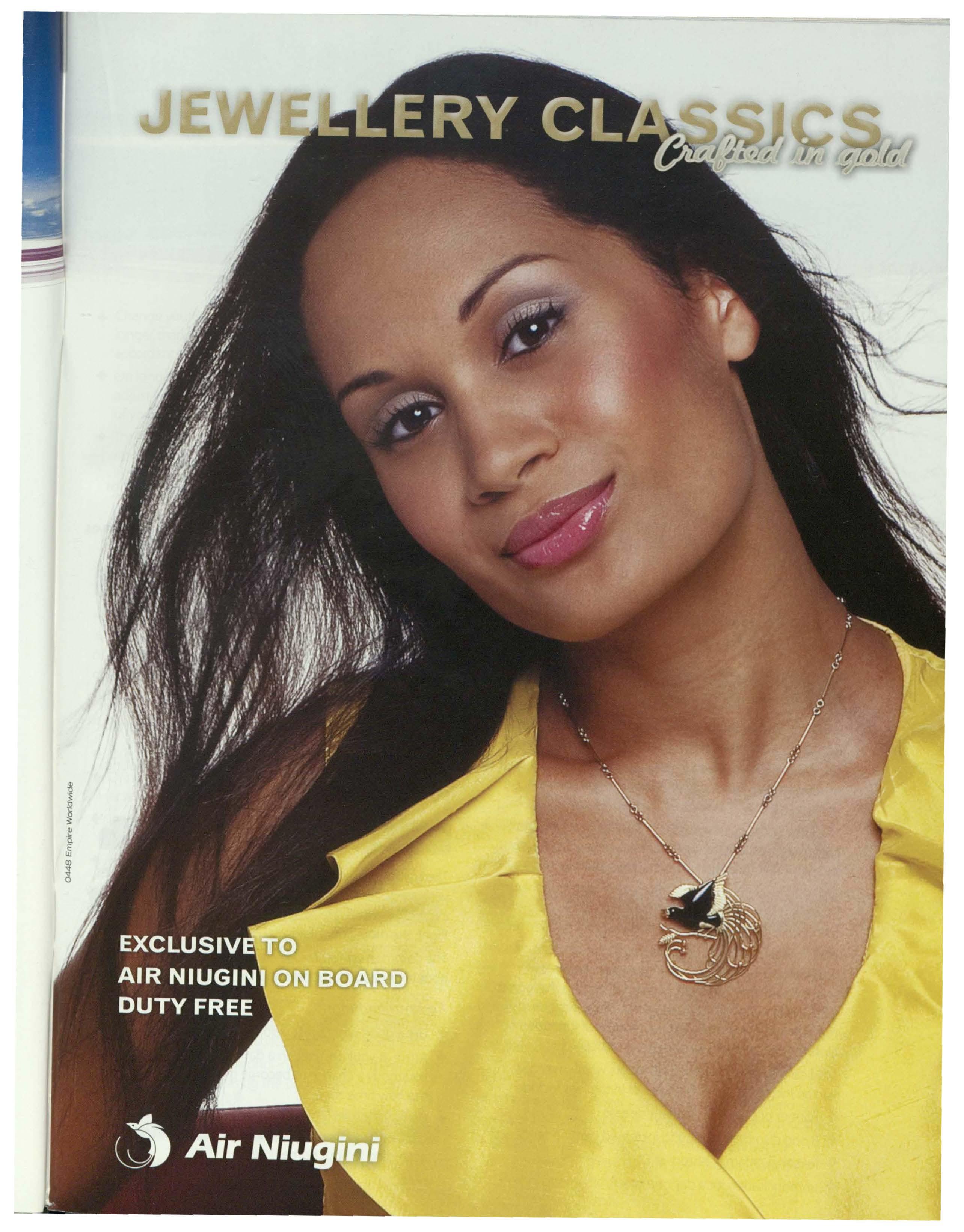
At Air Niugini we care about your comfort and safety. We have included the following information about your health in-flight that we hope you will find helpful and useful.
When you are flying you can be seatedand be inactive for long periods of time. The environment can be low in humidity and pressurisedup to an altitude of 2240 metres above sealevel.Unlike other forms of transportation, air travel allows for rapid movement acrossmany time zones,causinga disruption to the body's"biological clock''. Although these unique factors do not pose a health or safety threat to most passengers,there are guidelinesyou can follow that will improve your comfort level,during and after a flight. We hope the following recommendationswill help you have a more pleasantflight today and in the future.
When you're sitting upright in a stationaryposition for a long period ohime, severalthings can happen.
The central blood vesselsin your legs can be compressed, making it more difficult for the blood to get backto your heart.
The long inactivity of your body musclesin this position can result in muscletension, back achesor a feeling of excessivefatigue during, or even after,your flight.
A stationaryposition inhibits the normal body mechanism for returning fluid to your heart,and gravity can cause the fluid to collect in your feet.This resultsin swollen feet after a long flight.
Studieshave concluded that prolonged immobility may be a riskfactor in the formation of clots in the legs (DVT- deep vein thrombosis).Particularmedication and medical conditions may increasethe riskof formation of clots if associatedwith prolonged immobility.
Medical researchindicatesthat factorswhich may give you an increasedriskof blood clots in the legs include:
Formeror current malignant disease
Blood disordersleading to increasedclotting tendency
Personalor family history of DVT
Immobilisation for a day or more
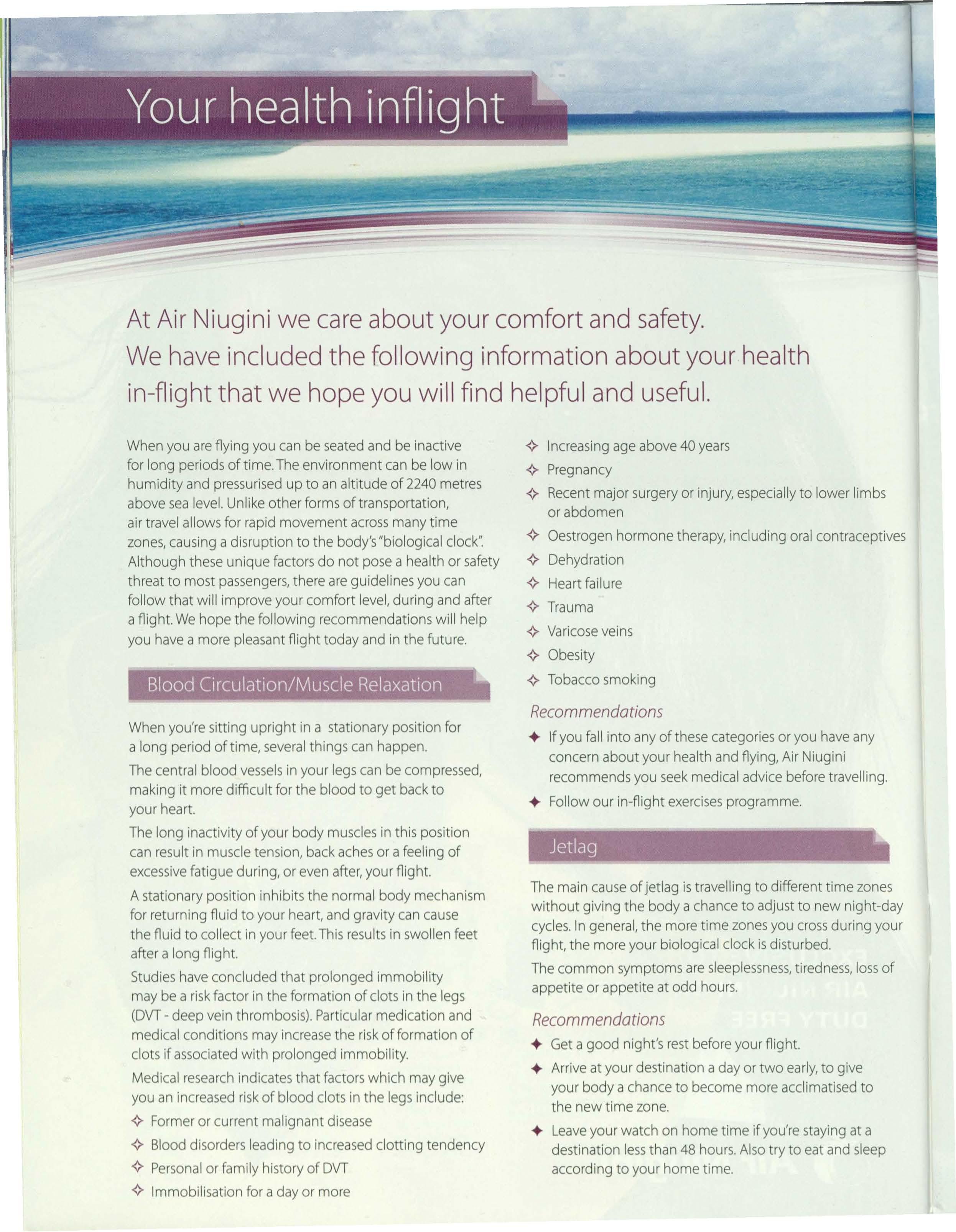
Increasingage above 40 years
Pregnancy
Recentmajor surgeryor injury,especiallyto lower limbs or abdomen
Oestrogenhormone therapy,including oral contraceptives
Dehydration
Heartfailure
Trauma
Varicoseveins
Obesity
Tobaccosmoking
Recommendations
If you fall into any of these categoriesor you have any concern about your health and flying, Air Niugini recommendsyou seekmedical advice before travelling. Follow our in-flight exercisesprogramme.
The main causeof jetlag is travelling to different time zones without giving the body a chance to adjust to new night-day cycles.In general,the more time zonesyou crossduring your flight, the more your biological clock is disturbed. The common symptoms are sleeplessness,tiredness,lossof appetite or appetite at odd hours.
Get a good night's rest before your flight.
Arrive at your destination a day or two early,to give your body a chanceto become more acclimatisedto the new time zone.
Leaveyour watch on home time if you're staying at a destination lessthan 48 hours.Alsotry to eat and sleep accordingto your home time.
Changeyour watch to the local time if your stayis longer than 48 hours,and try to eat and sleepin accordancewith the local time.
On longer stays,try to preparein advance, adjustyour meal and resttimes to be closerto those of your destination.
Try some light exercise- go for a briskwalk,or do some reading if you can't sleepafter arrivalat your destination. It generallytakesthe body's biological clock approximatelyone day to adjust per time zone crossed.
Flydirect to minimise flight time. Thisallowsyou to relaxmore upon arrival.
Humidity levelsof lessthan 25 percent are common in the cabin.This is due to the extremelylow humidity levels of outside air supplied to the cabin.The low humidity can causedrying of the nose,throat, eyesand it can irritate contact lenswearers.
Recommendations
Drink water or juices frequently during the flight
Drink coffee,tea and alcohol in moderation.Thesedrinks actsas diuretics,increasingthe body'sdehydration.
Removecontact lensesand wear glassesif your eyesare irritated.
Usea skin moisturiserto refreshthe skin.
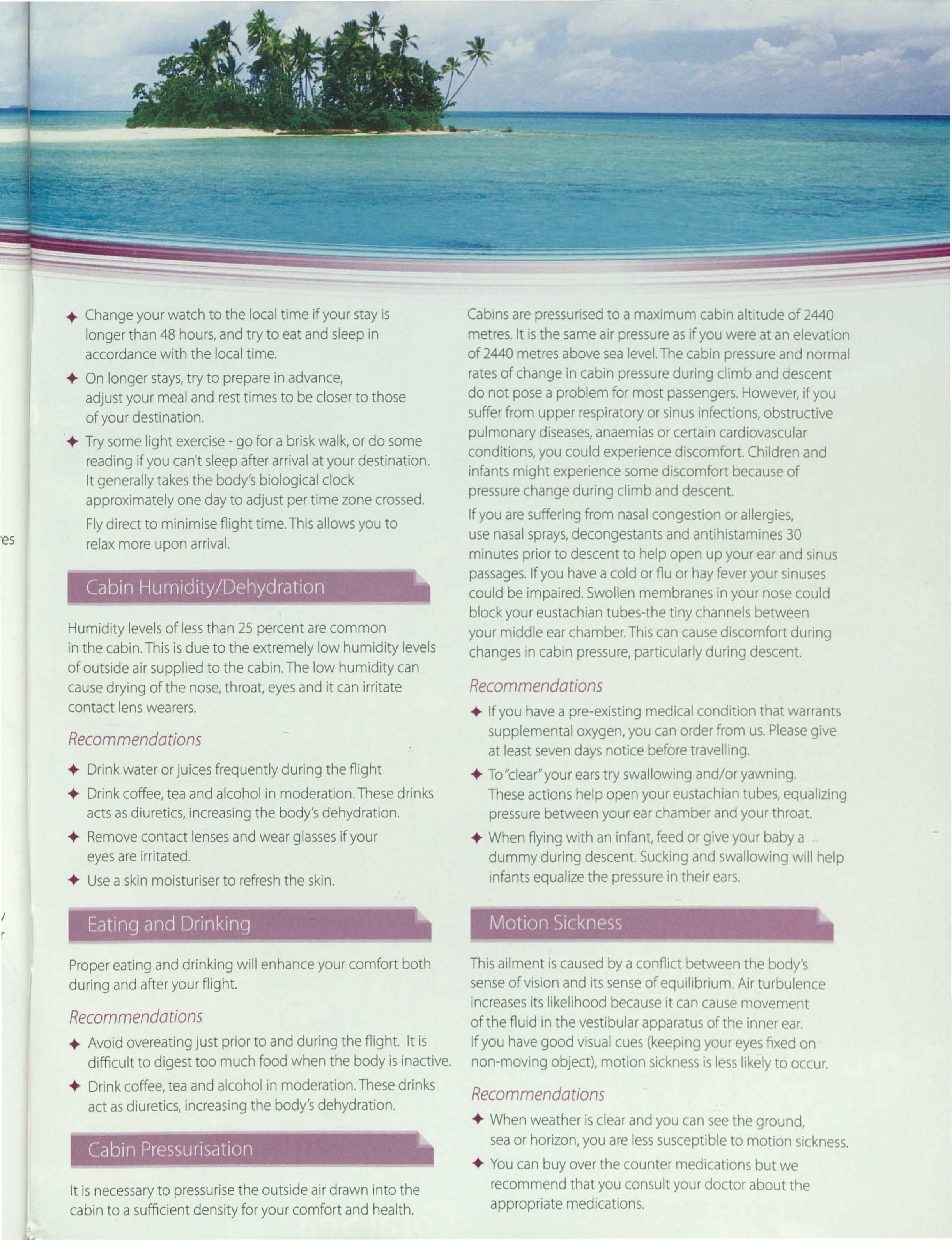
Propereating and drinking will enhanceyour comfort both during and after your flight.
Recommendations
Avoid overeatingjust prior to and during the flight. It is difficult to digest too much food when the body is inactive.
Drink coffee,tea and alcohol in moderation.Thesedrinks act as diuretics,increasingthe body'sdehydration.
It is necessaryto pressurisethe outside air drawn into the cabin to a sufficient density for your comfort and health.
Cabinsare pressurisedto a maximum cabin altitude of 2440 metres.It is the sameair pressureas if you were at an elevation of 2440 metresabove sealevel.The cabin pressureand normal ratesof change in cabin pressureduring climb and descent do not pose a problem for most passengers.However,if you sufferfrom upper respiratoryor sinusinfections,obstructive pulmonary diseases,anaemiasor certain cardiovascular conditions,you could experiencediscomfort.Childrenand infants might experiencesome discomfort becauseof pressurechange during climb and descent.
If you are sufferingfrom nasalcongestion or allergies, use nasalsprays,decongestantsand antihistamines30 minutes prior to descentto help open up your ear and sinus passages.If you havea cold or flu or hay feveryour sinuses could be impaired.Swollenmembranesin your nosecould block your eustachiantubes-the tiny channelsbetween your middle ear chamber.Thiscan causediscomfort during changesin cabin pressure,particularlyduring descent.
If you havea pre-existingmedicalcondition that warrants supplementaloxygen,you can order from us.Pleasegive at leastsevendaysnotice beforetravelling.
To"clear"your earstry swallowingand/or yawning. Theseactions help open your eustachiantubes,equalizing pressurebetween your ear chamber and your throat.
When flying with an infant,feed or give your baby a dummy during descent.Suckingand swallowing will help infantsequalizethe pressurein their ears.
Thisailment is causedby a conflict between the body's senseof vision and its senseof equilibrium. Air turbulence increasesits likelihood becauseit can causemovement of the fluid in the vestibularapparatusof the inner ear. If you havegood visualcues (keepingyour eyesfixed on non-moving object), motion sicknessis lesslikely to occur.
When weather is clearand you can seethe ground, seaor horizon,you are lesssusceptibleto motion sickness. Youcan buy over the counter medicationsbut we recommendthat you consult your doctor about the appropriate medications.

AIR NIUGINI OFFICES -
AustraliaWide local Call:1300361 380
Sydney SomareHouse
100ClarenceStreet POBox5293SydneyNSW2001
AustraliaTel:(61 2) 9290 1544
Fax:(61 2) 9290 2026

Tokyo
6th FloorChiyodaKaikan 1-6-17KudanMinami
Chiyoda-KuTokyo102-0074Japan
Tel:(81)3 52163555
Fax:(81)3 5216 3556
Email:info@air-niugini.co.jp
Website:www.air-niugini.co.jp
Email:sales.sydney@airniug1n1.com.pg
Brisbane level 4, 99 CreekStreet GPOBox2216BrisbaneQLD4001
AustraliaTe/:(61 7) 32211S44
Fax:(61 7) 32200040
Email:salesbrisbane@airniugini.com.pg
Cairns
CairnsCorporateTower,GroundFloor 1S lake StreetCairnsQLD4870Australia
Tel:(61 7) 4031 1611
Fax:(61 7) 4031 3402
Email:sales.cairns@airniug1ni.com.pg
Manila
3rd Floor
FortuneOffice Building 160LegaspiStreet,LegaspiVillage, MakatiCity,Philippines
Tel:(63 2) 891 3339/40/41
Fax:(63 2) 891 3393
Email:sales.manila@airniugini.com.pg
Auckland/CookIslands
WalshesWorld
Tel:(64)93793708
Fax:(64)93022420
Fiji
DiscountFlight Centre
Tel:(679)331 7870
Fax:(679)331 7873
Frankfurt
PacificDream
Tel:(49)6%3 4095
Fax:(49)6%3 1332
Email:info@pngtourism.de
Hong Kong
TamWing Kun HoldingsLtd
Tel:(852)2527 7098
Fax:(852)25277026
Honiara
TravelIndustryServices
Tel:(67)720336
Fax:(67)723887
Email:kevin@gts.com.sb
Italy
SpazioSri
Tel:(39)64820280
Fax:(39)64880862
Email:sales.rome@a1rniugini.com.pg
Jakarta
P.T.Ayuberga
Tel:(62)218356214-217
Fax:(62)21 835 3937
KualaLumpur
Abadi AviationServices
Tel:(603)21484313
Fax:(603)21412322
Email:pxkul@abadi.com.my
LosAngeles
PNGTourism
Tel:(1) 949 7525440
Fax:(1) 94947163741
Email:sales.usa@airniugini.com.pg
PortVila
VanuatuTravelServicesLtd
Tel:(67)822 2836
Fax:(67)823 3583
Seoul
SharpInc
Tel:(82)27347100
Fax:(82)27347108
Singapore DeksAir
1O1ThomsonRoad
# 11-03United SquareSingapore 307591
Tel:(65)62504868
Fax:(65)62533425
Email:airng.sg@pacific.net.sg
Taipei
ChaMayTravelService
Tel:(88)6 2500 7811
Fax:(88)6 25007970
United Kingdom
Flight Directors
Tel:(44)087024 00 767
Fax:(44)087024 02 208
Email:airniugini@flightdirectors.com
Port Moresby Kavieng Madang Tabubil
POBox7186 Boroko Administration, POBox 140Madang POBox545Tabubil
SalesDomestic& International
Reservations& Cargo
Tel:327 3444 Fax:327 3308 Tel:984 2135
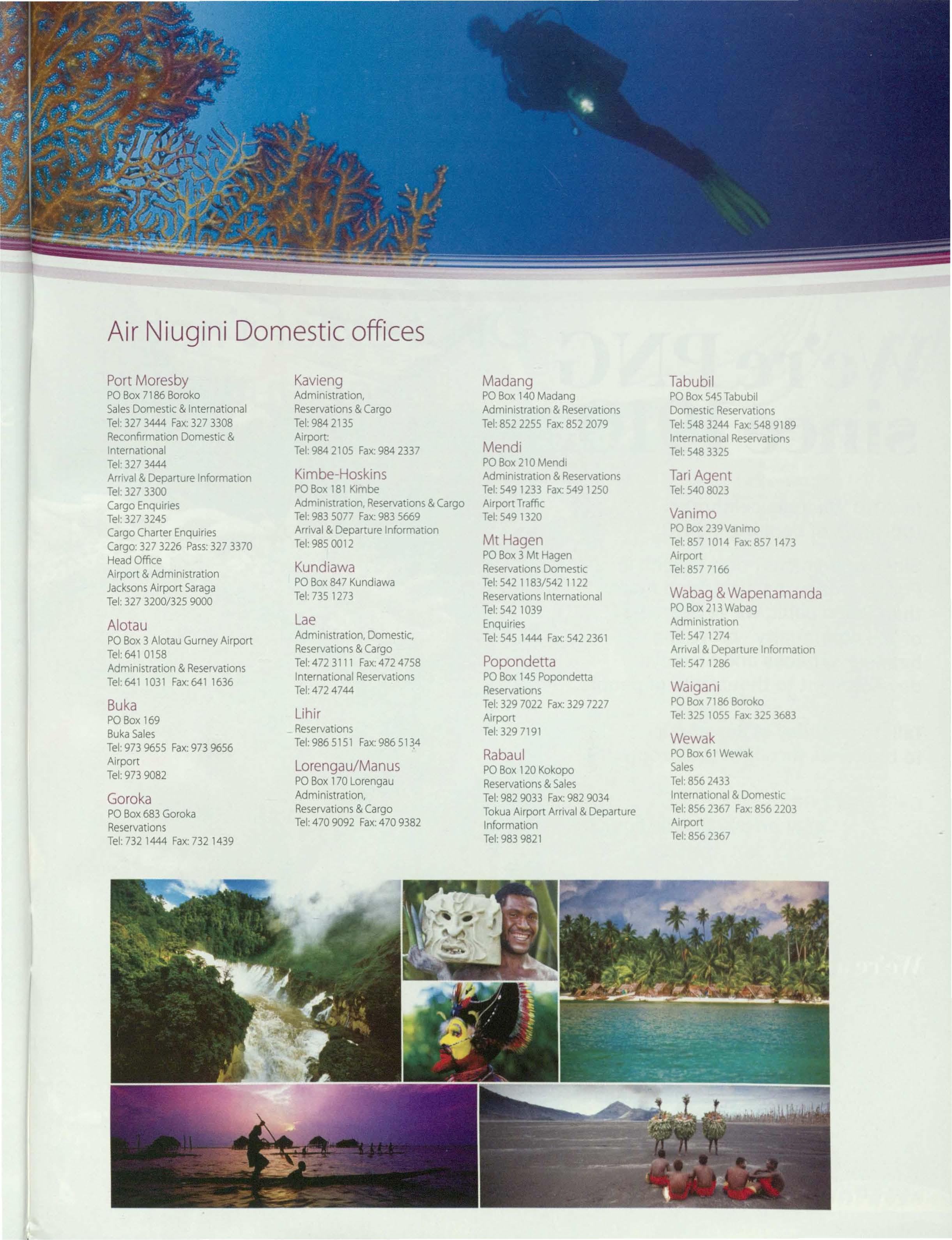
Administration& ReseNations DomesticReseNations
Tel:852 2255 Fax:852 2079
Tel:548 3244 Fax:548 9189
ReconfirmationDomestic& Airport: InternationalReseNations
International Tel:984 2105 Fax:984 2337 Mendi
Tel:327 3444
Arrival& DepartureInformation Kimbe-Hoskins
Tel:327 3300 POBox 181Kimbe
CargoEnquiries
Tel:548 3325
POBox210 Mendi
Administration& ReseNations TariAgent
Tel:549 1233 Fax:549 1250
Tel:327 3245 Tel:983 5077 Fax:983 5669 Tel:549 1320
Tel:540 8023
Administration,ReseNations& Cargo Airport Traffic Vanimo
CargoCharterEnquiries Arrival& DepartureInformation POBox239Vanimo
Cargo:327 3226 Pass:327 3370 Tel:985 0012 Mt Hagen
HeadOffice Kundiawa
Airport & Administration
JacksonsAirport Saraga POBox847 Kundiawa
Tel:327 3200/3259000 Tel:735 1273
Alotau
Tel:8571014 Fax:8571473
POBox3 Mt Hagen Airport
ReseNationsDomestic Tel:8577166
Tel:542 1183/5421122
ReseNationsInternational Wabag& Wapenamanda Lae
Tel:542 1039 POBox213Wabag
Enquiries Administration
POBox3 Alotau GurneyAirport Administration,Domestic, Tel:545 1444 Fax:542 2361
Tel:547 1274
Tel:641 0158 Reservations& Cargo Arrival& DepartureInformation
Administration& ReseNations Tel:472 3111 Fax:472 4758 Popondetta
Tel:547 1286
Tel:641 1031 Fax:641 1636 InternationalReseNations POBox 145Popondena Tel:472 4744 ReseNations Waigani
Buka Lihir
Tel:329 7022 Fax:329 7227 POBox7186Boroko
POBox 169 Airport
BukaSales Reservations Tel:329 7191
Tel:325 1055 Fax:325 3683
Tel:973 9655 Fax:973 9656 Tel:986 5151 Fax:986 5q4 Wewak Airport Rabaul POBox61 Wewak
Tel:973 9082
Lorengau/Manus POBox 120 Kokopo Sales POBox 170Lorengau Reservations& Sales Tel:856 2433
Goroka Administration, Tel:982 9033 Fax:982 9034 International& Domestic
POBox683 Goroka Reservations& Cargo TokuaAirport Arrival& Departure Tel:856 2367 Fax:856 2203
Reservations Tel:470 9092 Fax:470 9382 Information Airport
Tel:856 2367
Tel:983 9821
Tel:732 1444 Fax:732 1439
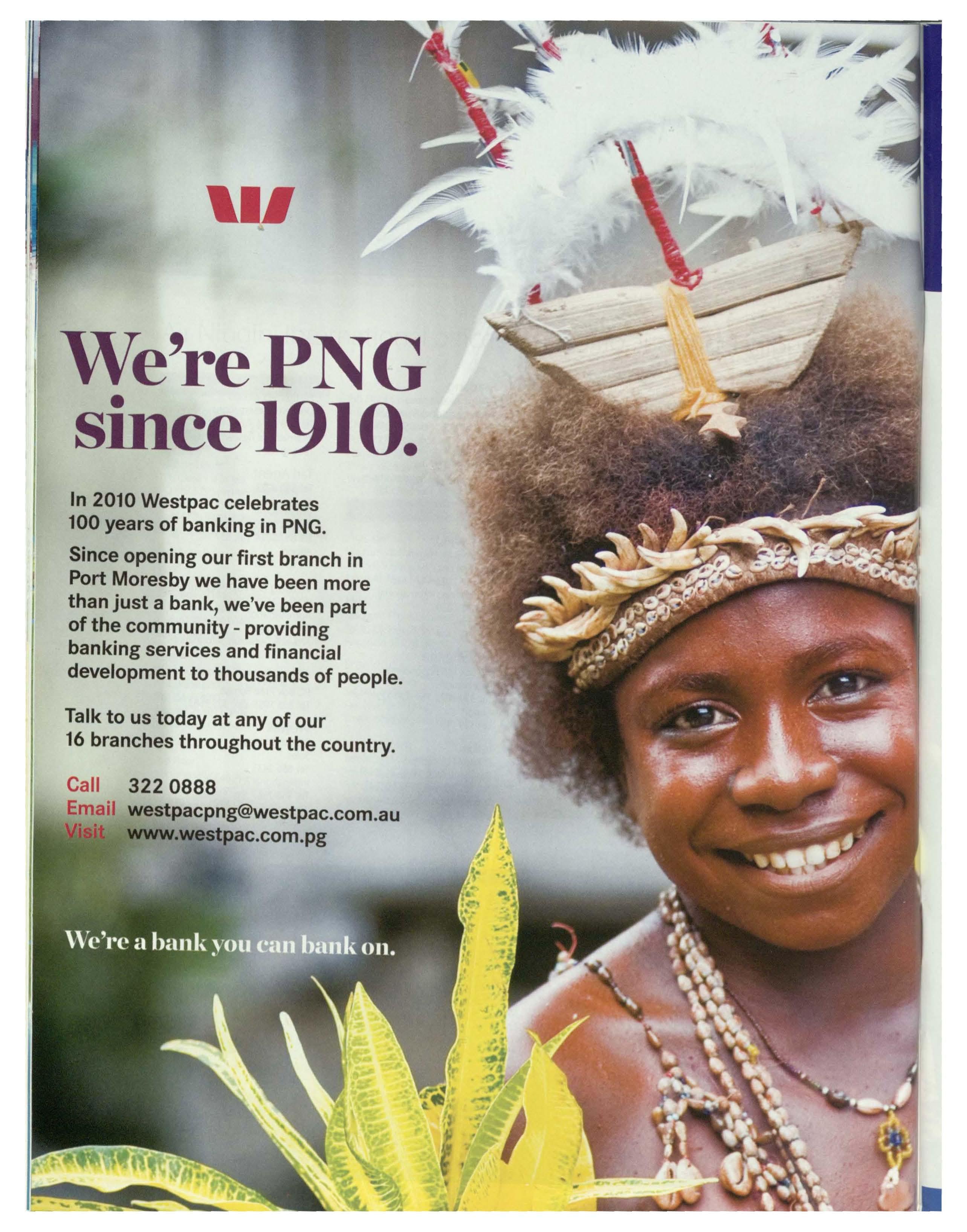
In 2010 Westpac celebrates 100 years of banking in PNG. Since opening our first branch in Port Moresby we have been more than just a bank, we've been part of the community - providing banking services and financial development to thousands of people.

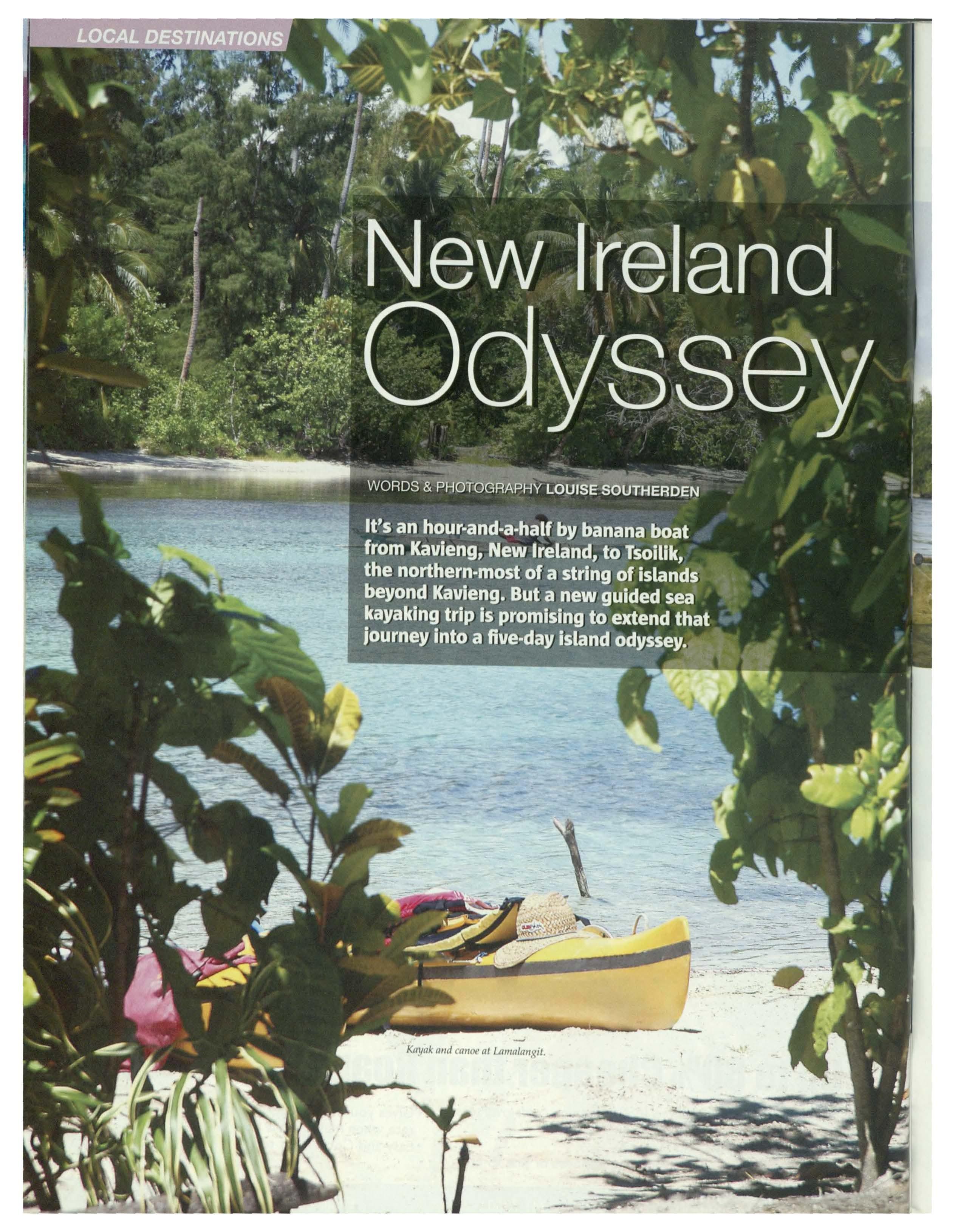
Spenrfis/Ji11gat Kabottero11.

l 1 ve paddled a few tropical places - off the coast of Panama, through the Yasawa Islands in Fiji, around Hinchinbrook Island in Queensland and in Palawan in the Philippines. But in New Ireland, I had some of the most beautiful sea kayaking l 1 ve ever experienced.
here's something about the islands north of Kavieng in New Ireland Province. Maybe it's their classic, brochureworthy, white-sand beaches; their small villages nestled in tropical rainforest that reaches almost to the water's edge; or the aquamarine depths, rich in marine life, that surround them. Maybe it's just that, aside from an occasional cruise ship that drops anchor offshore, they're refreshingly untouched by tourism.
Until recently, the only way to explore these islands was by banana boat or outrigger canoe. Then, in May this year, Melbourne-based adventure tour operator No Roads Expeditions, which has been running Kokoda treks since 2006, started offering a third way to island-hop in New Ireland: by sea kayak.
New Ireland is tailor-made for sea kayaking, by the way. Most of its islands are protected by fringing reefs, making for safe beach landings. They're far enough apart to allow you to get in sync with your paddling partner (twoperson, double kayaks are used on these trips), while being close enough to ensure you're rarely paddling for long between landfalls.
It also seems fitting to paddle kayaks in a place where the locals mostly get around in canoes.
Every day of our five-day trip, which took us from Kavieng to the northern tip of Tsoilik Island, we saw local people in canoes and we'd often paddle over to talk to them, which was a meeting of two worlds. There we were, sitting in our bright yellow, plasticmoulded double kayaks, equipped with high-tech paddles, spray decks (to keep the water out of the cockpits) and PFDs (Personal Flotation Devices, like life-vests). And there they were, perched on the sides of simple hand-hewn boats they'd probably made themselves, using single-blade wooden paddles and a coconut shell as a bailer.
I've paddled a few tropical places - off the coast of Panama, through the Yasawa Islands in Fiji, around Hinchinbrook Island in Queensland and in Palawan in the Philippines. But in New Ireland, I had some of the most beautiful sea kayaking I've ever experienced.
Day 2 was our longest day. We paddled for three hours from Kabotteron to Nusakelo around a dry reef where gentle openocean swells turned into savage kayak-breaking waves, forcing us to keep our distance. Watching black seabirds feeding on shoals of small, splashing fish, I felt as if we were in the doldrums of the South Pacific, not in the Bismarck Archipelago just two short flights north of Australia.
But even paddling for that length of time had a dreamlike quality to it. There was just the water, sky, the heat, big clouds, the shining sun, our three yellow kayaks and our support boat (a banana boat that puttered behind us so quietly we often forgot it was there).
Sometimes we'd take a break by parking the kayaks on a sandy spit to go snorkelling - in water as clear as air and populated by lionfish and sea snakes, reef sharks and parrot fish, and Nemolike anemone fish.
Backin our kayaks,and when it as shallow enough, we'd watchcorals,tropical fish and studdedstarfishpassby underneathas we drifted over them; it was like snorkellingwithout getting wet.
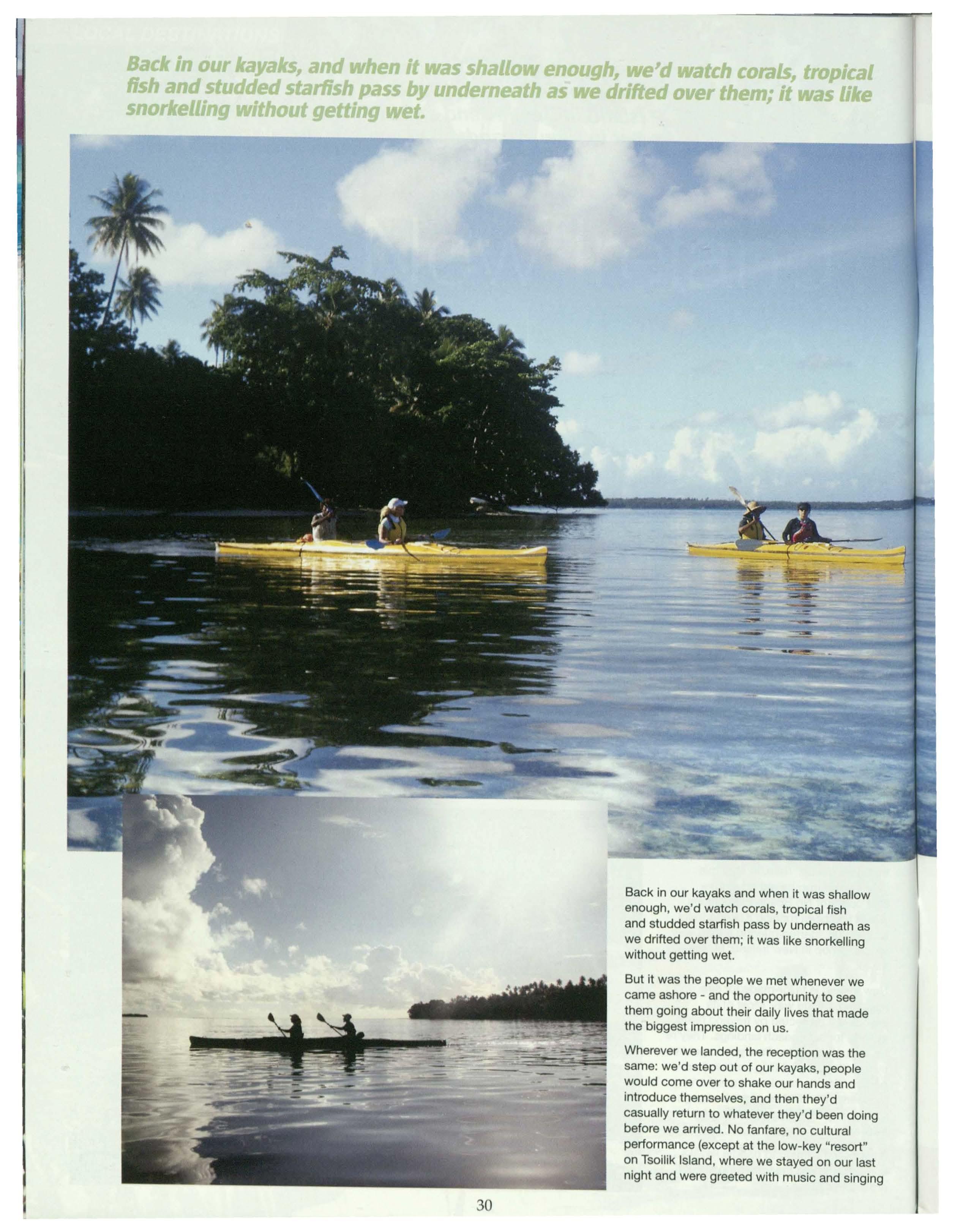
Back in our kayaks and when it was shallow enough, we'd watch corals, tropical fish and studded starfish pass by underneath as we drifted over them; it was like snorkelling without getting wet.
But it was the people we met whenever we came ashore - and the opportunity to see them going about their daily lives that made the biggest impression on us.
Wherever we landed, the reception was the same: we'd step out of our kayaks, people would come over to shake our hands and introduce themselves, and then they'd casually return to whatever they'd been doing before we arrived. No fanfare, no cultural performance (except at the low-key "resort" on Tsoilik Island, where we stayed on our last night and were greeted with music and singing
as a special treat). Somehow, it made us feel included, perhaps because they seemed relaxed enough with us to let us be. And we, in turn, could be with them.
Sitting on the beach, we'd start chatting with local kids who'd tell us how they paddle canoes to school on neighbouring islands. Rinsing off the day's salt in a bucket shower (surrounded by a screen of palm fronds), we'd hear women singing in a nearby hut. One languid afternoon we took turns paddling an outrigger canoe (which was easier than it looked, though not as stable as our heavy double kayaks).
Lots of places like to call themselves the "last frontier" - this pa11of PNG really is one.
It's the kind of place where it's easy to feel as if you're exploring an undiscovered, or at least seldom-visited place.
One day, we stopped for lunch at a village on Enuk Island where the local women, all with betelnutstained teeth and wearing colourful "meri"
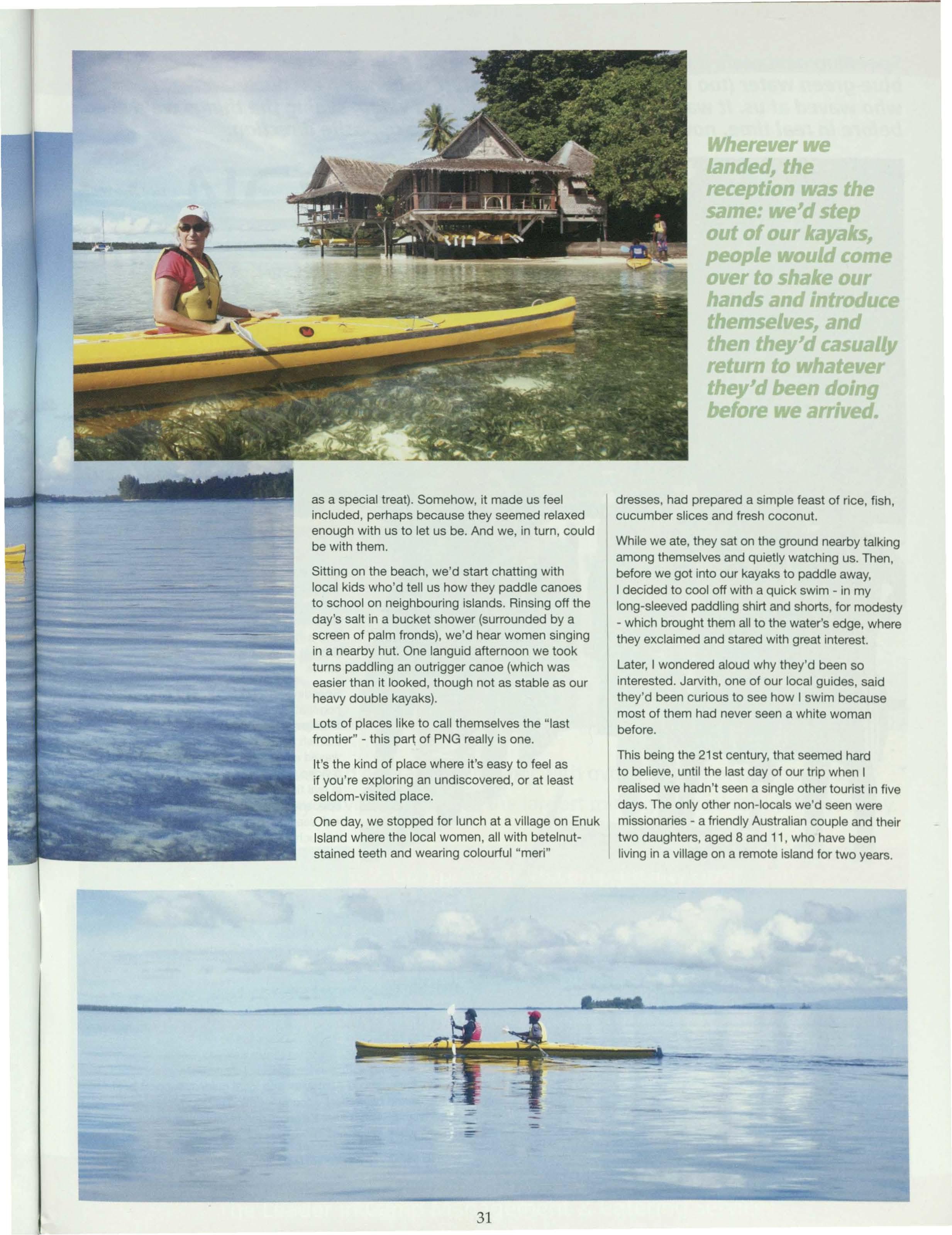
Whereuerwe landed, the receptionwas the same: we'd step out of our kayaks, people would come ouer to shakeour handsand introduce themselues,and then they'd casually return to whateuer they'd been doing before we arrived.
dresses, had prepared a simple feast of rice, fish, cucumber slices and fresh coconut.
While we ate, they sat on the ground nearby talking among themselves and quietly watching us. Then, before we got into our kayaks to paddle away, I decided to cool off with a quick swim - in my long-sleeved paddling shirt and shorts, for modesty - which brought them all to the water's edge, where they exclaimed and stared with great interest.
Later, I wondered aloud why they'd been so interested. Jarvith, one of our local guides, said they'd been curious to see how I swim because most of them had never seen a white woman before.
This being the 21st century, that seemed hard to believe, until the last day of our trip when I realised we hadn't seen a single other tourist in five days. The only other non-locals we'd seen were missionaries - a friendly Australian couple and their two daughters, aged 8 and 11, who have been living in a village on a remote island for two years.
Speedingpast reefs it had taken us hoursto negotiate in the kayaks,we glided over the blue-greenwater (too fast now to see fish or starfishbeneath us) and wavedat people who aved at us. It was like pressing"rewind11 on a video,seeing the thingswe'd seen b fore in real time, now at a faster rate and from the oppositedirection.
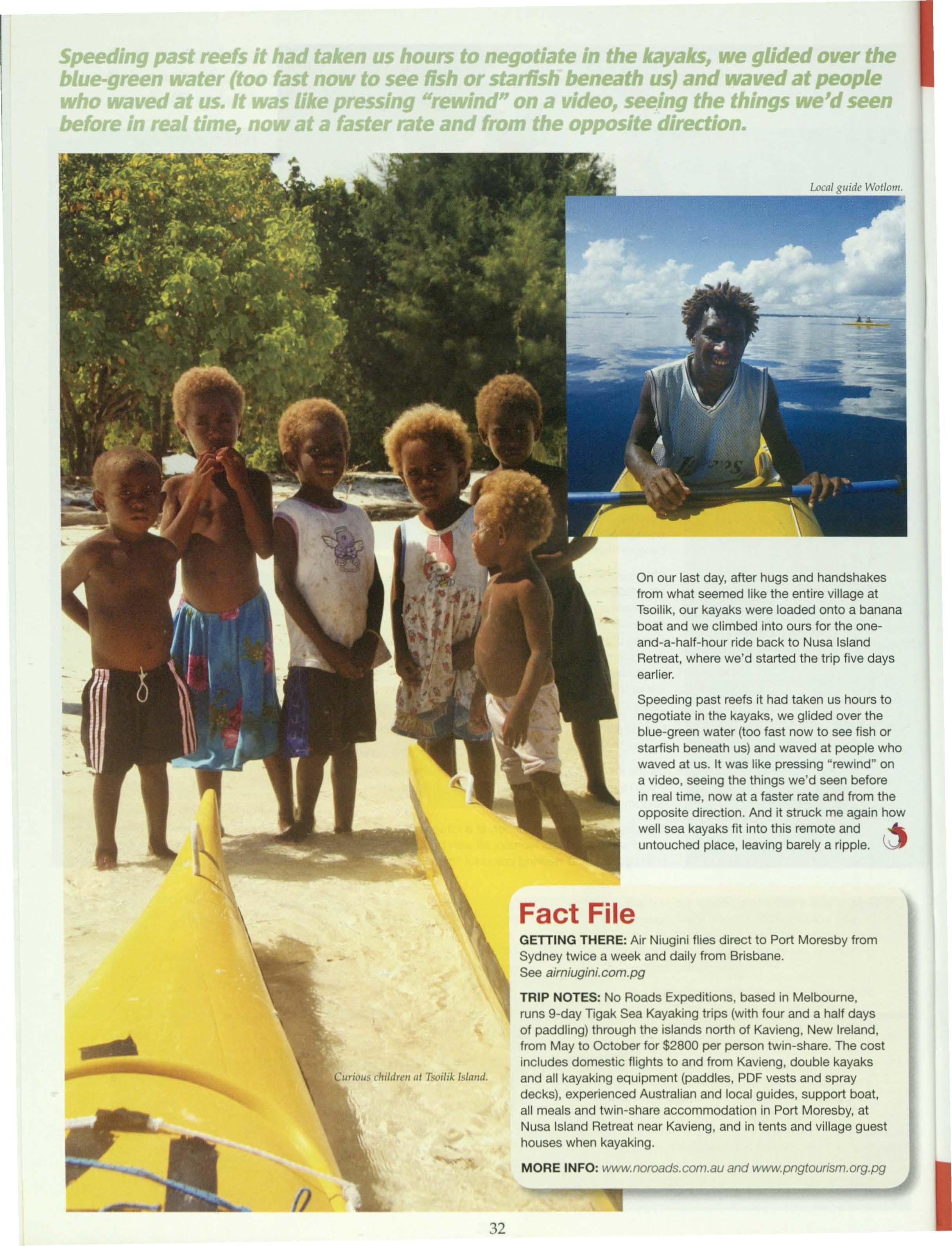
On our last day, after hugs and handshakes from what seemed like the entire village at Tsoilik, our kayaks were loaded onto a banana boat and we climbed into ours for the oneand-a-half-hour ride back to Nusa Island Retreat, where we'd started the trip five days earlier.
Speeding past reefs it had taken us hours to negotiate in the kayaks, we glided over the blue-green water (too fast now to see fish or starfish beneath us) and waved at people who waved at us. It was like pressing "rewind" on a video, seeing the things we'd seen before in real time, now at a faster rate and from the opposite direction. And it struck me again how well sea kayaks fit into this remote and • untouched place, leaving barely a ripple. V
GETTING THERE: Air Niugini flies direct to Port Moresby from Sydney twice a week and daily from Brisbane. See airniugini.com.pg
TRIP NOTES: No Roads Expeditions, based in Melbourne, runs 9-day Tigak Sea Kayaking trips (with four and a half days of paddling) through the islands north of Kavieng, New Ireland, from May to October for $2800 per person twin-share. The cost includes domestic flights to and from Kavieng, double kayaks and all kayaking equipment (paddles, PDF vests and spray decks), experienced Australian and local guides, support boat, all meals and twin-share accommodation in Port Moresby, at Nusa Island Retreat near Kavieng, and in tents and village guest houses when kayaking.
MORE INFO: www.noroads.com.au and www.pngtourism.org.pg

BY MICHAEL GREENSLADE

Just before sunrise, our dugout outrigger canoes slip silently into the warm waters, off Matupit Island. Two kilometres across the bay, the volcano rumbles and a column of steam and ash rises from its mouth. As we paddle towards it, we are reminded of Mother Nature's power - the power to destroy and the power to create and provide.
As we near the shore, the sea gets noticeably warmer and the rising sun reflecting over the glass calm water. The volcano looms large overhead like a sleeping giant, gently snoring.
I am reminded of the tale of Jack and the Beanstalk, for we too have come to take the giant's treasure and we hope he doesn't wake up while we do so.
I have come with the Tolai men of Matupit Island to the foothills of Mt Tavuvur, as they have done so for hundreds, perhaps thousands of years, to harvest the eggs of the megapode.
The megapode or incubator bird is a large, chickenlike bird that lays its eggs deep in the warm volcanic ash. All the hard work of incubation is done for them by the volcano and when the young are hatched, they are more developed than any other bird, fully feathered and ready to fly.
Thesceneresemblesone huge board game. Theholes are from previousexcavations and when I ask about the boulders,I'm told they are occasionallycoughedup by the volcano.If you hear one whistlingthroughthe air, it's best not to look up, instead, watch where you're runningso as not to fall into the holes.

We land the dugouts on the black sand of the palm-fringed beach and the men remove their shovels and billums, baskets made of woven banana leaf, to carry their prize.
Just through the palms, there is a clearing and a catacomb of large holes interspersed with sizeable boulders.
The scene resembles one huge boardgame. The holes are from previous excavations and when I ask about the boulders, I'm told they are occasionally coughed up by the volcano. If you hear one whistling through the air, it's best not to look up, instead, watch where you're running so as not to fall into the holes, I'm told.
The men, about 15 of them in total, get to work. First, they survey the holes, looking for freshly dug ash, marking them as they go with a personalised leaf. Some leaves may be broken in half, others torn in a special way, each man will have his own way of marking his holes. Then the real work begins and the digging starts, first with the shovel and then, as they near the delicate eggs, by hand.
I am amazed at how deep some of the holes are, but here, in the clearing, they have been dug many times and the megapodes like to bury their eggs in the soft ash dug over by men and so it goes round.
The men talk and joke as they dig and before long the first egg is found. It's slightly larger than your average chicken egg but more elongated. The man who has found it is in a hole
Diggi11gfor megapodeeggs.

with three feet of ash above him and has dug out another two feet horizontally to reach the egg at arms length.
This is hot and dangerous work, the combined heat of the rising sun and the warm volcanic ash makes the digging even more strenuous. There is an ever-present danger of a hole collapsing (men have been buried alive) or a boulder falling from the sky, not to mention a volcanic eruption.
Mt Tavuvur is one of the region's most active volcanoes. Situated on the eastern end of the Gazelle Peninsular, East New Britain, Mt Tavuvur sits on the edge of a massive caldera, forming part of the infamous Ring of Fire.
In 1993, the volcano erupted violently, burying half of the then regional capital, Rabaul, in hot ash and forcing its evacuation.
In October 2006, ii erupted again, spectacularly sending a column of ash 18 kilometres into the air.
Luckily for the residents of Rabaul and nearby Matupit Island, an offshore wind carried the ash cloud out to sea and no damage was done.
After about three hours of digging, each man retrieved about a dozen eggs and I am told this is enough because the men will only take what they need. Covered in sweat and ash, it is now time for a refreshing drink of water, a wash in the sea and a chance to recharge the batteries with some betelnut.
The eggs will be taken back to Matupit, boiled and sold in the local markets of Rabaul and Kokopo, the new regional capital. They fetch a good price and supplement the income the men earn from fishing and copra.
The men know the eggs are a f1n1teresource and they are managed accordingly. For three months of the year, they will not vIS11 Tavuvur's shores, gIvIng the megapodes a chance to breed and hatch their young, thus maintaining the bird's population and assuring next year's food and income supply
On our paddle back to Matup1t, the mood Is celebratory and I feel privileged to have witnessed such an amazing slice of Tolai life. 1 thank my hosts and wish them well.
A couple of days later, as I stroll through the market in Kokopo, I see a lady shaded by a colourful umbrella. In the basket In front of her is a pile of large, elongated eggs, I smile and think back to my volcanic adventure. free range will never be the same again
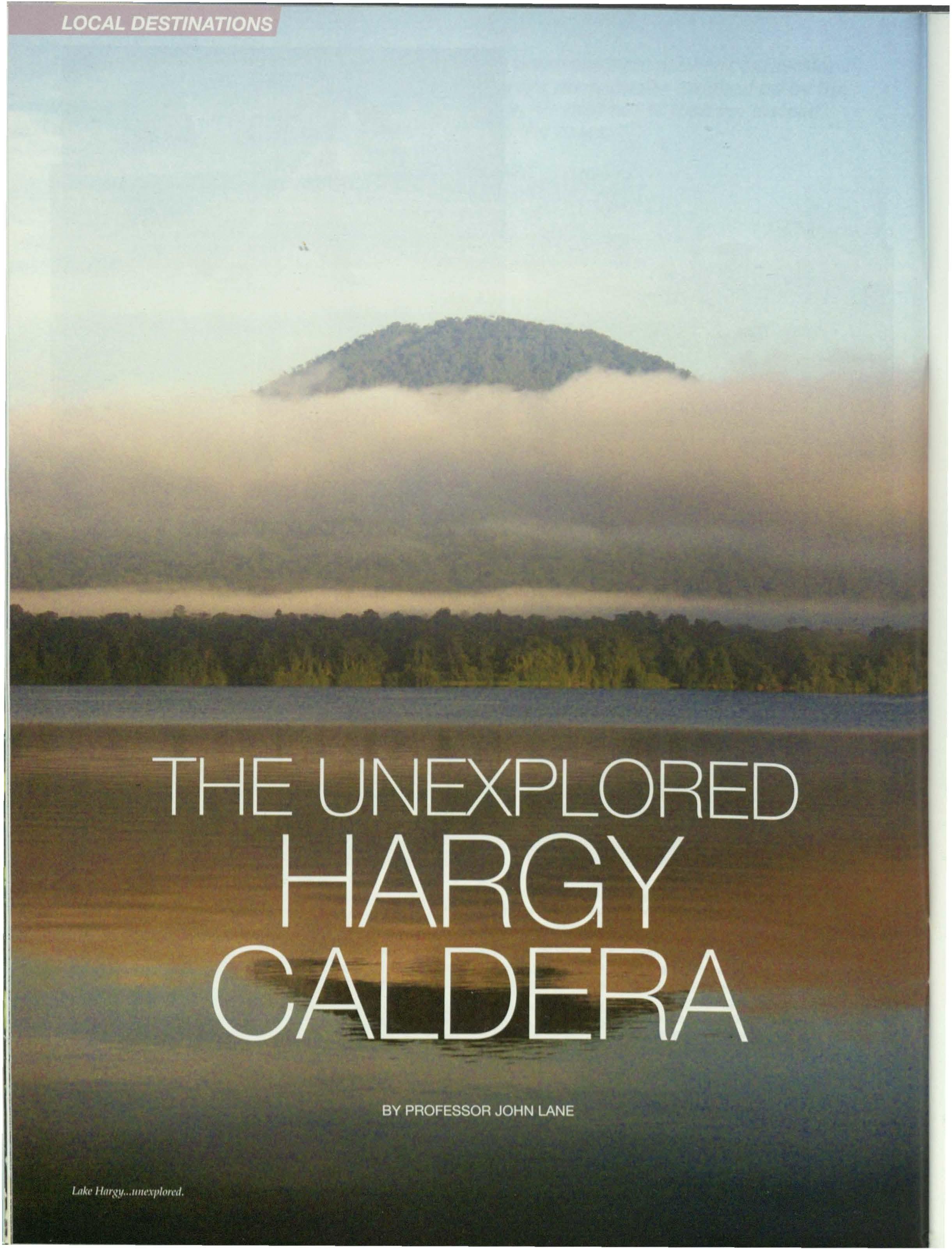
Thename Hargy comesfrom FredHargesheimer,an Americanpilot who was shot down in the area during World War II only to return 20 years later to build the Airmen's Memorial School(AMS).

n January of 2010, I returned to the Hargy Caldera of West New Britain Province, Papua New Guinea, (PNG) - my sixth visit since 2006.
The goals of this expedition were to helicopter-lift two boats into Lake Hargy and conduct side scan sonar of the lake in search of crocodiles, earthquake faults and lost World War Two planes.
An additional goal was to permanently fix ropes in the slot canyons that surround the lake for purposes of creating a canyoneering/ trekking route for ecotourism.
But since Papua New Guinea is the Land of the Unexpected, none of that happened.
The name Hargy comes from Fred Hargesheimer, an American pilot who was shot
down in the area during World War II only to return 20 years later to build the Airmen's Memorial School (AMS).
Fred's remarkable story is documented in the book The School That Fell From the Sky. Fred's story has had many repercussions.
The squadron Fred was a part of took photos of New Britain Island, and while Fred was still missing, the United States Army was developing maps from surveillance photos; they found no name for a particular lake.
The lake in question is in the area where Fred was shot down. One of the members of the map-developing crew said, "this is the area where Fred was shot down in, so let's name it Lake Hargy.
To the Nakanai people who are the
landowners of Lake Hargy, it is known as Lamu Auru, which translates to Big Mosquito.
Twice in 2006 I travelled to Papua New Guinea. On the second trip, I was with 90-year old Fred Hargesheimer and we went to the crash site of his plane.
Fred went by helicopter and I hiked overland. That trip is documented in greater details in an article by Cecile Benjamin (Paradise Magazine Volume 6, 2008).
I had first heard about New Britain in 1993 while in Borneo exploring caves. There, I had met a fellow caver, David Gill.
David is a British cave explorer who has conducted several major expeditions into the Nakanai Mountains. His discoveries are numerous. David told me that if I thought the caves of Borneo were spectacular, then I needed to see the Nakanai Mountains of New Britain.
Thirteen years later, my opportunity came. About one week before we were to depart for PNG, my buddy Ralph was visiting a neighbour who asked "what does Fred have to say about you going to New Britain?"
Ralph replied "Fred who?" The neighbour replied, "Fred Hargesheimer, he lives down the street; he was shot down there in World War II.'
Thisextraordinaryterrain supportsa complexweb of aquaticand terrestrial speciesand basedon a preliminaryinventory,it is likely to supporta remarkable numberof new or specialisedspecies.
asked if anyone had seen Fred's plane or knew where any caves were.
We kept getting the same response "long taim lik lik". Eventually, we were able to locate and explore some caves but we never did find Fred's plane.
I left a disposable camera with the boys in Kamatami village and I told them that if they found Fred's plane to send me photos and I would come back.
Two months later, while home in the United States, I received an email with photos of Fred's plane.
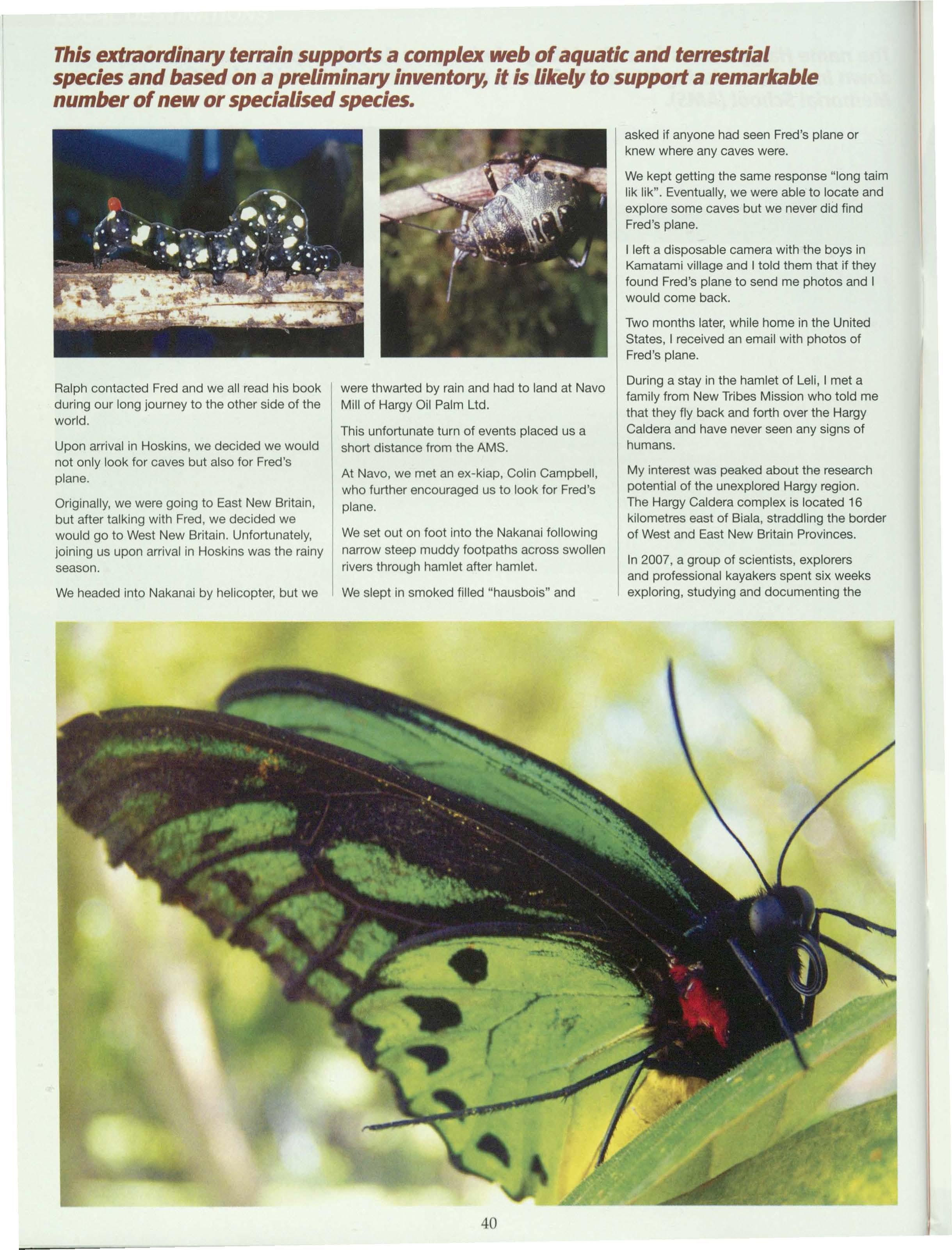
Ralph contacted Fred and we all read his book during our long journey to the other side of the world.
Upon arrival in Hoskins, we decided we would not only look for caves but also for Fred's plane.
Originally, we were going to East New Britain, but after talking with Fred, we decided we would go to West New Britain. Unfortunately, joining us upon arrival in Hoskins was the rainy season.
We headed into Nakanai by helicopter, but we
were thwarted by rain and had to land at Navo Mill of Hargy Oil Palm Ltd.
This unfortunate turn of events placed us a short distance from the AMS.
At Navo, we met an ex-kiap, Colin Campbell, who further encouraged us to look for Fred's plane.
We set out on foot into the Nakanai following narrow steep muddy footpaths across swollen rivers through hamlet after hamlet.
We slept in smoked filled "hausbois" and
During a stay in the hamlet of Leli, I met a family from New Tribes Mission who told me that they fly back and forth over the Hargy Caldera and have never seen any signs of humans.
My interest was peaked about the research potential of the unexplored Hargy region. The Hargy Caldera complex is located 16 kilometres east of Biala, straddling the border of West and East New Britain Provinces.
In 2007, a group of scientists, explorers and professional kayakers spent six weeks exploring, studying and documenting the

opportunitiesfor future researchexist within the Hargycalderaand surroundingenvirons.Althoughthe region is pristine, encroachmentand resourceextraction is not far away.
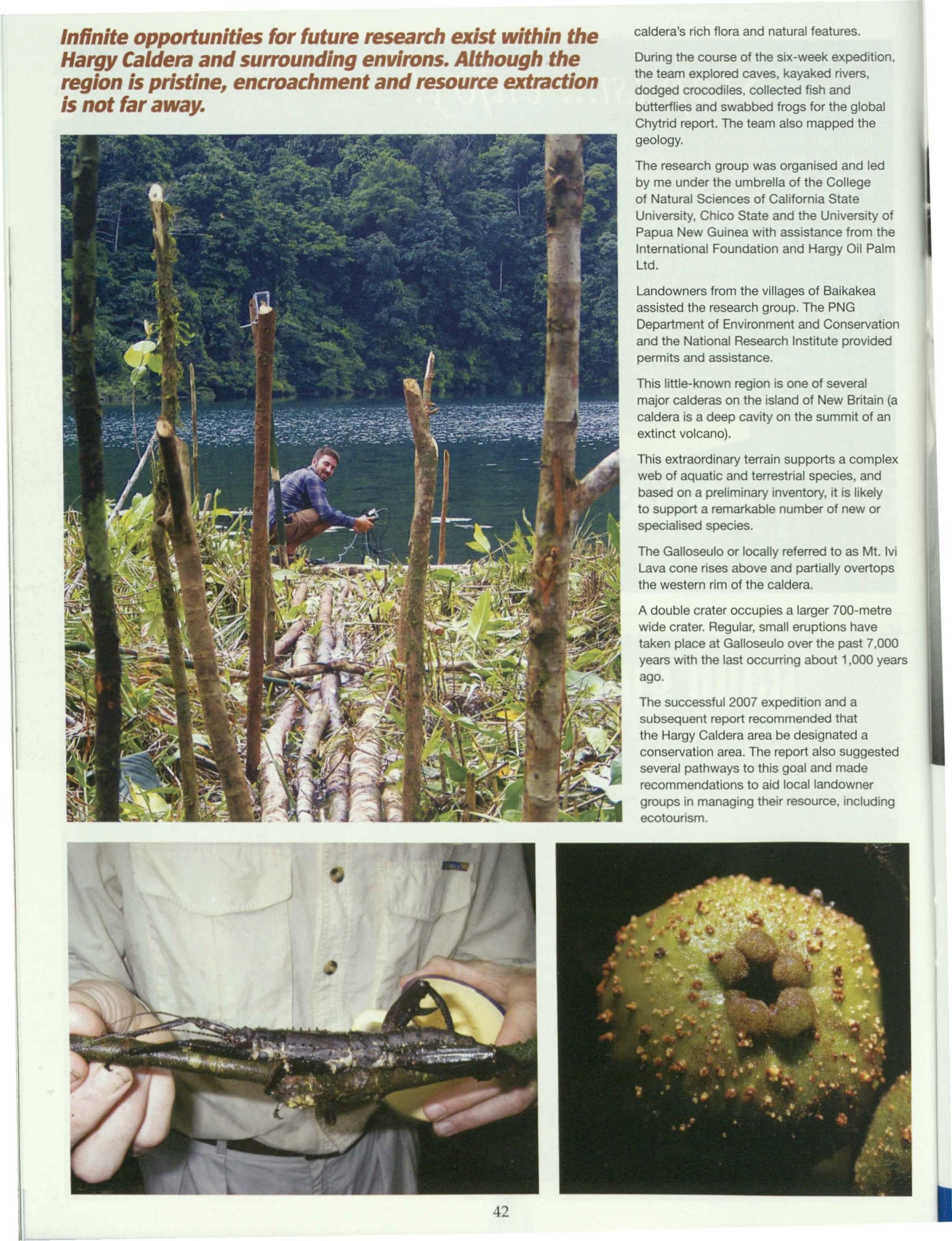
caldera's rich flora and natural features. During the course of the six-week expedition, the team explored caves, kayaked rivers, dodged crocodiles, collected fish and butterflies and swabbed frogs for the global Chytrid report. The team also mapped the geology.
The research group was organised and led by me under the umbrella of the College of Natural Sciences of California State University, Chico State and the University of Papua New Guinea with assistance from the International Foundation and Hargy Oil Palm Ltd.
Landowners from the villages of Baikakea assisted the research group. The PNG Department of Environment and Conservation and the National Research Institute provided permits and assistance.
This little-known region is one of several major calderas on the island of New Britain (a caldera is a deep cavity on the summit of an extinct volcano).
This extraordinary terrain supports a complex web of aquatic and terrestrial species, and based on a preliminary inventory, it is likely to support a remarkable number of new or specialised species.
The Galloseulo or locally referred to as Mt. lvi Lava cone rises above and partially overtops the western rim of the caldera.
A double crater occupies a larger 700-metre wide crater. Regular, small eruptions have taken place at Galloseulo over the past 7,000 years with the last occurring about 1,000 years ago.
The successful 2007 expedition and a subsequent report recommended that the Hargy Caldera area be designated a conservation area. The report also suggested several pathways to this goal and made recommendations to aid local landowner groups in managing their resource, including ecotourism.

Since 1985, we at Datec have brought the world's premier technology and service providers to PNG. IBM, HP,Apple, Microsoh, Oracle, Sony, Canon, Cisco, Lenovo, SYSTIMAX,Eaton Powerware, ViciSoh, and Dhanush lnfotech. Datec's technological superiority and international partnerships have successfully integrated PNG with the rest of the world by providing state-of-the-art ICT Solutions and Business Services.
ICT
Internet & Value Added Services
Document Management Solutions
E-Governance
Payroll and HRAutomation
ATM Solutions
Rural Empowerment & Banking
Mobile Banking & Marketing
Vehicle Tracking & Fuel Management
RFIDContainer & Port Management
Talk to us today. Let us make your
Business & Enterprise Consulting
ICT Security Consulting
ICT Outsourcing
Business Process Outsourcing
Contact Centre Deployment
Application Development
Training & Education
Project Management
Specialist Resource Augmentation
Our Mega5tores have the largest and most comprehensive product range in Papua New Guinea,showcasingthe full range of technology that Datec represents. Our partnerships with the world's leading vendors enable us to provide high quality, high value and high technology products.
your partnerof choice
Fourfrog speciesremain unidentifiedbeyondthe genuslevel. A snakeof the Genus Typhlopswas observednear the BaseCamp,whichmay likely be a new species. Additionally,during the courseof these expeditionsthere have been sightingsof potentiallya new speciesof tree kangaroo.
In December 2008, a Lake Hargy Sustainability Land Management Workshop was held at the Hargy Oil Palm Plantation.
Topics discussed at the workshop included pathways for conservation of the caldera, ways to expand the oil palm production area, ways to involve stakeholders in the decision process and ways to generate money from the caldera without compromising its unique richness.
Additional scientific expeditions were conducted to the Hargy Caldera in July 2009 and January 2010.
The very steep and muddy hike into the caldera more often than not takes five-anda-half gruelling hours and involves crossing over 32 drainages typically during a torrential downpour.
Navigating in the jungle has proved to be extremely difficult as the terrain is exceptionally steep and is choked with vines and fallen trees.
On one particular evening, I encountered a cassowary. A cassowary is the third largest flightless bird in the world and also has the distinction of the world's most dangerous bird.
When the cassowary saw me, it attacked. Fortunately, I was able to get into my tent before being disemboweled.
The bird circled my tent before retreating into the darkness of the jungle night. On another occasion, a crocodile snapped at a kayaker during the first ever source to sea exploration of the Lobu River.
Crocodile sighting on Lake Hargy were not uncommon. Insects are the most diverse of life on the earth.
Scientists who study diversity cannot hope to sample all of the species for a given area, so instead, they sample the species from groups that are easily collected and identified.
The two main groups that are used in this work are ants and butterflies. Ant collecting is a bit specialised and they can harm the collector, so we used butterfly collecting as an indicator of the diversity of the Hargy Caldera.
Chytridiomycosis is an infectious disease of amphibians caused by the fungus Batrachochytrium dendrobatidis. The disease has been implicated in mass die-offs of amphibians and extinction of frog species worldwide.
It has only become an international disease of concern since the early 1990s. It is confirmed in the Americas, Africa, Europe, New Zealand, Australia and Oceania.
The cause of the spread and reason for the dramatic die-offs are not clear but human-
mediated dispersal and environmental changes such as global warming appear to be strongly implicated.
Papua New Guinea is one of the few places in the world where amphibians had not been tested for the presence or absence of B. dendrobatidis.
PNG, in general, and the Hargy Caldera of West New Britain specifically has played host to little or no human contact with amphibian pcpulations, and as such, is an excellent environment to test for human-mediated spread.
Ralph and Lisa Cutter performed swabs on 73 frogs. Testing for B. dendrobatidis

detected no presence in any of our collection.
The intact, uninfected frog population of the Hargy Caldera should be recognised as an international benchmark community that must be strictly protected from any possible humanmediated contamination.
Many of the butterflies collected were not identified to the species level and may prove to be new to science.
Four frog species remain unidentified beyond the genus level. A snake of the Genus Typhlops was observed near the Base Camp, which may likely be a new species.
Additionally, during the course of these expeditions, there have been sightings of
potentially a new species of tree kangaroo.
Now after a reconnaissance, a visit with Fred, two expeditions, a jaunt into the active volcano and a workshop of these expeditions, I continued to be amazed and bewildered by the incredible diversity and uniqueness of this portion of the planet.
Still, there is almost no evidence of humans within this isolated region. Although the region is pristine, encroachment and resource extraction is not far away.
That is why there is an urgency in continuing the push towards conservation of this limited reserve. Infinite opportunities for future research exist within the Hargy Caldera and surrounding environs.
The long-term goals of this project are to establish a permanent research station at Lake Hargy, to continue efforts for conservation of this valuable, untouched pristine area and to continue Fred's paradigm of working together with the Nakanai people.
John Swire & Sons and Steamships are proud to support the Swire Papua New Guinea Rainforest Study (SPRS),which was officially launched this year in the Wanarg District, Madang Province.
SPRShasbeencoordinatedbytheCenterforTropical Forest Science (CTFS) of the Arnold Arboretum of Harvard University and the Smithsonian Tropical Research Institute, in partnership with the New Guinea Binatang Research Centre (BRC), the University of Minnesota, and the University of the Czech Republic.
giving researchers unique opportunities for ecological studies. The centre has accommodation and laboratory space, and is equipped to host national and international researchers. Members of the local community J.re employed through the Swire Research Centre as field research assistants, giving them the scientific skills required for sustainable forest management.

The project included the construction of the
-·--=~ Swire Research Station and establishment of a As part of financing the project, funds were permanent 50 hectare rainforest monitoring plot put towards community development projects. which seeks to better understand biodiversity and After consultation with the community, it forest dynamics by accurately mapping, measuring became very clear that there was a need for and monitoring all the trees with a trunk diameter a primary school, as there was no schooling of greater than 1cm. available for any of the region's forest villages
Th proj t repr s nts th first long term study of carbon dynamics in PNG for sts and will in reas sci ntists' und rstanding of forest dynami s and th abi Iity to ass ss the r spons of Pacifi forests to global climate hang
B ing lo at d in th h art of th jungl , Swir R s ar h Station is th first of its kind in PNG,
op • • rs-Hawk i Son Pty i @ wir m. u
in the wider area. The Wanang School has grown rapidly in only 18 months to include teachers, three classrooms and 150 students. Many these students come from outside villages, but have been accommodated and absorbed into the community. For all, some as old as 18, this is their first experience of primary education.
The proj t is replicable and scalable - CTFS is d veloping a model for emulating across different bioregions of PNG, and plans to establish a network of forest observatories across the country.
FOR MORE INFORMATION
Stuart Davies
enter for Tropical For st Scien sdavi s@o b.harvard.edu
Robert de Loryn Steamships Trading Co. rob rt@rdlmanagem ntconsultants.com.au

BY ROD EIME
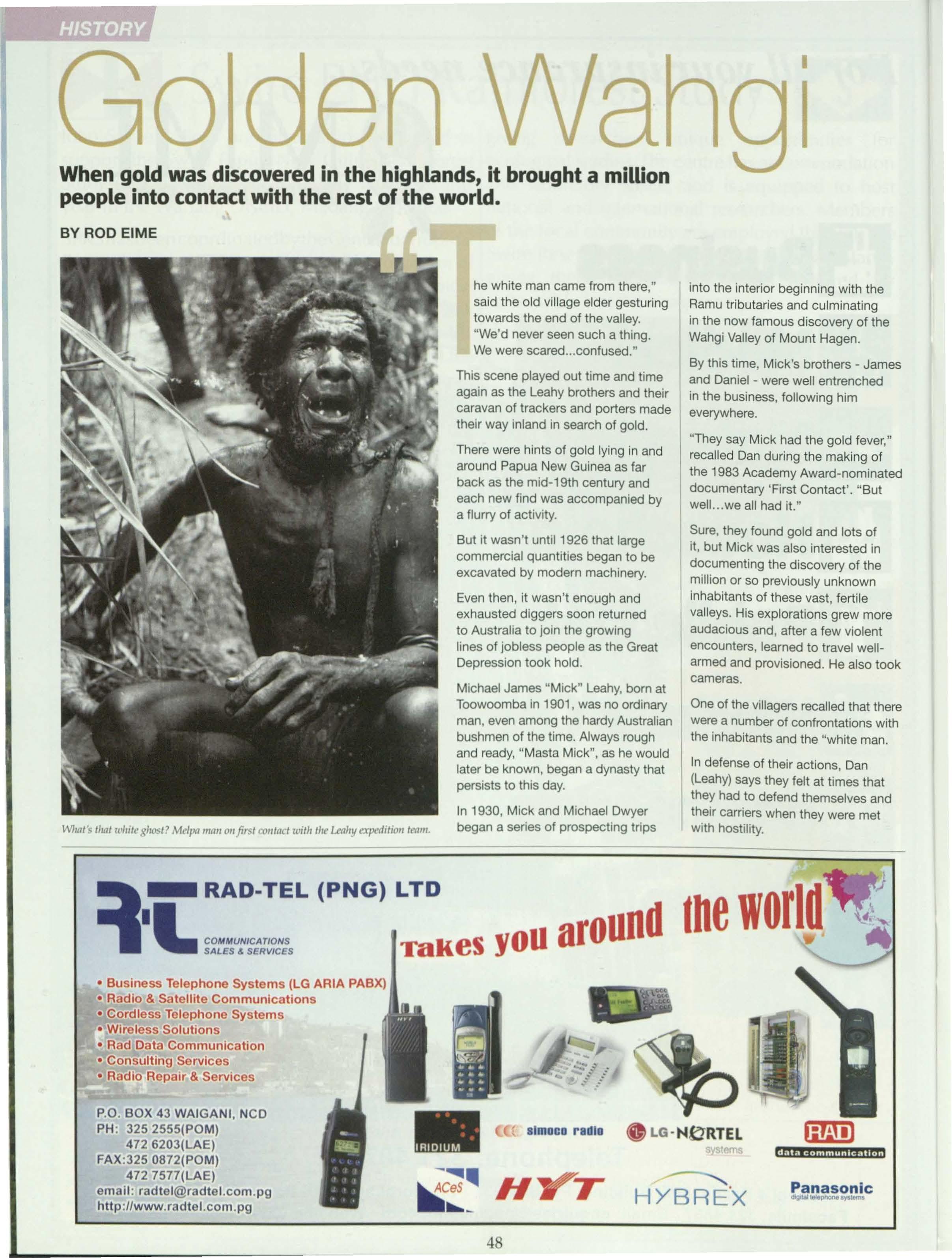
SALES & SERVICES
• Business Telephone Systems (LG ARIA PABX)
• Radio & Satellite Communications
• Cordless Telephone Systems
• Wireless Solutions
• Rad Data Communication
• Consulting Services
• Radio Repair & Services
P.O. BOX 43 WAIGANI, NCD
PH: 325 2555(POM) 472 6203(LAE)
FAX:325 0872(POM) 472 7577(LAE)
email: radtel@radtel.com.pg http://www.radtel.com.pg
he white man came from there," said the old village elder gesturing towards the end of the valley.
"We'd never seen such a thing. We were scared confused."
This scene played out time and time again as the Leahy brothers and their caravan of trackers and porters made their way inland in search of gold.
There were hints of gold lying in and around Papua New Guinea as far back as the mid-19th century and each new find was accompanied by a flurry of activity.
But it wasn't until 1926 that large commercial quantities began to be excavated by modern machinery.
Even then, it wasn't enough and exhausted diggers soon returned to Australia to join the growing lines of jobless people as the Great Depression took hold.
Michael James "Mick" Leahy, born at Toowoomba in 1901, was no ordinary man, even among the hardy Australian bushmen of the time. Always rough and ready, "Masta Mick", as he would later be known, began a dynasty that persists to this day.
In 1930, Mick and Michael Dwyer began a series of prospecting trips
into the interior beginning with the Ramu tributaries and culminating in the now famous discovery of the Wahgi Valley of Mount Hagen.
By this time, Mick's brothers - James and Daniel - were well entrenched in the business, following him everywhere.
'They say Mick had the gold fever," recalled Dan during the making of the 1983 Academy Award-nominated documentary 'First Contact'. "But well we all had it."
Sure, they found gold and lots of it, but Mick was also interested in documenting the discovery of the million or so previously unknown inhabitants of these vast, fertile valleys. His explorations grew more audacious and, after a few violent encounters, learned to travel wellarmed and provisioned. He also took cameras.
One of the villagers recalled that there were a number of confrontations with the inhabitants and the "white man.
In defense of their actions, Dan (Leahy) says they felt at times that they had to defend themselves and their carriers when they were met with hostility.
Mick Leahy begana seriesof gold prospectingtrips culminati11gi11tirenowfamous discor.oery of Wag/11Valley.
The documentary, made by Sydney filmmakers Bob Connolly and Robin Anderson, is a fascinating recounting of the heady days of prospecting and discovery in the wild highlands of Papua New Guinea.
Hours of Mick's 16-mm film was recovered and restored and then the crew returned to Wahgi Valley and found surviving members of his expeditions and villagers who remembered
their first confrontation with these strange white ghosts.
Today, visitors to Mount Hagen and the surrounding valleys will meet people who, just two-generations ago, were completely unknown to the outside world.
While comparisons to the Leahy brothers' empire might be regarded as overly flattering, Newcastle entrepreneur, Bob Bates, has
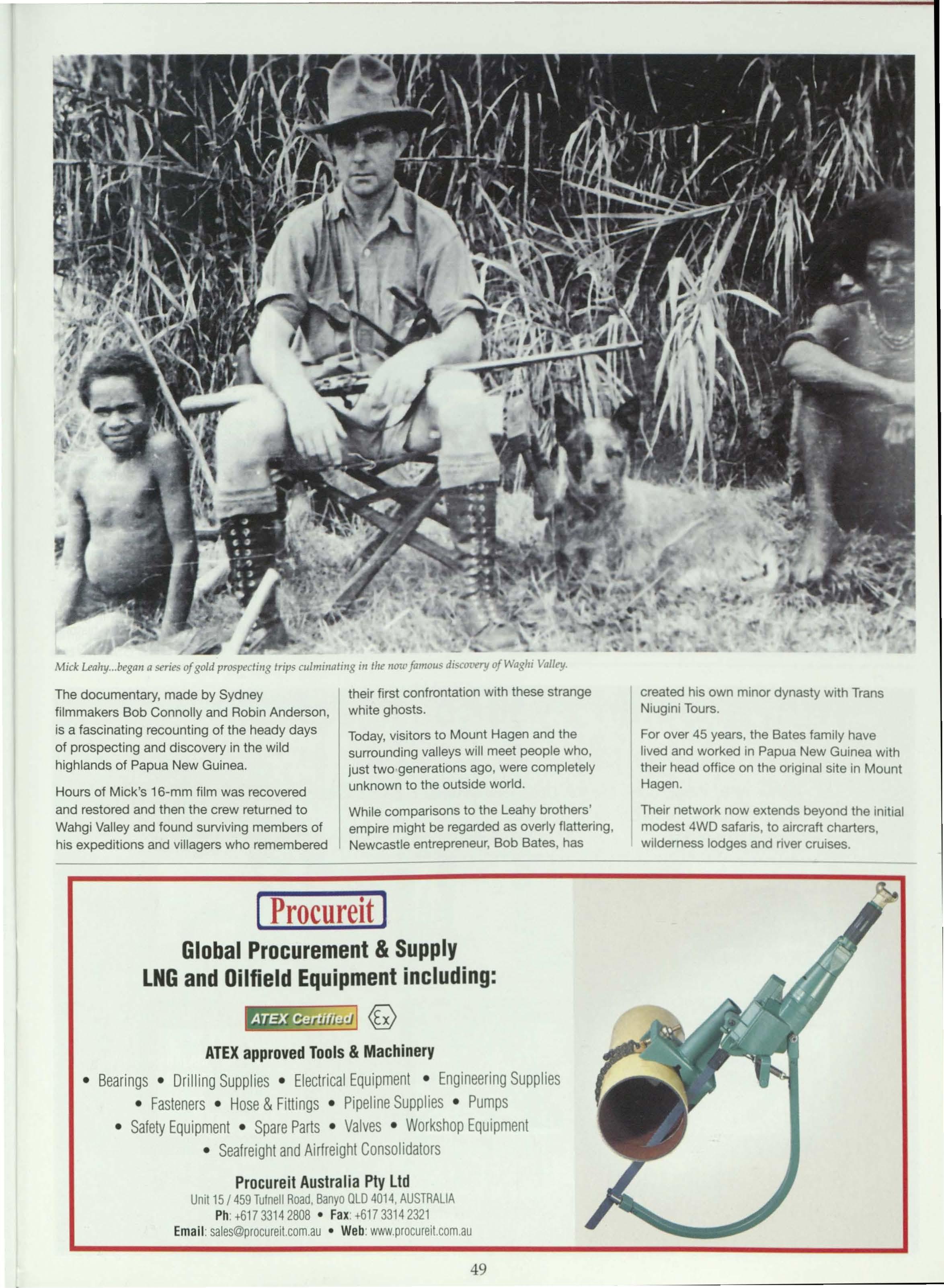
created his own minor dynasty with Trans Niugini Tours.
For over 45 years, the Bates family have lived and worked in Papua New Guinea with their head office on the original site in Mount Hagen.
Their network now extends beyond the initial modest 4WD safaris, to aircraft charters, wilderness lodges and river cruises.
C11rio11sc/1ecki11gout a gra111op/Jo11e.
His son Andrew handles the company's marketing and travels back and forth from the family property near Newcastle.
"Dad's a bit shy really," he notes with a wry grin and nods towards Bob who ducks out the back door, "but he's got lots of stories to tell".
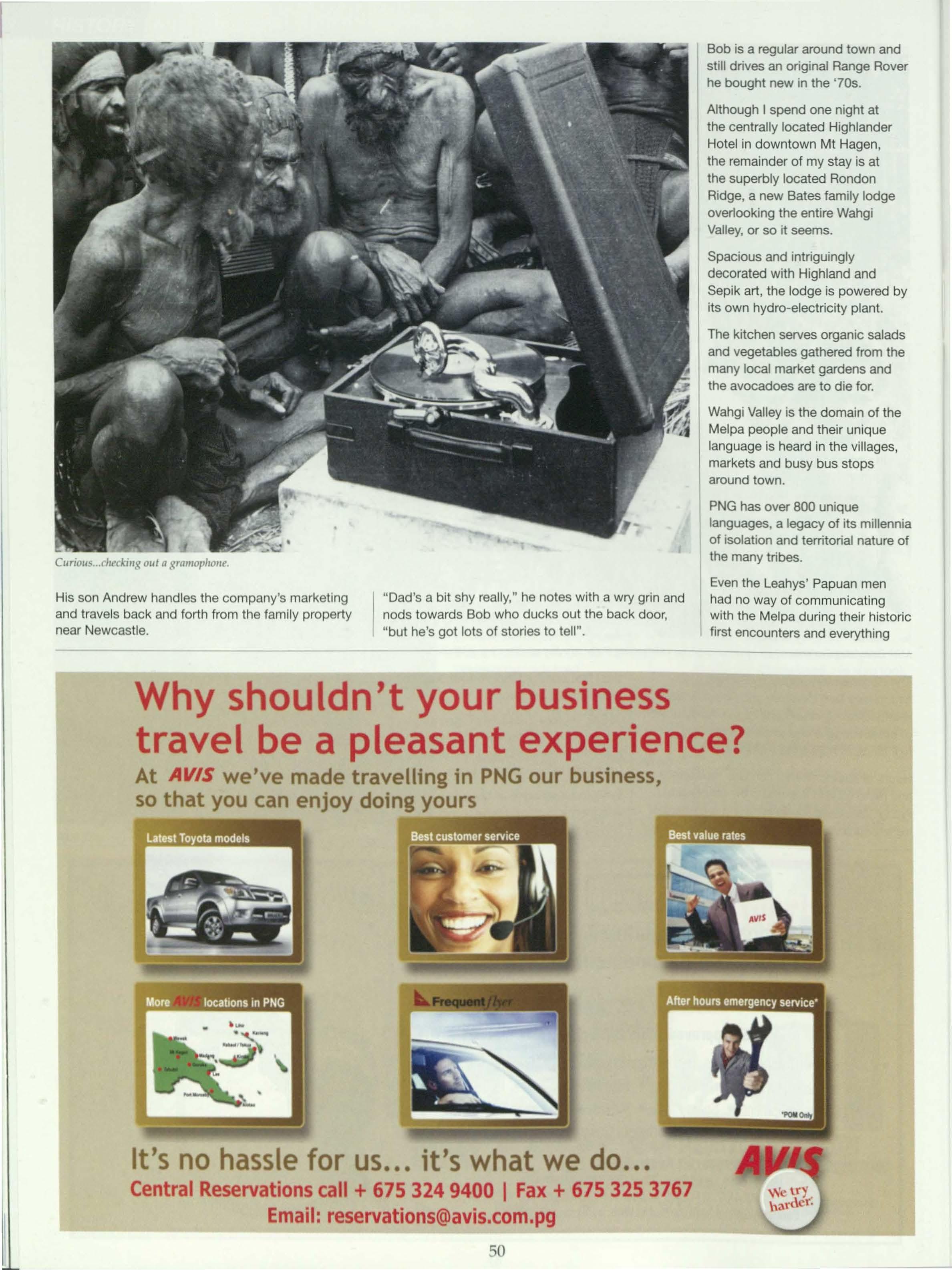
Bob is a regular around town and still drives an original Range Rover he bought new in the '70s.
Although I spend one night at the centrally located Highlander Hotel in downtown Mt Hagen, the remainder of my stay is at the superbly located Rondon Ridge, a new Bates family lodge overlooking the entire Wahgi Valley, or so it seems.
Spacious and intriguingly decorated with Highland and Sepik art, the lodge is powered by its own hydro-electricity plant.
The kitchen serves organic salads and vegetables gathered from the many local market gardens and the avocadoes are to die for.
Wahgi Valley is the domain of the Melpa people and their unique language is heard in the villages, markets and busy bus stops around town.
PNG has over 800 unique languages, a legacy of its millennia of isolation and territorial nature of the many tribes.
Even the Leahys' Papuan men had no way of communicating with the Melpa during their historic first encounters and everything
was negotiated with sign and body language.
"If we wanted a pig for dinner, we'd grunt 'oink, oink' like that," said Toa, one of Mick's 'boys' to the camera, "and we'd buy the pig with shells."
The Melpa people had never seen shells and they instantly became the currency and were negotiable for all manner of goods and services.
Joseph, my driver and guide, takes me on a series of jaunts throughout the region visiting villages, gardens, markets and points of interest like the Gatak River, where the Leahy brothers found much of their gold.
"My father found a big nugget for Masta Mick," recalls Joseph, pointing over to the river. Joseph's dad was just a boy then, working for the Leahys.
Villagers in traditional attire demonstrate their ancient methods of agriculture, planting and harvesting.
We're invited to try roasted sweet potato and it's delightful. The Wahgi Valley is now recognised as one of the first areas of human farming, dating back 9000 years and UNESCO World Heritage

listed.
The lodge also has a series of walking trails into the surrounding forest. Its secondary growth apparently, regenerated after Australian loggers came through and cleared out all the oak and beechwood in the '50s.
Joseph shows me through the lodge's orchid garden, protected by a moat from marauding pigs.
It is their goal to collect every orchid that occurs in the valley, about 400, and they're half way there now.
Mount Hagen is a world away from even the rest of Papua New Guinea, with obvious genetic differences between the coastal inhabitants.
A visit there will help you understand the exhilaration experienced by Mick and his team who discovered both alluvial and cultural gold in the mistenshrouded peaks of the Wahgi.
• Trans Niugini Tours (www.pngtours. com) offers an extensive range of tours and excursions throughout Papua New Guinea. +675 542 1438 service@pngtours.com
DUALDENSITY POLYURETHANERUBBER SOLEFOREXTRACOMFORT ANDINCREASEDWEAR LIGHTWEIGHT PORONINNERSOLESFOR EXCEPTIONALCOMFORT WIDESTEELTOECAPS FUU LENGTHTONGUE CERTIFIEDTOAS/NZ2210.3 OIL& HEATRESISTANTSOLE PADDEDCOLLARS


Theresort dive shop kits us out with gear and we walk a few pacesto the jetty where the resort'sdive boat is being readied.I sit under the canopyof the upper deckand wave to the villagekidsgathered to watchus depart.
he ride from the airstrip to town takes us past roadside villages of thatched huts and tended lawns and gardens. Friendly people stroll and mill about in the glow of late afternoon with colourful string bilum bags full of market produce. They smile and wave as we pass by - women in brightly coloured Mother Hubbard dresses and men in shorts and worn polo tops cutting grass with machetes.
The vegetation is lush, vivid green and exotic, rising irrepressibly skyward from the dark fertile soil. Giant gnarly casuarinas and kapok trees line the streets and parklands, and thousands of flying foxes squawk and chatter, hanging upside down in the branches. Welcome to Madang, PNG's tourism mecca and home to • some of the world's best scuba diving.
My travel companion, photographer Stu, and are staying at the Madang Resort Hotel, a waterfront property with luxury accommodation arrayed around its stunning botanical gardens and wildlife menageries, swimming pools, bars and restaurants, helicopter pads, boat moorings and dive shop. Madang itself is spectacularly sited on a headland in the Bismarck Sea, halfway up PNG's northern coast. The town's convoluted layout is marked with inlets and rivermouths, parks, lily-covered ponds and a waterfront golf course.
Jungled islands fleck the nearby waterways, the sea providing passage to motorised
dinghies ferrying cargo to village trade stores and waving commuters to work or school. Ships and yachts sail past deluxe charter boats and lone fishermen in dugout canoes. The waterfront panorama is glorious - a heady mix of endless blue sky and glassy sea that gently ripples with the wake of a passing boat.
Like most of PNG, Madang was the scene of heavy WWII fighting and reminders are strewn across the country. Rusting Quonset huts are an architectural legacy and a tall memorial commemorates the Coastwatchers who hid in the Japanese-occupied New Guinea and provided intelligence to the Allies.
Guilty pleasure
Tropical birds fill the dawn with strange calls that ring through the heavy humid air. A flesh-pink gecko says 'tsk tsk tsk' like an admonishment. I take an early-morning walk through the resort grounds, drinking in the palms, poincianas, hibiscus and crotons with leaves that move from burnt orange and yellow through copper reds to greeny-blacks. There are heliconias and delicate orchids, a butterfly as big as a bird. I breakfast on tropical fruit - finger bananas and pineapples explode with flavour, and the soft flesh of the pawpaw is like a guilty pleasure.
The resort's dive shop kits us out with gear and we walk a few paces to the jetty where the resort's dive boat is being readied. I sit under the canopy of the upper deck and wave to the village kids gathered to watch us depart. The

Just15 minutesin the boat, past flyingfishand a pod of surfacingdolphins,we dive at BarracudaPoint. Thepristine water is gin-clearand arm enoughfor just my boardiesand a rash vestthat I ear as protectionagainstthe fiercetropicalsun. The visibilityis stunning.
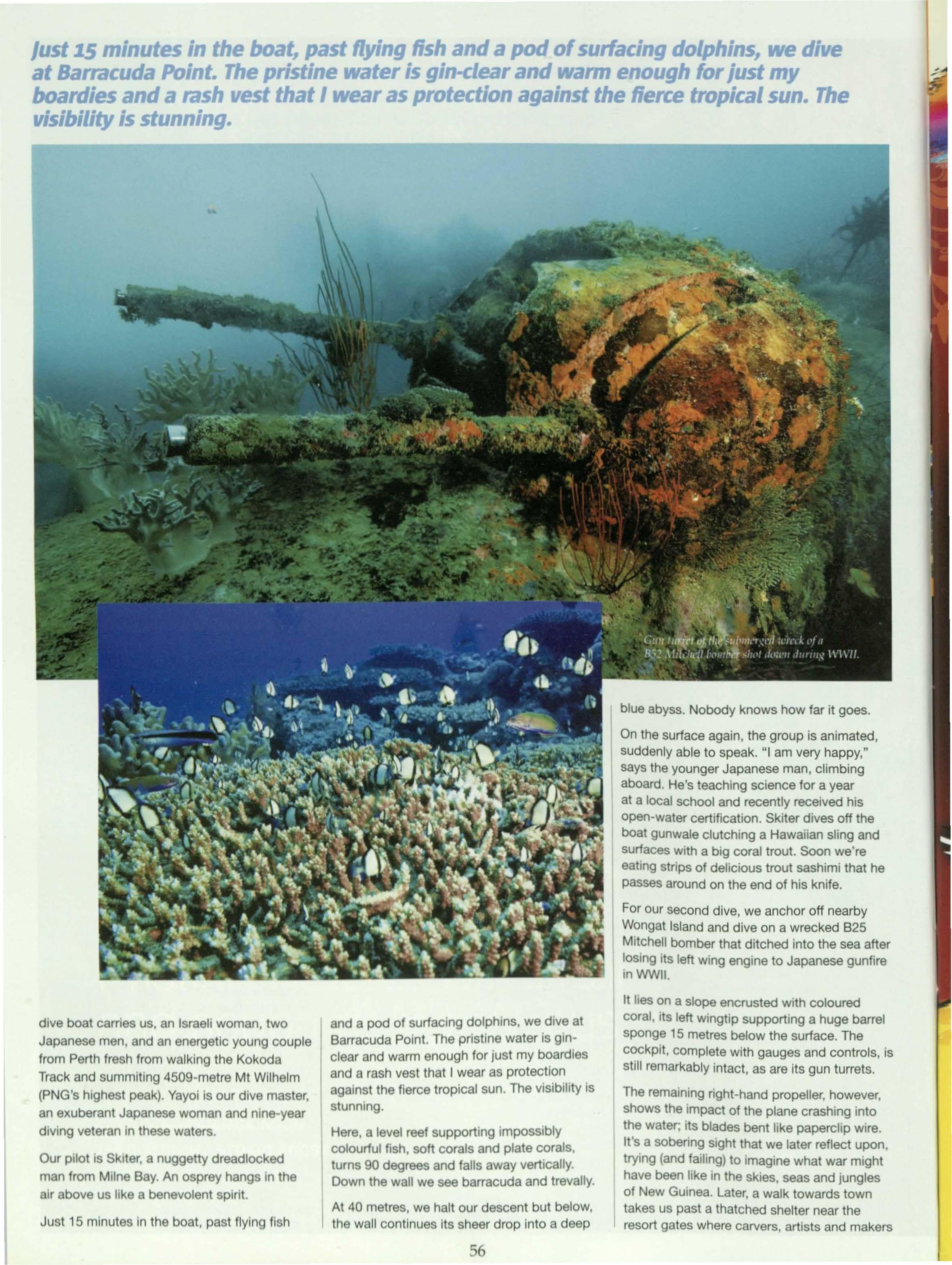
dive boat carries us, an Israeli woman, two Japanese men, and an energetic young couple from Perth fresh from walking the Kokoda Track and summlting 4509-metre Ml Wilhelm (PNG's highest peak). Yayol is our dive master, an exuberant Japanese woman and nine-year diving veteran In these waters.
Our pilot is Sk1ter,a nuggetty dreadlocked man from Milne Bay. An osprey hangs in the air above us like a benevolent spirit.
Just 15 minutes in the boat, past flying fish
and a pod of surfacing dolphins, we dive at Barracuda Point. The pristine water is ginclear and warm enough for just my boardies and a rash vest that I wear as protection against the fierce tropical sun. The visibility Is stunning.
Here, a level reef supporting impossibly colourful fish, soft corals and plate corals, turns 90 degrees and falls away vertically. Down the wall we see barracuda and trevally.
At 40 metres, we halt our descent but below, the wall continues Its sheer drop into a deep
blue abyss. Nobody knows how far it goes. On the surface again, the group is animated, suddenly able to speak. "I am very happy," says the younger Japanese man, climbing aboard. He's teaching science for a year at a local school and recently received his open-water certification. Skiter dives off the boat gunwale clutching a Hawaiian sling and surfaces with a big coral trout. Soon we're eating strips of delicious trout sashimi that he passes around on the end of his knife.
For our second dive, we anchor off nearby Wongat Island and dive on a wrecked B25 Mitchell bomber that ditched into the sea after losing its left wing engine to Japanese gunfire in WWII.
It lies on a slope encrusted with coloured coral, its left wingtip supporting a huge barrel sponge 15 metres below the surface. The cockpit, complete with gauges and controls, is still remarkably intact, as are its gun turrets.
The remaining right-hand propeller, however, shows the impact of the plane crashing into the water; its blades bent like paperclip wire. It's a sobering sight that we later reflect upon, trying (and failing) to imagine what war might have been like in the skies, seas and jungles of New Guinea. later, a walk towards town takes us past a thatched shelter near the resort gates where carvers, artists and makers

It turns out that the old Japanese man tours the world in his loud yellow wetsuit and flippers, diving wherever the whim takes him. Madang is his favourite place - it's compad and varied and the accommoda • n • e
of shell jewellery and bilum bags display their wares, offering 'good price' and 'discounts'.
We should buy, they explain, but they're not pushy. We walk around the waterfront and along the dusty streets of the town's centre. People smile and say hello, some extending a hand to hold a moment and connect.
There's an old cemetery next to the market in the town centre that's one of the last remaining relics of Germany's colonial ambitions in New Guinea. The Germans first settled at Finschhafen on Astrolabe Bay in 1884.
By 1899 they'd decamped to Madang and later on to Rabaul in New Britain where they finally established their highly profitable plantations that were later seized by the Australian military with the outbreak of the first great war in 1914. The little cemetery has the tombstones - worn and illegible - of some of the earliest German colonists and other subsequent European settlers.
At nightfall, the divers drift together back around a table at the resort's open-air waterfront restaurant for dinner, a fraternity of like minds and shared experience. It turns out that the old Japanese man tours the world in his loud yellow wetsuit and flippers, diving wherever the whim takes him.
Madang is his favourite place - it's compact and varied, and the accommodation is excellent. This is his fifth visit. He speaks no English, but Yayoi translates and the bilingual conversation and easy laughter are well oiled by South Pacific Lager and steaming clay pots of curry prawns. I'm feeling a little sunburnt and fizzy on nitro and adrenaline. The earth sways a little, like the deck of the dive boat.
Stu flips open his laptop and we look through the photos he's taken during the day underwater. They provoke 'ohs' and 'ahs' from the group, and launch more stories and rounds of drinks to celebrate. Trigger fish - that big! - and hammerhead sharks, giant
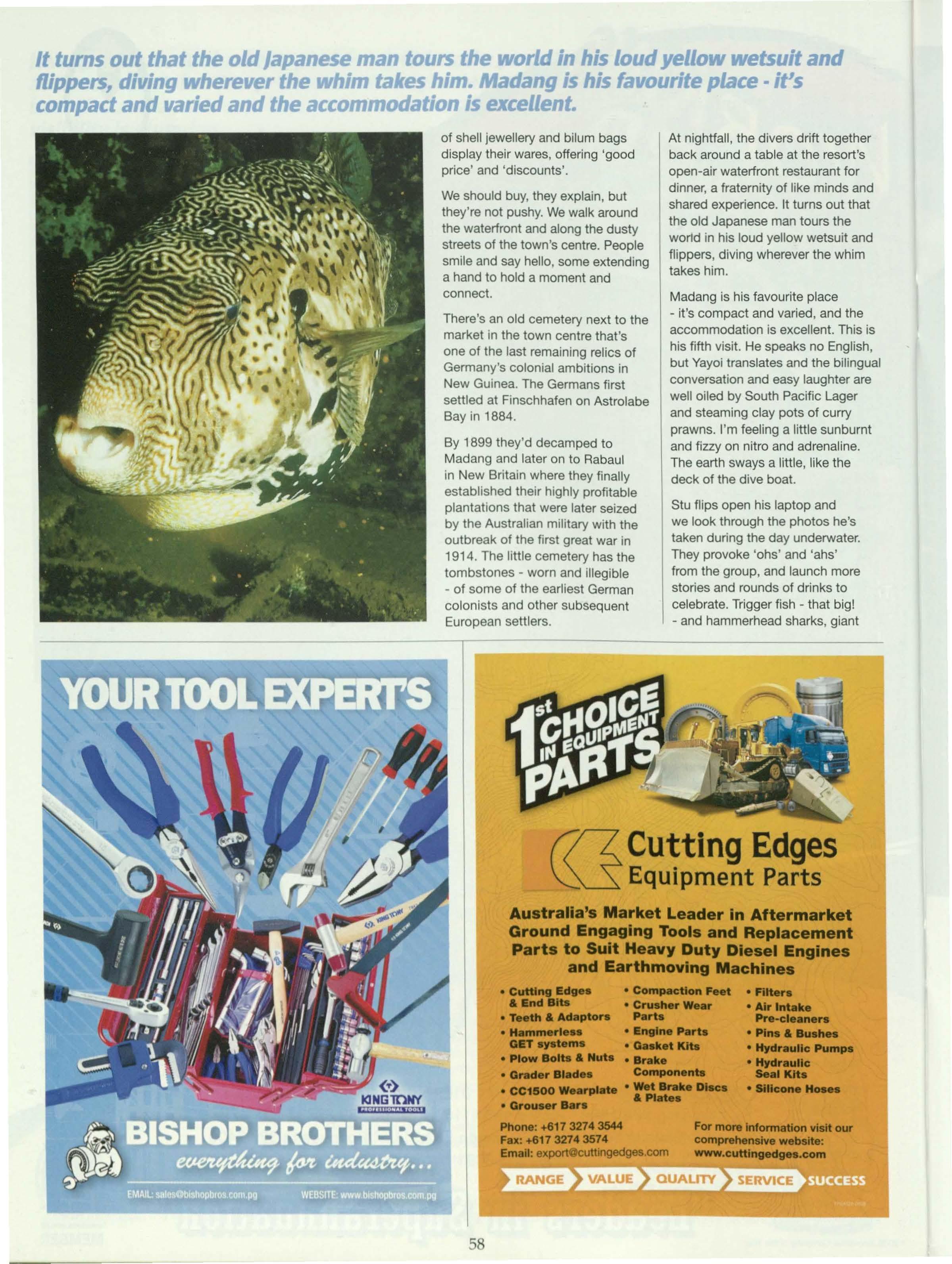
• PI- Bolts A Nuts
Brake
• Grader Bladn Components
• CC1800 Weerplate
•Fltt.rs
• Air Intake Pre-cleaners
• Pins a Bushn
• tt,draullc Pumps
• H,draullc SealKtts
• smc-
clams and turtles in diving fields in Australia, the Caribbean, South Pacific, the Red Sea, Andaman Islands and more.
No-one's telling the whole truth, there's a modicum of exaggeration, but we're all in on it and calling a bluff would be impolite.
And so it goes for a few more days. We dive with a Dutch couple, an Austrian WWF biologist, some Brits and Australian medical students doing internships at the local hospital. We dive deep on Planet Rock, a huge coral seamount that rises to four metres below the surface, and has dizzying numbers of jacks and snappers and bright reef fish, like sweetlips, clown and butterfly fish.
A sunken tug, the Henry Leith, near the 825 Mitchell bomber has a wheelhouse that we enter. We ride the tricky currents at Pig Passage and Rasch Passage, agog at the massive barrel sponges and fish numbers.
There are still more sites that we don't get to. Up the north coast road, there's the wreck of the USS Boston at Cape Croissilles and still further north, at Hansa Bay, the
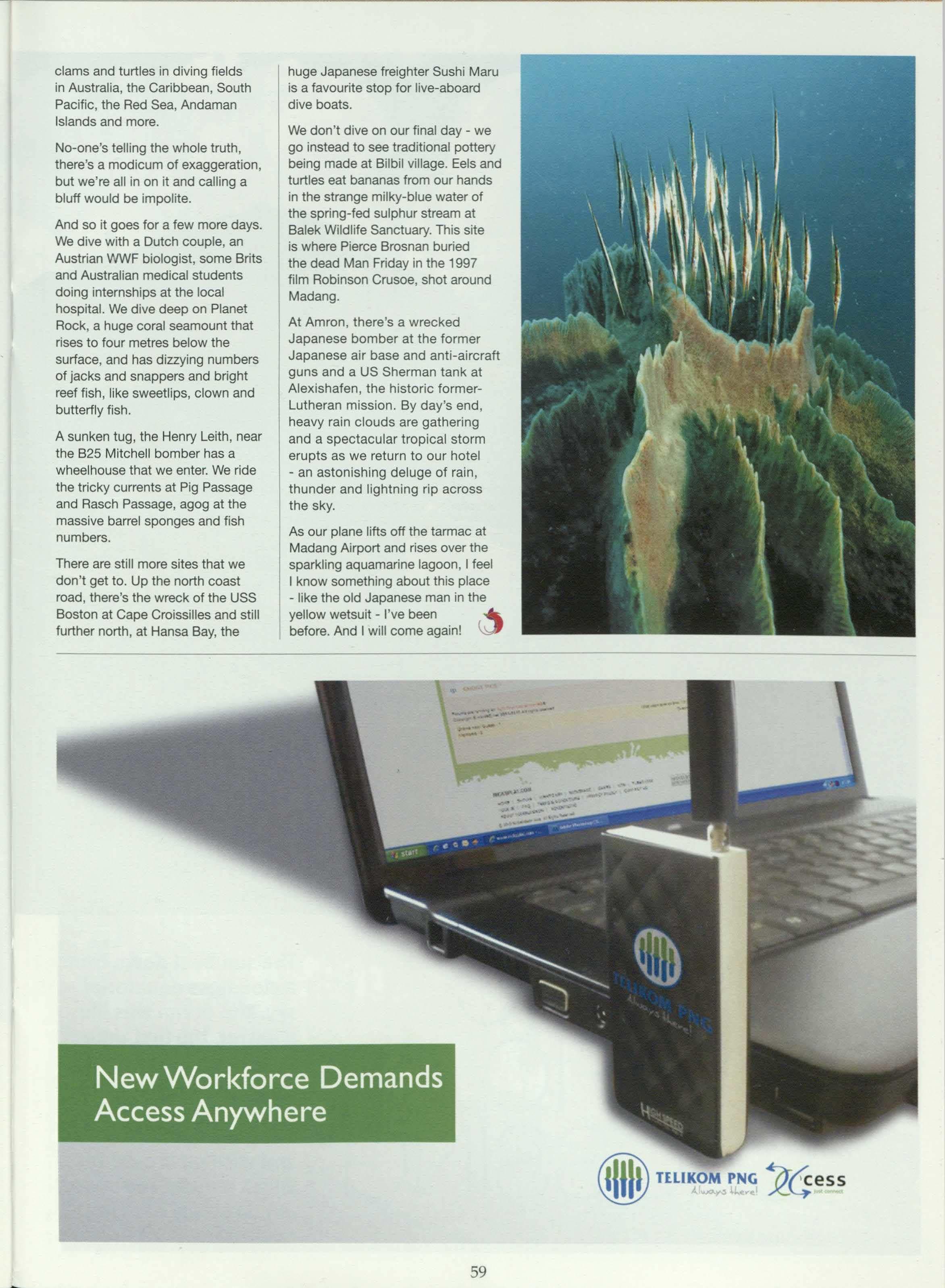
huge Japanese freighter Sushi Maru is a favourite stop for live-aboard dive boats.
We don't dive on our final day - we go instead to see traditional pottery being made at Bilbil village. Eels and turtles eat bananas from our hands in the strange milky-blue water of the spring-fed sulphur stream at Salek Wildlife Sanctuary. This site is where Pierce Brosnan buried the dead Man Friday in the 1997 film Robinson Crusoe, shot around Madang.
At Amron, there's a wrecked Japanese bomber at the former Japanese air base and anti-aircraft guns and a US Sherman tank at Alexishafen, the historic formerLutheran mission. By day's end, heavy rain clouds are gathering and a spectacular tropical storm erupts as we return to our hotel - an astonishing deluge of rain, thunder and lightning rip across the sky.
As our plane lifts off the tarmac at Madang Airport and rises over the sparkling aquamarine lagoon, I feel I know something about this place - like the old Japanese man in the yellow wetsuit - I've been .._ before. And I will come again! U
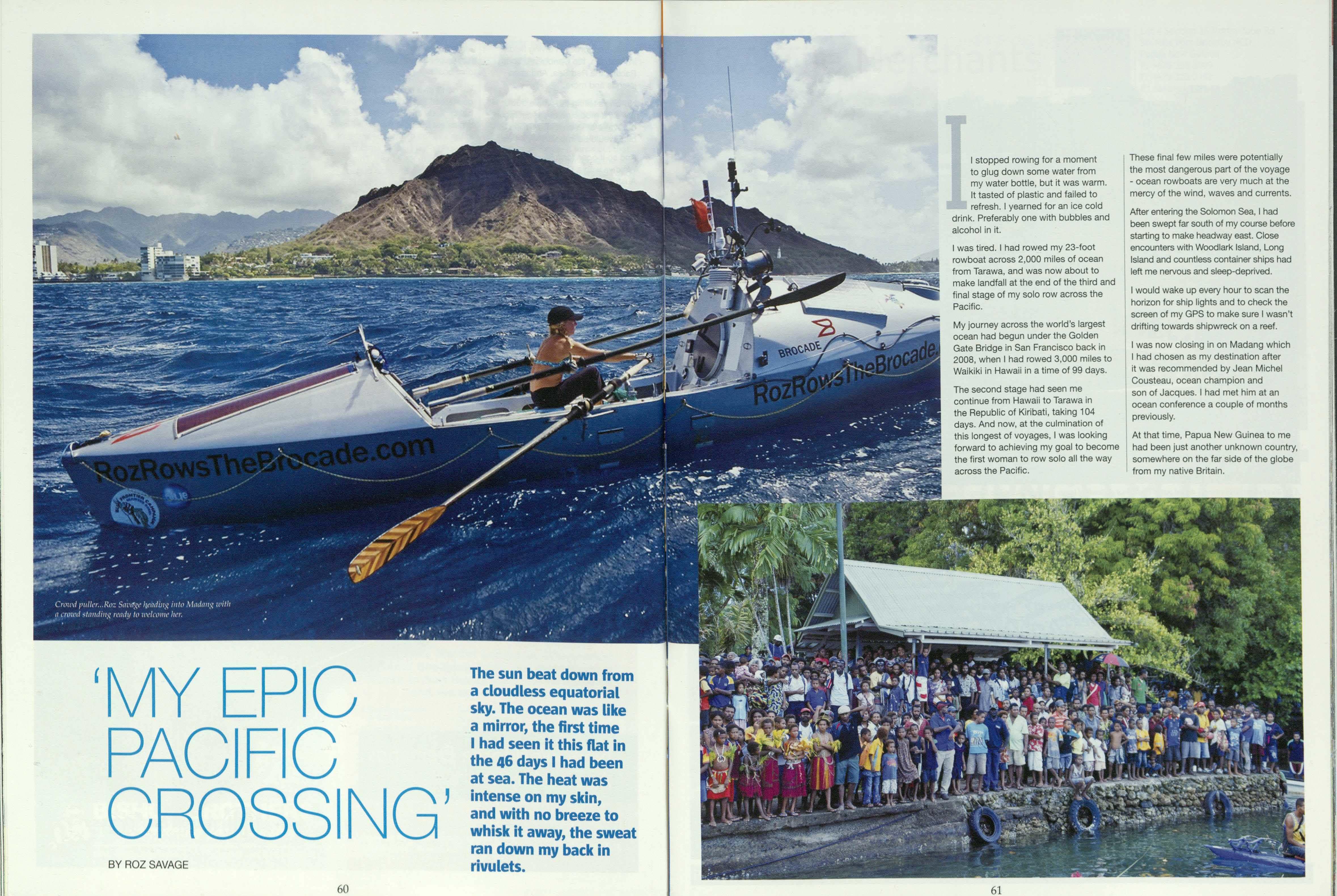
The sun beat down from a cloudlessequatorial sky.The oceanwas like a mirror,the first time I had seen it this flat in the 46 daysI had been at sea. The heat was intenseon my skin, and with no breezeto whisk it away, the sweat ran down my backin rivulets.
I stopped rowing for a moment to glug down some water from my water bottle, but it was warm. It tasted of plastic and failed to refresh. I yearned for an ice cold drink. Preferably one with bubbles and alcohol in it.
I was tired. had rowed my 23-foot rowboat across 2,000 miles of ocean from Tarawa, and was now about to make landfall at the end of the third and final stage of my solo row across the Pacific.
My journey across the world's largest ocean had begun under the Golden Gate Bridge in San Francisco back in 2008, when had rowed 3,000 miles to Waikiki in Hawaii in a time of 99 days.
The second stage had seen me continue from Hawaii to Tarawa in the Republic of Kiribati, taking 104 days. And now, at the culmination of this longest of voyages, I was looking forward to achieving my goal to become the first woman to row solo all the way across the Pacific.
These final few miles were potentially the most dangerous part of the voyage - ocean rowboats are very much at the mercy of the wind, waves and currents.
After entering the Solomon Sea, I had been swept far south of my course before starting to make headway east. Close encounters with Woodlark Island, Long Island and countless container ships had left me nervous and sleep-deprived.
I would wake up every hour to scan the horizon for ship lights and to check the screen of my GPS to make sure wasn't drifting towards shipwreck on a reef.
I was now closing in on Madang which I had chosen as my destination after it was recommended by Jean Michel Cousteau, ocean champion and son of Jacques. I had met him at an ocean conference a couple of months previously.
At that time, Papua New Guinea to me had been just another unknown country, somewhere on the far side of the globe from my native Britain.
ere were 1mesw en e discomfort,frustration,boredom and monotonybroughtme almost to the brink of insanity. Whensurroundedbyseaand sky,alone day after day,you very muchcreateyour own reality.

Now, it was the promised land. I had to be careful not to dehydrate In this equatorial heat, so I forced down some more of the hot, plasticky water and rowed on.
Even after so many miles across the ocean, I had been pushing hard these last few days and now I was nearing the end of my resources.
My head went down and I focused on just the next ten strokes, then the next ten, then the next ten.
After having already rowed over 2.5 million oarstrokes, these last few were proving to be the toughest yet.
I had come a long way from where I had started - figuratively and literally. Less than ten years before, I had been working in a London office, dissatisfied and unhappy with my life, but not knowing why. I wanted to find a purpose in life.
To try and find the answer to that question, I sat down one day and wrote two versions of my own obituary - the one I wanted and the one I was heading for. They were very different.
It was a huge wake-up call. I realised that if I carried on as I was, I wasn't going to end up where I wanted to be in five years or 20 years, or at the end of my life.
I looked at those two sheets of paper and realised I needed to make some big changes.
The Atlantic was my first ocean, and if I'd known how hard it was going to be, I would probably never have left the harbour. Although I'd thought I was well prepared, no amount of preparation could ever prepare me for the harsh reality of life alone at sea. I suffered saltwater sores on my backside, tendinitis in my shoulders, and was unable to speak to anybody after my satellite phone broke down 24 days before the end of my crossing. All four of my oars had broken before I reached halfway across the ocean, and I'd patched them up with duct tape and makeshift splints. There were times when the discomfort, frustration, boredom and monotony brought me almost

Aerial view of Madang
to the brink of insanity. When surrounded by sea and sky, alone day after day, you very much create your own reality.
As Henry David Thoreau once said, "It is easier to sail many thousands of miles through cold and storm and cannibals than it is to explore the private sea, the Atlantic and Pacific Ocean of one's being."
But it taught me that no matter how daunting the challenge, I could achieve almost anything, if I just kept sticking my oars in the water,
doing whatever it took to get me a bit closer to my goal. And I survived.
So how do you stop rowing the Atlantic? Well, naturally, you decide to row the Pacific.
I was nearly there. But would there be anybody to greet me? Or would it all be a complete anti-climax? My shore team consisted of a weatherman in the United States and my mother in Britain. Neither of them had been able to make the journey to help me celebrate the end of my voyage.
Maybe I would just roll up, moor my boat, buy myself a beer and contemplate my achievement alone - as alone as I had been for the rest of my epic voyage.
But nothing could have been further from what actually happened. Fifty miles out, a helicopter flown by former Governor of Madang and owner of Madang Resort, Sir Peter Barter dropped a bucket containing several cold beers, a sandwich and an advance message advising me what I could expect on arrival in Madang.

PortMoresby
P.O.Box143,Boroko
Ph:3255300
Fax:3259020
Email:admin@pom.esco.com.pg
Lae
P.O.Box1806,Lae
Ph:4721933
Fax:4723043
Rabaul / Kokopo
P.O.Box2153,Rabaul
Ph:9829154
Fax:9829170
Mt Hagen
P.O.Box88,Mt Hagen
Ph:5423073
Fax:5422737
Kimbe
P.O.Box99,Klmbe
Ph:9834205
Fax:9834214
• SOLARWORLD PANELS Also
• VILLAGELIGHTINGKITS MaintenancefreeVRLA Batteriesfor UPSSystems
• SOLARREGULATORS EmergencyLighting
• SOLARBATTERIES & SecuritySystem
• 12 VOLTLIGHTS& CABLES
• 12 VOLTSOLARPUMPS
• 12V & 24V INVERTERS
• SOLARREFRIGERATION
Closer to Madang, the first local people to congratulate me were fishermen out early in their outrigger canoes, who formed an orderly line to pass close to my boat and shake my hand.
But they were merely the advance welcoming party. As I paddled steadily onwards, I became aware of a growing human presence, a buzz of anticipation.
As I neared the harbour, a flotilla of about sixty canoes, decked out in traditional garlands of leaves, came to join me and escort me to
the dock. The paddlers smiled and sang and welcomed me to their country.
Sir Peter's helicopter buzzed overhead, shooting video and photos, whilst the beautiful Kalibobo Spirit and an estimated 5,000 people came down to the harbour to watch my arrival as I rowed into the harbour, past Kalibobo Village and Madang Resort.
Once on dry land, I was subjected to normal quarantine, immigration and customs formalities and formally welcomed by the

Governor Sir Arnold Arnet.
I then I shook about a thousand hands, everybody wanting to touch me and congratulate me and offer me traditional gifts. It could have been overwhelming to be surrounded by such a crush of humanity after 46 days at sea, but in fact it felt fantastic. Madang was giving me a right royal welcome. I am often asked what drives me onwards to row across oceans. It is having a sense of serving a grander purpose, through
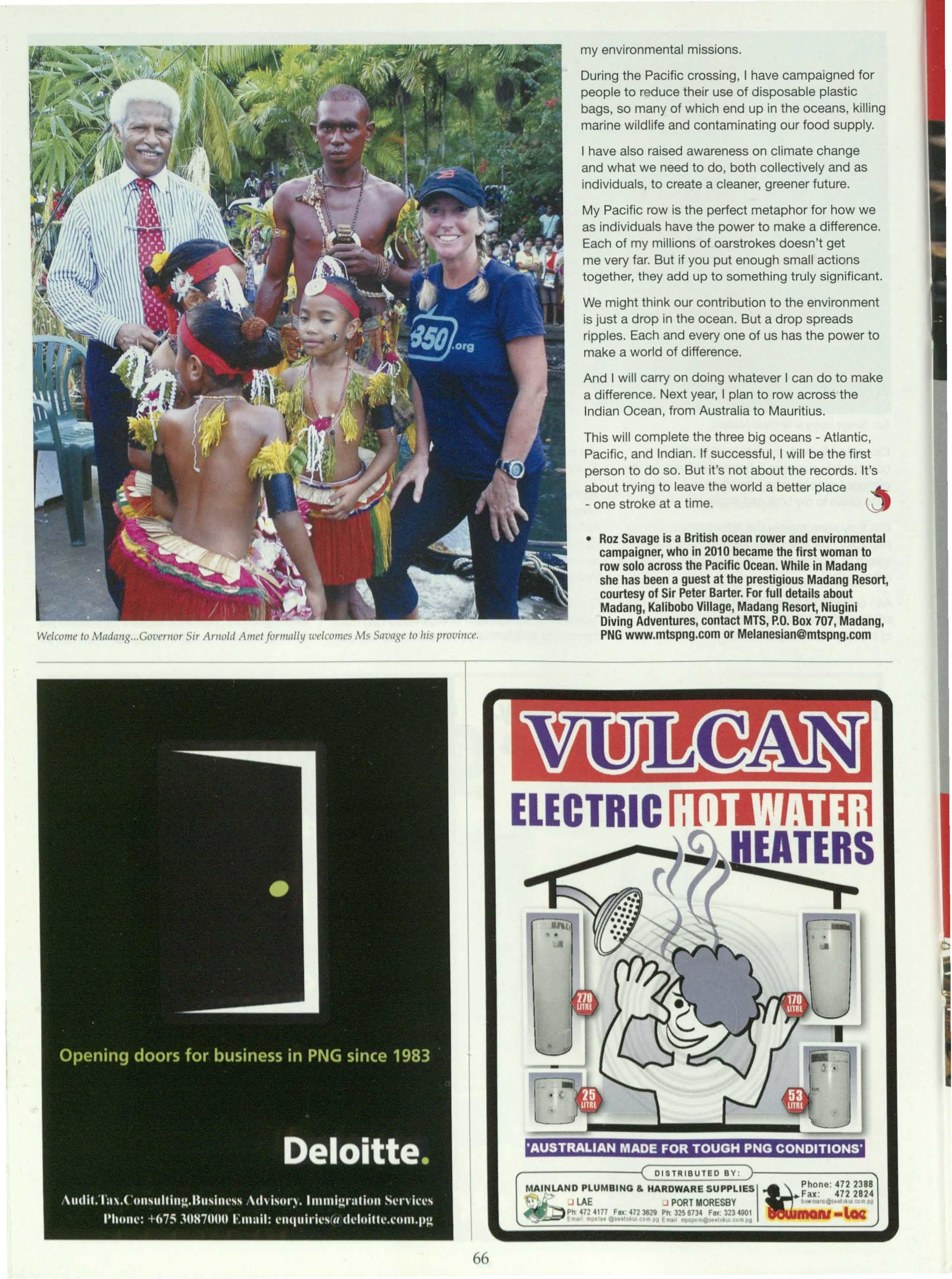
my environmental missions.
During the Pacific crossing, I have campaigned for people to reduce their use of disposable plastic bags, so many of which end up in the oceans, killing marine wildlife and contaminating our food supply.
I have also raised awareness on climate change and what we need to do, both collectively and as individuals, to create a cleaner, greener future.
My Pacific row is the perfect metaphor for how we as individuals have the power to make a difference. Each of my millions of oarstrokes doesn't get me very far. But if you put enough small actions together, they add up to something truly significant.
We might think our contribution to the environment is just a drop in the ocean. But a drop spreads ripples. Each and every one of us has the power to make a world of difference.
And I will carry on doing whatever I can do to make a difference. Next year, I plan to row across the Indian Ocean, from Australia to Mauritius.
This will complete the three big oceans - Atlantic, Pacific, and Indian. If successful, I will be the first person to do so. But it's not about the records. It's about trying to leave the world a better place ._ - one stroke at a time.
• RozSavageis a Britishoceanrowerandenvironmental campaigner,whoin 2010becamethefirstwomanto rowsoloacrossthe PacificOcean.Whilein Madang shehasbeena guestat the prestigiousMadangResort, courtesyof SirPeterBarter.Forfull detailsabout Madang,KaliboboVillage,MadangResort,Niugini DivingAdventures,contactMTS,P.O.Box707,Madang, PNGwww.mtspng.com or Melanesian@mtspng.com

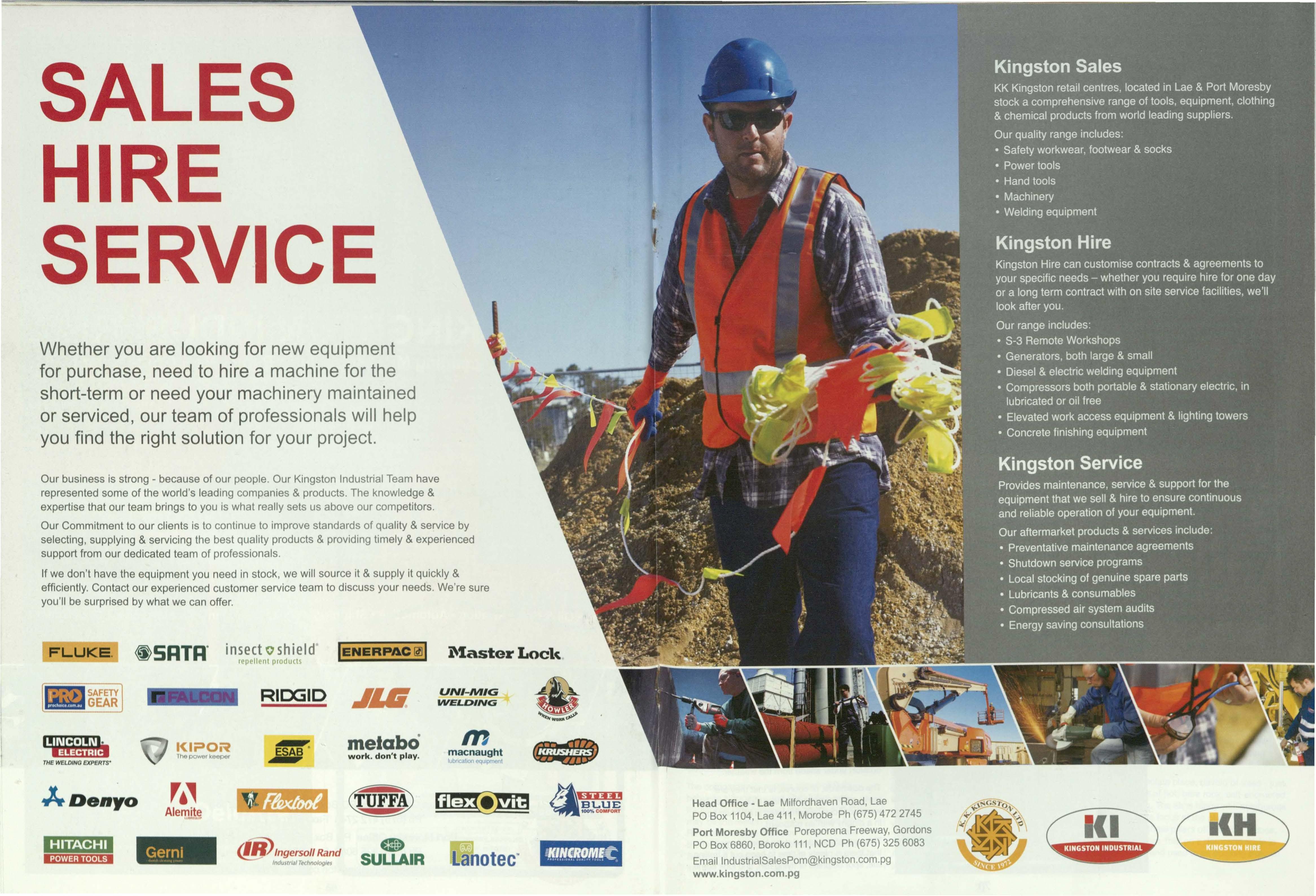
Whether you are looking for new equipment for purchase, need to hire a machine for the short-term or need your machinery maintained or serviced, our team of professionals will help you find the right solution for your project.
Our business is strong - because of our people. Our Kingston Industrial Team have represented some of the world's leading companies & products. The knowledge & expertise that our team brings to you is what really sets us above our competitors.
Our Commitment to our clients is to continue to improve standards of quality & service by selecting, supplying & servicing the best quality products & providing timely & experienced support from our dedicated team of professionals.
If we don't have the equipment you need in stock, we will source it & supply it quickly & efficiently. Contact our experienced customer service team to discuss your needs. We're sure you'll be surprised by what we can offer.
BY JOHN BROOKSBANK

t took hours to pass the small Duchess Island, off the west coast of Normanby Island, said to be the half way point between East Cape - the eastern-most point of mainland Papua New Guinea, where we had boarded - and the district centre of Esa'ala. on the other side of Normanby, where we were headed.
Life was definitely moving at a slower speed than the Port Moresby we had left earlier in the day.
With increasing world oil prices and a corresponding rise in the cost of zoom twostroke fuel, the use of dinghies and outboards in the coastal provinces such as Milne Bay has dropped dramatically.
The most economic way to travel around this maritime province now is by village work boat, such as the one we were travelling on.
These vessels are mostly powered by plodding diesel engines, can carry quite a number of people and plenty of cargo in reasonable comfort under shade from the weather.
The downside, of course, is that they are really, really slow; a five-hour plus journey by work boat can be completed in just two hours in a dinghy with an outboard.
This pedestrian speed does however mean that there is plenty of time to hang out a trolling line, spot dolphins or flying fish, and look at the
Fergussonkids with their island smiles.
Streamsdischarginginto the bay are at an almostsaunalike temperatureand amazinglyare home to some small fish. But the streamsare usedby local villagersfor bathing, washingcl thes, ts ans...
passing scenery and villages, the latter every time someone has to be dropped off and rowed to shore to go home, almost like a marine PMV.
The D'Entrecasteaux group of islands, off this north-east coast of Milne Bay, are large, mountainous and of volcanic origin and were named after Antoine d'Entrecasteaux, commander of the French Indian Naval Station, who was the first European to describe the islands in 1792.
The main islands of Normanby, Fergusson and Goodenough were named by Captain John Moresby in the Basilisk in 1874, respectively after the then governors of Queensland and New Zealand and the latter after his commander-in-chief of station, Commodore Goodenough.
The comparatively smaller island of Dobu between Normanby and Fergusson was traditionally the home of sorcerers, and this may be the reason why it was chosen by Reverend William Bromilow to be his base for the propagation of the Methodist Missionary Society of Australasia church work in the area in 1891.
From here European missionaries and South Sea Islands teachers established churches and schools on nearby islands and those of the Trobriand and Louisaide archipelagos.
This spread of mission influence ensured that the Dobu language became the lingua franca of the area. The mission also built a training institution at Salamo on Fergusson Island, where there is still a slipway and boat repair facilities today.
The time it takes to travel by work boat means plenty of time to chat and although the local patois may be Dobu, we soon find that everyone in Milne Bay seems to have gone to school and can fluently speak English, so no need to resort to pidgin to communicate.
The large islands are steep-sided with narrow beaches and in some cases no fringing reefs. We pull into the bay off Eda'iana village and its black sand beaches on Fergusson island, which by all accounts can rightly be called a 'hot' island.
All water in streams flowing from the island's inland hills to the coast is hot - almost too hot

to dip one's toe into - no need for Cold Power washing powder here!
Streams discharging into the bay are at an almost sauna-like temperature, and amazingly are home to some small fish. They are used by local villagers for swimming, washing clothes and pots and pans.
Fergusson Island rises to a height of 2073 metres and is cited by the Guinness Book of Records as the island having the highest mountain to the smallest base ratio in the world.
A strenuous one-and-a-half hour walk inland from Eda'iana on Fergusson through village gardens, then forest and fording a couple of hot streams and then a savannah of searing and scratchy kunai grass country, we finally come to Bolousunamo, the devil's cooking place. Looking down towards the coast we can see the occasional plume of steam shoot skyward above the treetops below - the Dei Dei hotspring geysers erupting intermittently.
It is a hot desolate place, devoid of trees - just a moonscape of hot, bare rock, salt-encrusted and steaming. The air is tangy with sulphurous fumes and the focus of the place was a formation of three pillars of standing stones, an arrangement that on a domestic scale is called du-du and used to sit cooking pots on above a fire.
Local legend has it that Bolousunamo was home to a giant who raided local villages for victims and brougl;lt them back to cook and eat at this cooking place, causing thunder and storms so his wife knew when he was returning.
Finally, when raiding Nade village, the giant was killed and his wife In her grief broke his lime pot, spilling Its contents everywhere - an explanation for the white colour of

most of the rocks in the area today. She then apparently turned into an eel and disappeared. Unfortunately, recent earth tremors have resulted in the toppling of oneand-a-half of the original three stone pillars, but the place still has a very unearthly feel about it.
Many places in the islands have legends associated with them, often explanations of the local geological formations.
At Ebelisitoana village, for example, houses are spread along a beach between two similarly shaped headlands - the male Atulamoa and the female Atuwaine, the latter with a huge hole through one end of it.
The local creation myth states that the couple on returning from Woodlark Island disagreed on whether they should face the land or the sea and the man in his anger threw a rock at his wife, killing her.
This white coloured rock created the hole in her head and eventually landed in the sea near Salamo, where it still stands today.
Goodenough is the largest island in the group, at one point being 26 kilometres across and having a mountainous centre that rises to 2566 metres.
The rugged topography constrained too much interaction between villagers allowing the development of separate cultures, Normanby Island for example, is home to three distinctly different languages.
The communities of D'Entrecasteaux islands are linked together and with people in other island groups of the province are members of the Kula trade ring. This trade ring involves
the exchange of prestigious items and more mundane trade goods. This important trade system continues today with exchanges being negotiated by clan leaders at special ceremonies. Although trade dealings such as the Kula exchanges are controlled by men most Milne Bay societies are matriarchal so it is the women who control the use of land for gardens or housing.
Life on these islands of Milne Bay is basic, subsisting off food caught in the sea or grown in gardens, with yams as the main staple crop, supplemented with sago and other vegetables.
Everywhere you go, children and adults can be seen happily paddling around offshore with nets or fishing lines, on small outrigger canoes that seem to have virtually no freeboard and appear likely to capsize at any moment!
Visiting the D'Entrecasteaux islands and elsewhere in this maritime province of more than 160 named islands and more than 400 other cays and atolls provides an insight into rural life in such island communities.
So if you are in Milne Bay, make the effort to catch a rural PMV to East Cape (only K30) and hitch a ride on a work boat and travel to the unique islands of the D'Entrecasteaux group - you .._ won't regret it! U
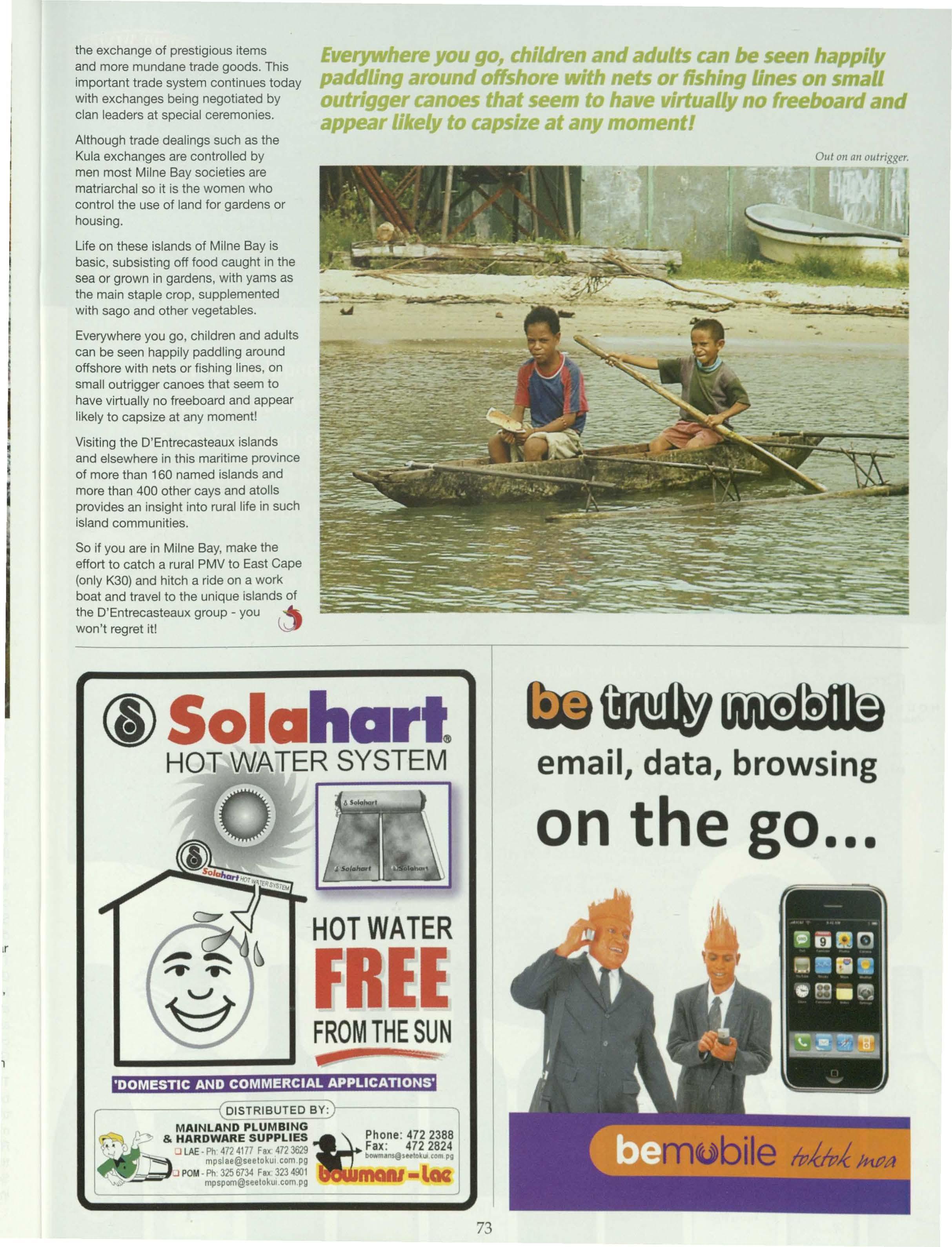
verywhereyou go, childrenand adults can be seen happily addlingaroundoffshorewith nets or fishinglines on small utriggercanoesthat seem to have virtuallyno freeboardand appear likely to capsizeat any moment!
HOUGHTON d!it,1,,.,14,.,r, "ROOl,,IAND VAi I l'Y ,._ ,,_.,,..,,,_"'-._
IIIOIDIN BIDDI r:J f ~.tl<-,,, ( /,r.J/,;w/,;,,
ESTD HARDY§ 1853
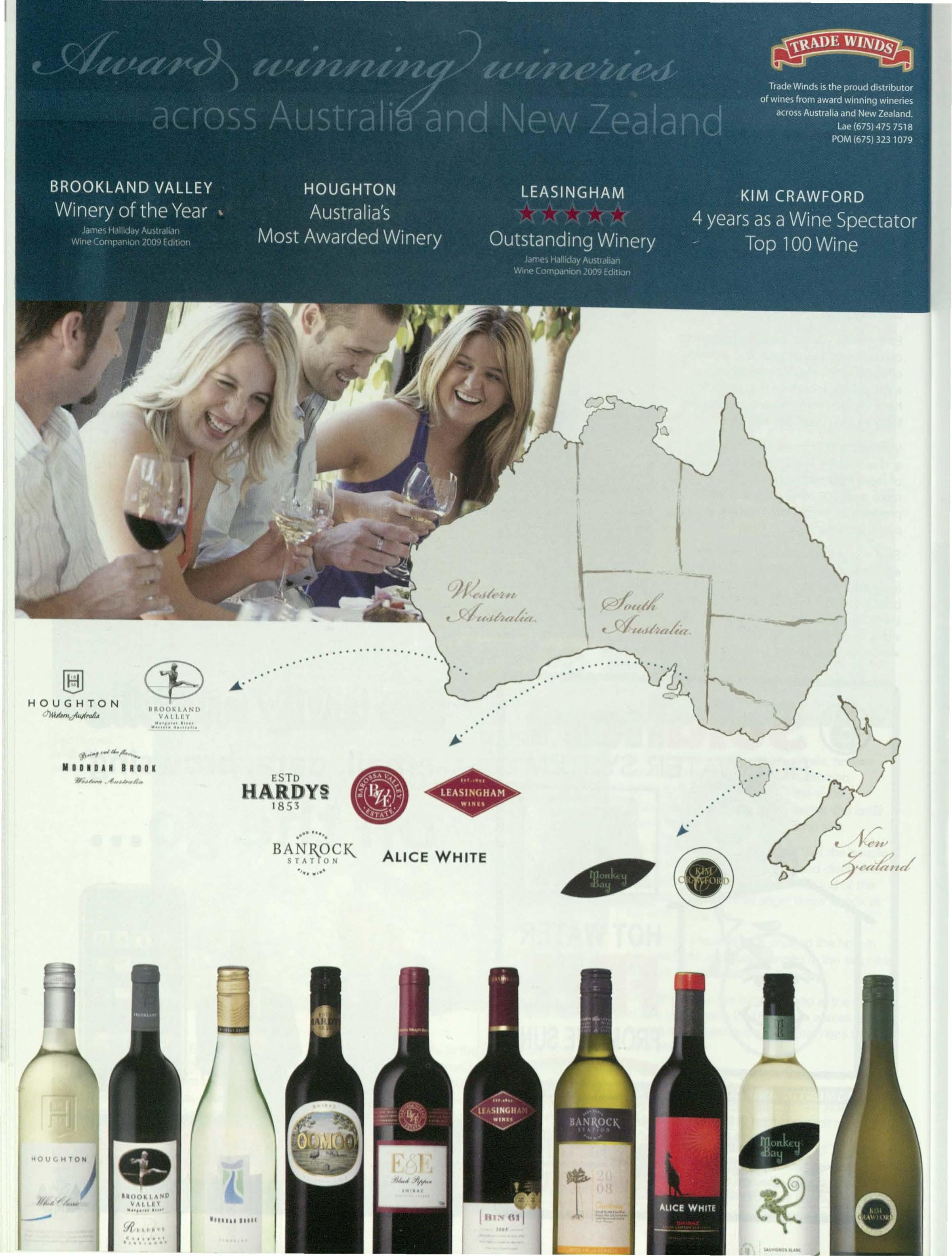
k';/;,,1;f
<:/,J ,,,;;;, f






uruka Tau is one of PNG's most well-known musicians and has been for a long time.
These days the talented Tau teaches music at Ela Murray International School (EMIS) where he has been for the past 11 years, somewhat of a milestone in his own personal work history. And if you enjoy music, treat yourself to an evening at the Crowne Plaza where you can be privy to his broad repertoire every Monday, Wednesday and Friday night from 6:30pm to 9:30pm.
But don't be fooled by this man's complacent exterior and pleasant music because this 'rock head', as he calls himself, has a colourful history that lights up the imagination of anyone who cares to listen!
Buruka grew up in Tubusereia, a large Motuan coastal village east of Port Moresby, where he completed his primary schooling. His father cooked for Generals McArthur and Morrison during the war.
He completed secondary and tertiary studies in the city, including teacher training. It was at the National Arts School in 1978 that he became a foundation member of the great Sanguma band that rocked the nation and the world with its unique sound and style in the late seventies and eighties.
"It was way ahead of its time," he recalls. Students at UPNG's National Arts School are still periodically taught and inspired by PNG's living legends like Buruka, Aaron Murray, Raymond Hakena, Apa Saun, Tony Subam,
BY DIANA MCMANUS
In fact, he was awarded an Australian centenary medal by the Australian Government for services to Australian society through music.
But excellence and success sometimes come at a price. Buruka became sick and had to withdraw. He relays wistfully that he was asked to play at the closing ceremony of the Sydney Olympics but had to decline on the grounds of sickness. But what was a temporary personal setback for the man has turned out to be of great benefit in other dimensions, particularly for his family and for the youth of Port Moresby.
Buruka has seven children and, not surprisingly, they are all musically talented. "Second son Joseph plays wicked guitar and sings," says his dad. Son George, apart from being a talented singer and actor, is a rap dancer of excellence and has a company of rappers.
Port Moresby theatre audiences will remember George as the 'hot' young man in Mamma Mia and his rappers who wowed viewers in the disco scene. "He's doing really well for himself," Buruka says with pride.
Younger daughters, Natasha (13) In Year 8, and Pauline (11) in Year 6, both have fabulous voices which Buruka nurtures and they sing with him regularly on Saturday nights at the offshore resort on Loloata.
Natasha's voice Is rich and mature, and Paullne's Is sweet and high. "They complement each other well," he observed.
"I work them hard," Buruka says. "Maybe they mightn't like that while they're young, but they'll come to appreciate it when they grow older. I want to give them the sort of musical start that I missed out on."
In fact Natasha recently auditioned with
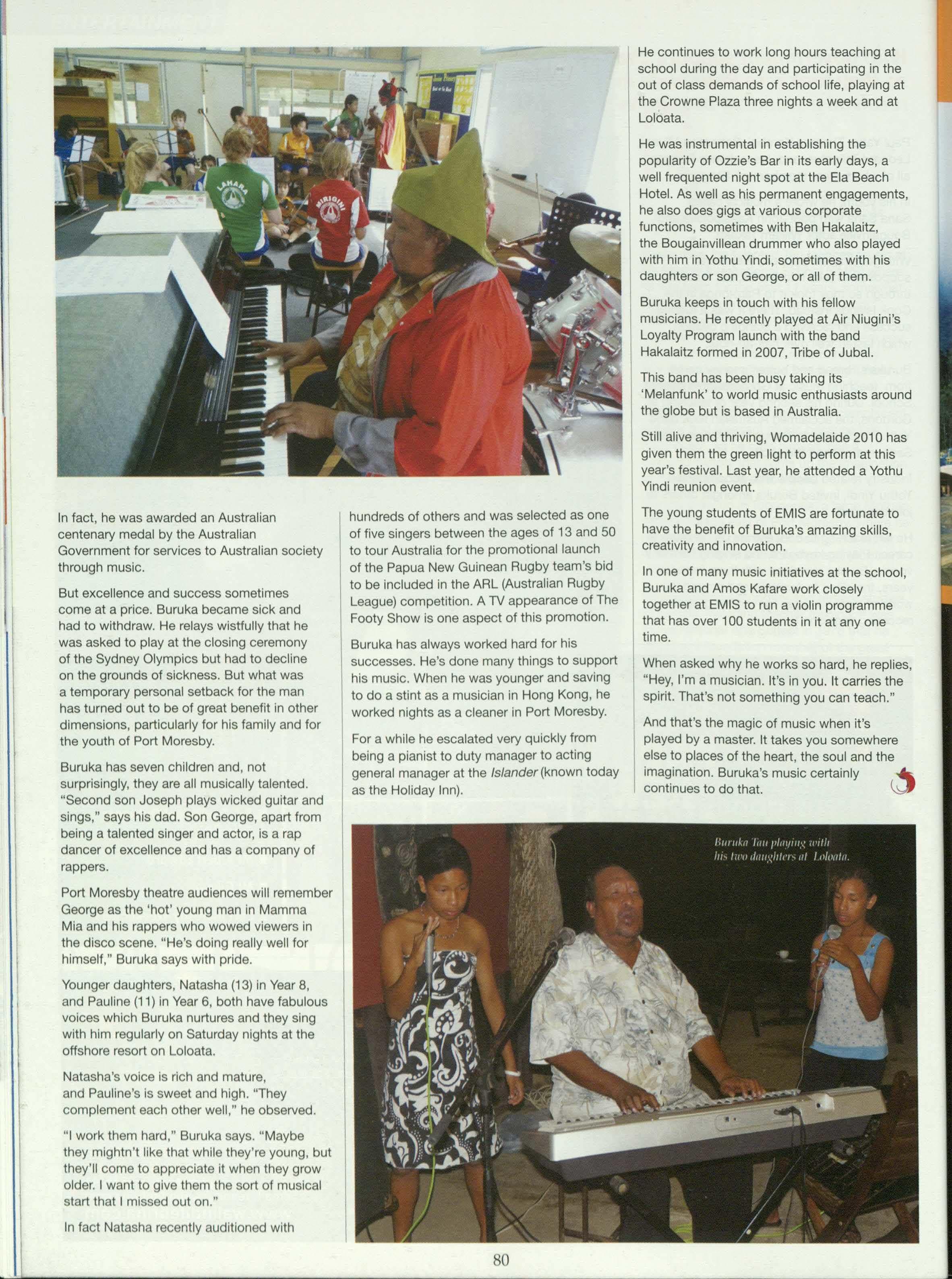
hundreds of others and was selected as one of five singers between the ages of 13 and 50 to tour Australia for the promotional launch of the Papua New Guinean Rugby team's bid to be included in the ARL (Australian Rugby League) competition. A TV appearance of The Footy Show is one aspect of this promotion.
Buruka has always worked hard for his successes. He's done many things to support his music. When he was younger and saving to do a stint as a musician in Hong Kong, he worked nights as a cleaner in Port Moresby.
For a while he escalated very quickly from being a pianist to duty manager to acting general manager at the Islander (known today as the Holiday Inn).
He continues to work long hours teaching at school during the day and participating in the out of class demands of school life, playing at the Crowne Plaza three nights a week and at Loloata.
He was instrumental in establishing the popularity of Ozzie's Bar in its early days, a well frequented night spot at the Ela Beach Hotel. As well as his permanent engagements, he also does gigs at various corporate functions, sometimes with Ben Hakalaitz, the Bougainvillean drummer who also played with him in Yothu Yindi, sometimes with his daughters or son George, or all of them.
Buruka keeps in touch with his fellow musicians. He recently played at Air Niugini's Loyalty Program launch with the band Hakalaitz formed in 2007, Tribe of Jubal.
This band has been busy taking its 'Melanfunk' to world music enthusiasts around the globe but is based in Australia.
Still alive and thriving, Womadelaide 2010 has given them the green light to perform at this year's festival. Last year, he attended a Yothu Yindi reunion event.
The young students of EMIS are fortunate to have the benefit of Buruka's amazing skills, creativity and innovation.
In one of many music initiatives at the school, Buruka and Amos Kafare work closely together at EMIS to run a violin programme that has over 100 students in it at any one time.
When asked why he works so hard, he replies, "Hey, I'm a musician. It's in you. It carries the spirit. That's not something you can teach." And that's the magic of music when it's played by a master. It takes you somewhere else to places of the heart, the soul and the imagination. Buruka's music certainly continues to do that.
• Construction Projects and Services
• Industrial & Commercial Works • Residential& Civil Works

Services:
• Architectural
• Structural Steel
• Electrical & Air Conditioning
• Glass & Aluminium
• Joinery Manufacturers
• Plumbing & Gas
• Concrete Plant (80m3 per Hour)
Equipment Hire:
• Cranes from 20 to 110tons
• Dozers
• Excavators
• Trucks
• Concrete Mixers
• Rollers
• Backhoes
• Boom-Lifts
• Generators
• Compressors
And many more item
• Tug and barge services
• Harbour facilities
• Sawmill& LoggingOperations
• Kiln Dry Facilities
• Cabinet & Timber Joinery
• Indoor Furniture
• Furniture Furnishing
• Timber Mouldings
• Outdoor Furniture
Lae
Head Office Montoro Street PO.Box 1730
Lae,Morobe Prov.41 I PapuaNew Guinea
Tel : (675) 472-4000
Fax: (675) 472-5494
Email: lae@lbcgroup.com.pg
Branches:
Madang
Tel : (675) 852-2499
Email: madang@lbcgroup.com.pg
Port Moresby
Tel : (675) 325-0715
Email: lbcpom@daltron.com.pg
Kokopo
Tel: (675) 928-9815
Email: kokopo@lbcgroup.com.pg

Budget International Standards to Papua New Guinea
Of all the challengesconfrontinga personsloggingtheir way along the 96-kilometreKokodaTrack,the possibility of drinkingtoo muchwater is not likely to be high on the list for mosttrekkers.
ut that is exactly what a team of doctors from Queensland are suggesting might be a contributing factor in the causes of illness experienced by some people undertaking the arduous walk.
Four specialist Emergency Medicine
Physicians from the Department of Emergency Medicine at the Royal Brisbane and Women's Hospital recently flew to Papua New Guinea to undertake the study. The group also included an Emergency Registrar from Port Moresby General Hospital who was able to gain some valuable experience working alongside the doctors.
The doctors split into two teams, one walking from Kokoda on the northern end of the track, and the other, starting at Owers Corner on the southern end.
One group hiked to lsurava and the other to loribaiwa - places which would normally be considered a two-day walk for many trekkers.
"Our evidence suggests that trekkers experiencing health issues tend to do so at around the two-day mark and that is why we specifically chose these points to undertake the study," says Dr David Rosengren.
Here, the doctors set up testing centres where they sought the cooperation of trekkers to volunteer a small amount of blood.
Armed with high-tech machines about the size of a house brick, the doctors were able to quickly analyse the blood samples measuring a range of levels, the results of which would give an accurate indication as to peoples' levels of hydration.
BY COLIN TAIMBARI

The programme was contracted by the Kokoda Track Authority (KTA) as part of the PNG and Australian Government-funded Kokoda Track Safety Package.
Chairman of the KTA, James Enage, says the research will provide a wealth of invaluable data to be passed on to trekking companies. This in turn will contribute to a safer trekking experience for those looking to make the arduous journey over the Owen Stanley Ranges.
"This research will provide another tool for trekking companies to use to help ensure the health and safety of clients," says Enage.
"The companies are very excited about the research and keen to see the results. They
want any information which will help improve the trekking experience."
Dr Rosengren is one of the doctors who made the two-day trek to loribaiwa village. This meant struggling over the infamous lmita Ridge and most of the way up loribaiwa Ridge.
"It was quite a slog.This is my first time on the track and while I am a keen student of the Kokoda campaign, it was hard to get a real sense of what it was going to be like before you get here. And this is a key factor confronting many trekkers, Dr Rosengren said.
"Those first couple of days are really testing, you're excited, it's hot and you're a little unsure of yourself at the same time. It is a real mixture of emotions and no doubt contributes to bringing any potential health issues to the surface within those crucial first couple of days."
The doctors' theory on some people being over-hydrated relates to this. "Our theory is that some people are so concerned about keeping their fluid levels up that they actually drink far in excess of what their body requires," says Dr Sean Rothwell, who accompanied Dr Rosengren to loribaiwa.
"The problem with this is that drinking excessive amounts of water can be just as detrimental as not drinking enough."
This is not a new theory. Several studies have been done including one involving participants in the London marathon where it was shown that a small percentage of people had consumed too much water. This has the effect of diluting the body's sodium levels and can potentially result in seizures, blackouts and, in a worst-case scenario, death.
The doctors have evidence that shows this was the case with Australia's Debra Paver who went into a coma on the track last year.
"On reviewing her records, they showed that Paver was in a critical condition and very close to dyi•ng/ said Sean.
"The data we were able to obtain on her case clearly showed that sne-had consumed a large amount of water and that this had been a contributing factor in her going into a coma. She was extremely lucky that she was able to be treated by doctors who were passing by and then evacuated to an intensive care facility."
It was this case and other evidence which prompted the doctors to speak with PNG's Kokoda Track Authority to offer their services to undertake a study, the results of which the doctors believe would add to the knowledge base of trekking companies.
The study had strong support within the trekking industry. John Miles, head of Executive Excellence, a long-time Kokoda operator, said the results would provide another level of comfort to his clients in their preparation and during the actual walk.
"While we already have a good idea about what is required to make the Kokoda walk,

the kind of information which will come out of this study will support and enhance this knowledge."
Wayne Wetherill from Kokoda Spirit agrees. "Anything that gives people confidence that they can walk the track with the right information and preparation is an enormous benefit."
There were no shortage of trekkers prepared to be involved in the study at both loribaiwa and lsurava. Over three days, about 185 trekkers were prepared to give up a small amount of blood in exchange for data about their hydration status.
Fifty-three year old Deb Clift from Binningup in Western Australia was one of those who volunteered.
"It's a good thing to do. If it's going to improve the walk for someone else, that's great."
For Deb, the test took on a more important meaning. She was one of three trekkers whose results showed reduced sodium levels. Information she had supplied to the doctors suggested she had been forcing herself to regularly consume large amounts of water.
"I thought I was doing the right thing by drinking heaps. We're so hell-bent on replacing fluids."E
Deb was feeling healthy but on the advice of the doctors she drank little over the next three hours and was tested again, the results of
which showed her levels returning to normal.
"I'll listen to the doctors and only drink when I'm thirsty," said Deb.
While the doctors agreed that Deb had not been in any immediate danger, the potential for something to escalate was there and they were happy to be able to provide advice.
"This is one of the myths we are trying to address," said Rothwell, "that you need to force yourself to drink even when you are not thirsty.
"While we certainly don't want people to end up dehydrated, our advice to people walking the track is to drink when you're thirsty. You should not have to force yourself to drink."
While there were only three cases out the 185 people tested that were of real concern, the information gathered will be provided to KTA which will be of benefit to its members.
"Our research showed that generally the people we tested were managing their hydration levels very well and this is a very good thing," said Dr Rosengren.
"It shows that the Industry is responsible and well informed and they are getting this information to their clients.
The research data we provide will further enhance the knowledge base about hydration levels and this, we hope, will make for an even better and safer trekking
experience."

As your flight lands at Jackson's International Airport in Port Moresby, you are instantly greeted by the imposing landmark that is Airways Hotel.
Nestled into the mountainside, this once modest 33-room motel has not only changed the landscape, but redefined the hospitality industry in PNG.
Within the stunning gardens of the hotel, a plethora of activity is disguised by an all encompassing tranquility that is enjoyed by visitors from all over the world.
The morphing of the effici nl buzz of business activity with the serenity of the hotel has come to represent the unique nature of hospitality, Airways style. It is something that you would only expect lo find in the 'Land of the Unexpected'.
The hotel has been been in a continuous upgrade mode in the last six years which has seen introductions of facilities such as Seven C's, Deli KC's, hotel butler service, the new liaam clay spa, the Health and Racquet Club and, most recently, the completion of the stunning new Dakota Wing of the hotel.
The 62 new Dakota rooms, junior suites and suites, all with private balconies that take in breathtaking panoramic views, provide all the facilities one expects from a world-class hotel and then adds copious amounts of unique and stunning features that ensure your stay in the Dakota wing will be more than memorable.
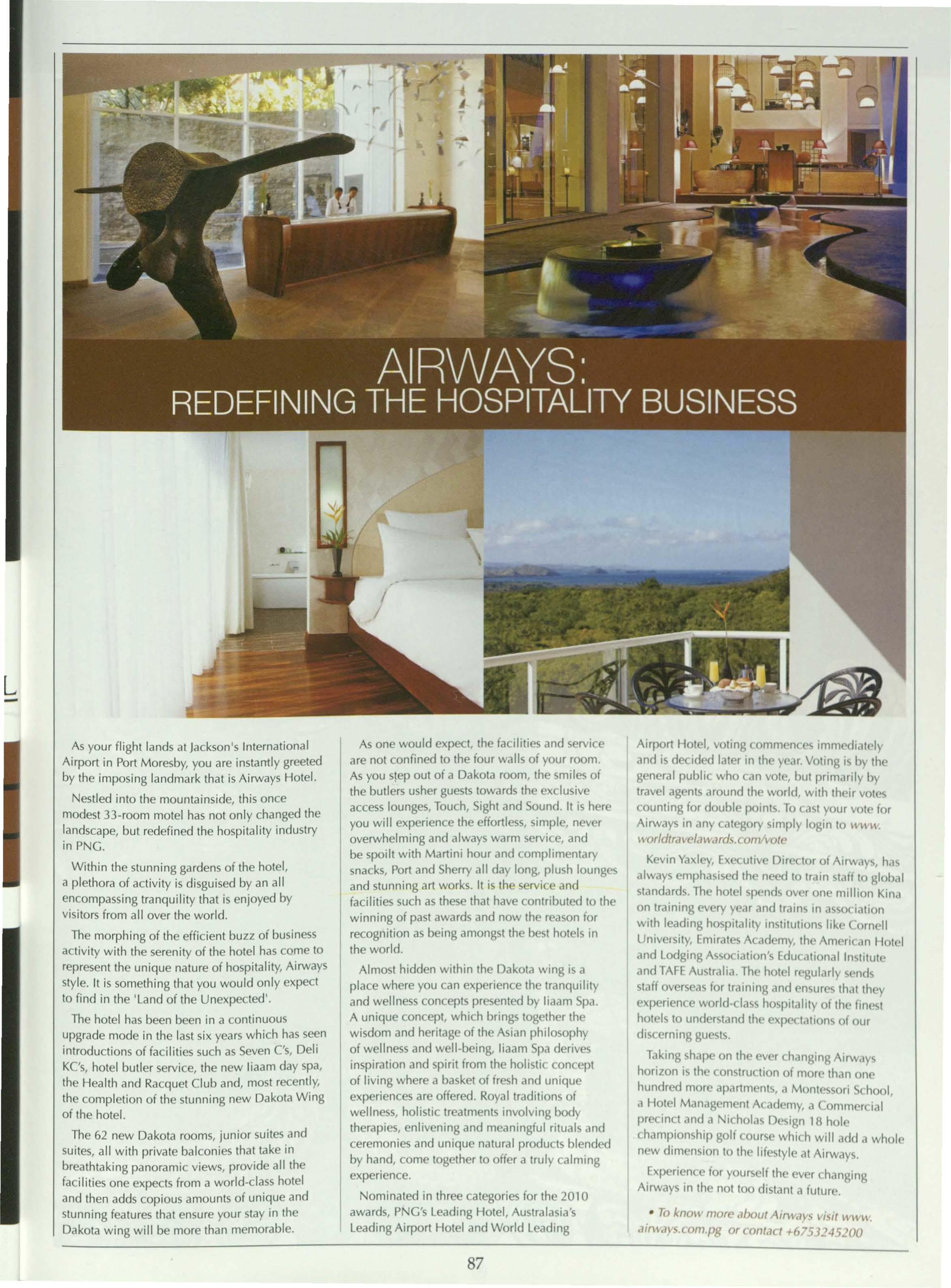
As one would expect, the facilities and service are not confined to the four walls of your room.
As you s[ep out of a Dakota room, the smile of the butlers usher guests towards the exclusiv access lounges, Touch, Sight and ound. It is her you will experience the effortless, imple, never overwhelming and always warms rvice, and be spoilt with Martini hour and complimentary snacks, Port and herry all day long, plush loung and stunning art works. It i the servi e and facilities such as these that have contributed to the winning of past awards and now th reason for recognition as b ing amongst th b st hotels in the world.
Almost hidden within the Dakota wing is a place where you can experience the lranquil1ty and wellness concepts presented by liaam pa. A unique concept, which brings together the wisdom and heritage of the Asian philosophy of wellness and w II-being, liaam pa derive inspiration and spirit from the holistic concept of living where a basket of fresh and unique exp riences are offered. Royal traditions of wellness, holistic treatments involving body therapies, enliv ning and meaningful rituals and ceremonies and unique natural produ ts blended by hand, come tog ther to offer a truly calming experience.
ominated in three categories for the 2010 awards, PNG's Leading Hotel, Australa ia's Leading Airport Hotel and World L ading
Airport Hot I, voting commenn•s immediatC'ly and is d ided later in the} M Voting is hy the g neral public who can vote, but primarily by travel ag nt. around th world, with thC'ir vot s ounting for double points. To cast your votC'for Airways in any ategory imply login to 1H,11 1,or/dtra1e/,m,ud .conv\ote
Kevin Yaxley, Ex ullve DirC'Ctorof A1rw, ys, has always empha i d then cl lo train staff 10global standards.The hot I spends ovl'f one million Kina on training ev ry y ar and trains in a oc i,1tion with leading ho pitality institution lik<' Cornell Univ ,sity, [mi rat s Academy, th • Am ncan I lot and Lodging Associallon's Educational lm1,1ute and TAFEAustralia The hot I regul,1rly sC'nds staff overs as for training and nsur s th,1t th •y experience world- lass ho pit,1lity of th finest hotel to under tand thC'expN ta11onsof our discerning guests.
Taking shap on the v r hanging A1rw,1ys horizon is the onstru lion of m r than on hundred more apartments, a Montessori chool, a Hotel Manag m nt Academy, a Comm rcial pr inct and a ichola D sign 18 ho! champion hip golf our whi h will add a whole' n w dimension to th life tyl at Airways.
E p rienc for yours If the ev r changing Airway in th not too di tant a future.
• To kno1, more about Amv,1ys visit 1, w1,. ain,a1 s.com.pg or contact +6753245200
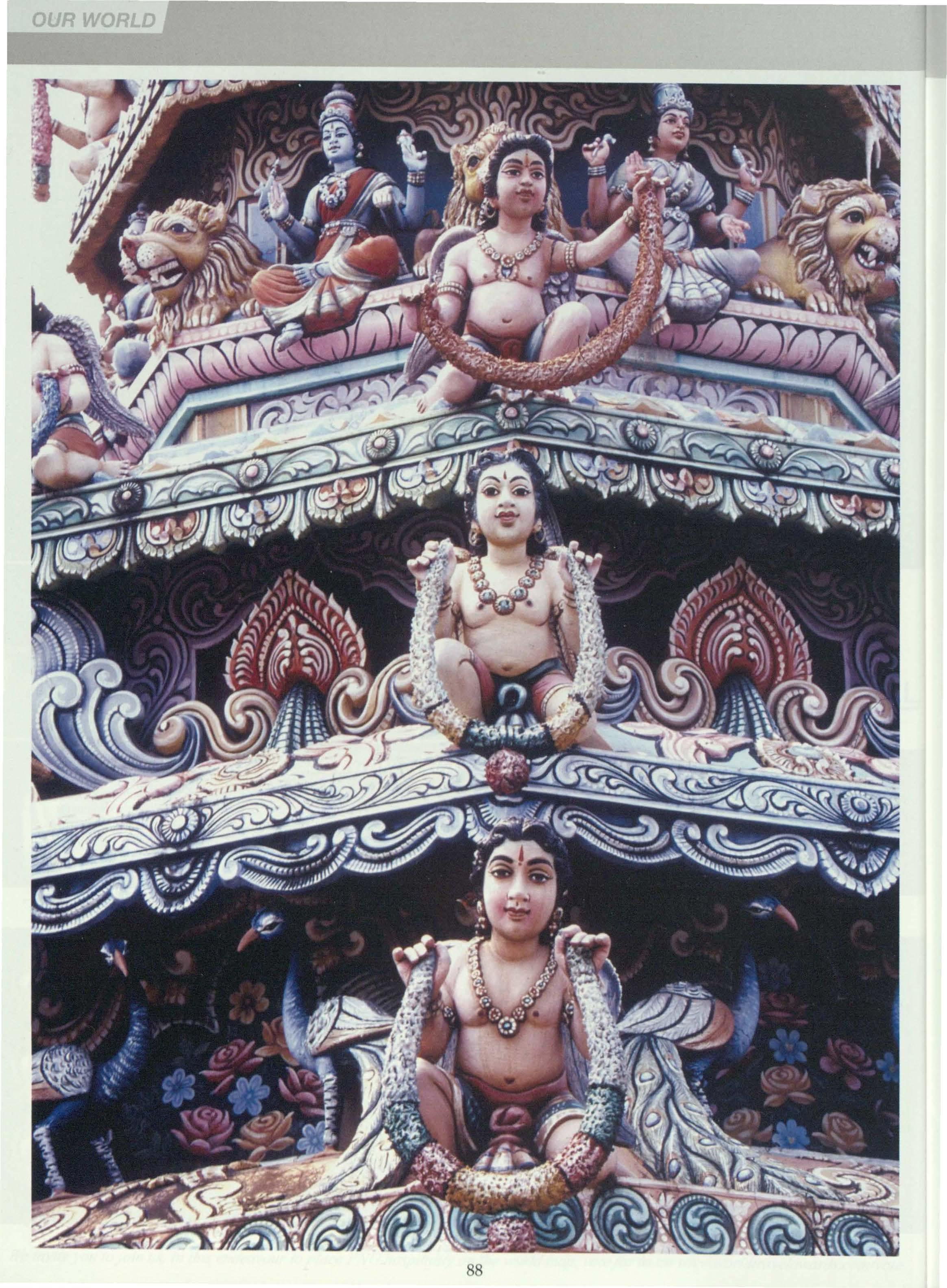
BY JOHN BORTHWICK
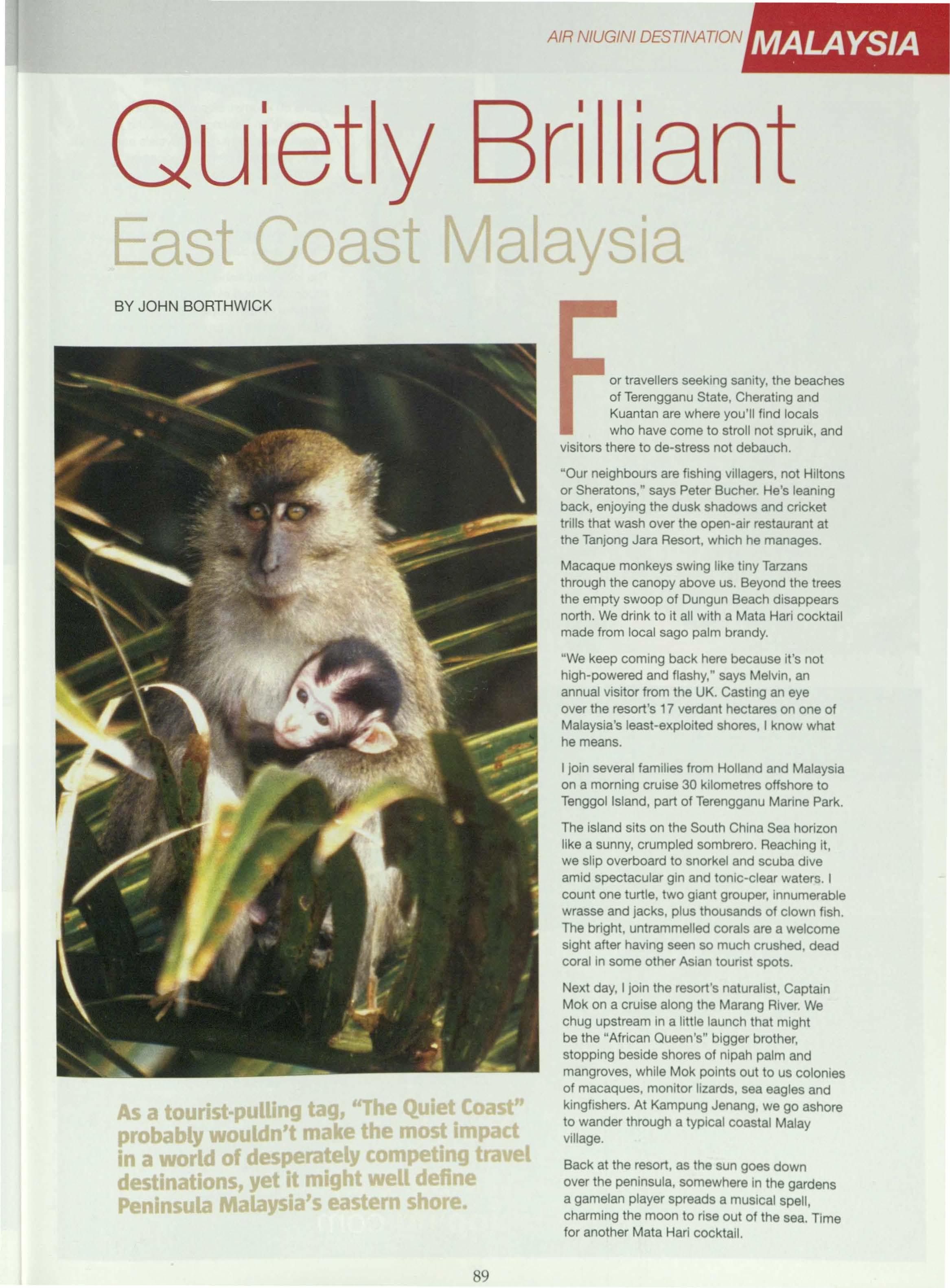
As a tourist-pulling tag, ''The Quiet Coast" probably wouldn't make the mos~impact in a world of desperately comp m tra l destinations, y t it might el d fine Peninsula Malaysia's east rn shor
or travellers seeking sanity, the beaches of Terengganu State, Cherating and Kuantan are where you'll find locals who have come to stroll not spruik, and visitors there to de-stress not debauch.
"Our neighbours are fishing villagers, not Hiltons or Sheratons," says Peter Bucher. He's leaning back, enjoying the dusk shadows and cricket trills that wash over the open-air restaurant at the Tanjong Jara Resort, which he manages.
Macaque monkeys swing like tiny Tarzans through the canopy above us. Beyond the trees the empty swoop of Dungun Beach disappears north. We drink to it all with a Mata Hari cocktail made from local sago palm brandy.
"We keep coming back here because it's not high-powered and flashy," says Melvin, an annual visitor from the UK. Casting an eye over the resort's 17 verdant hectares on one of Malaysia's least-exploited shores, I know what he means.
I join several families from Holland and Malaysia on a morning cruise 30 kilometres offshore to Tenggol Island, part of Terengganu Marine Park.
The island sits on the South China Sea horizon like a sunny, crumpled sombrero. Reaching it, we slip overboard to snorkel and scuba dive amid spectacular gin and tonic-clear waters. I count one turtle, two giant grouper, innumerable wrasse and jacks, plus thousands of clown fish.
The bright, untrammelled corals are a welcome sight after having seen so much crushed, dead coral in some other Asian tourist spots.
Next day, I join the resort's naturalist, Captain Mok on a cruise along the Marang River. We chug upstream in a little launch that might be the "African Queen's" bigger brother, stopping beside shores of nlpah palm and mangroves, while Mok points out to us colonies of macaques, monitor lizards, sea eagles and kingfishers. At Kampung Jenang, we go ashore to wander through a typical coastal Malay village.
Back at the resort, as the sun goes down over the peninsula, somewhere In the gardens a gamelan player spreads a musical spell, charming the moon to rise out of the sea. Time for another Mata Hari cocktail.
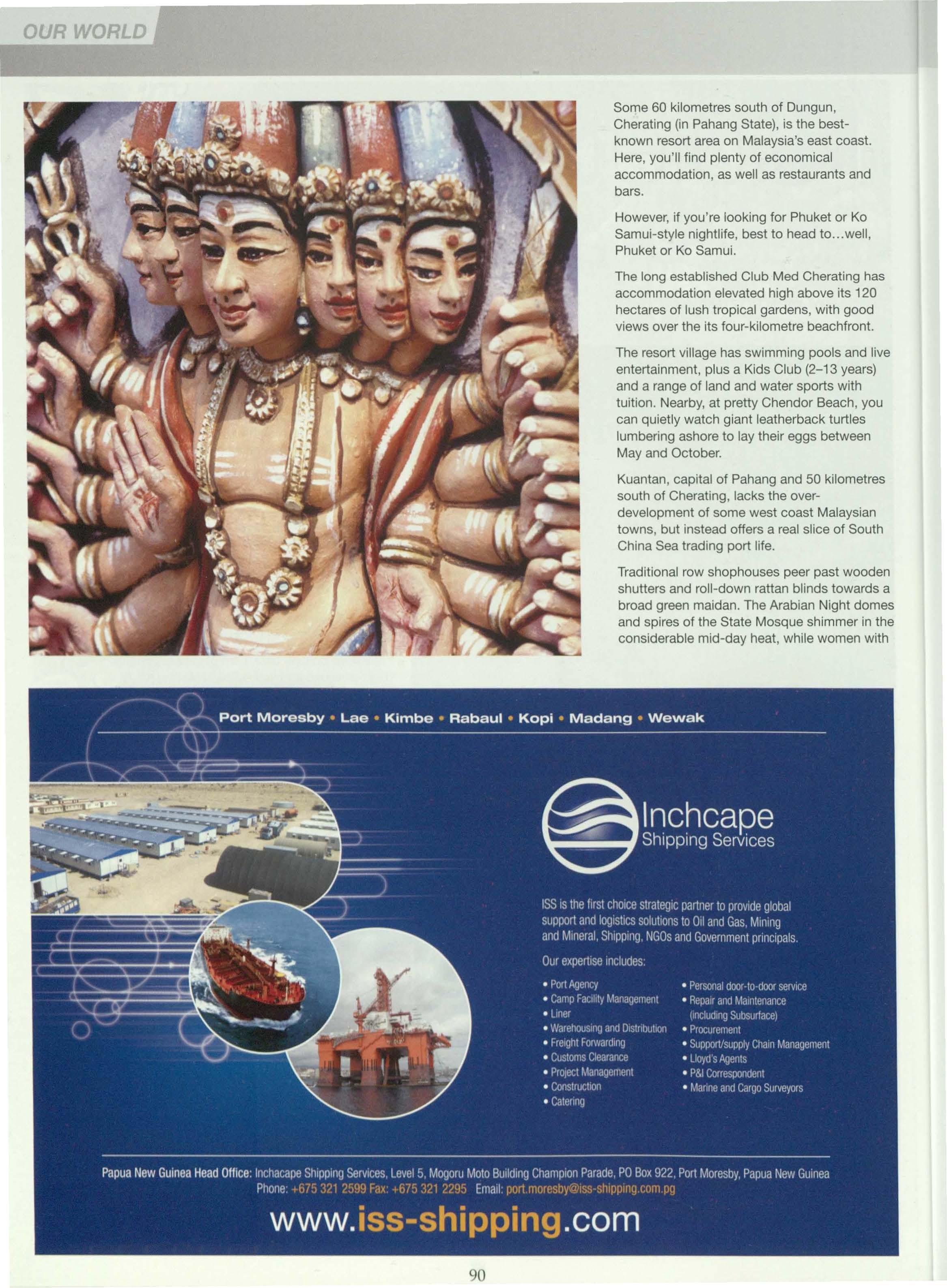
Some 60 kilometres south of Dungun, Cherating (in Pahang State), is the bestknown resort area on Malaysia's east coast. Here, you'll find plenty of economical accommodation, as well as restaurants and bars.
However, if you're looking for Phuket or Ko Samui-style nightlife, best to head to well, Phuket or Ko Samui.
The long established Club Med Cherating has accommodation elevated high above its 120 hectares of lush tropical gardens, with good views over the its four-kilometre beachfront.
The resort village has swimming pools and live entertainment, plus a Kids Club (2-13 years) and a range of land and water sports with tuition. Nearby, at pretty Chendor Beach, you can quietly watch giant leatherback turtles lumbering ashore to lay their eggs between May and October.
Kuantan, capital of Pahang and 50 kilometres south of Cherating, lacks the overdevelopment of some west coast Malaysian towns, but instead offers a real slice of South China Sea trading port life.
Traditional row shophouses peer past wooden shutters and roll-down rattan blinds towards a broad green maidan. The Arabian Night domes and spires of the State Mosque shimmer in the considerable mid-day heat, while women with

parasols and coloured tudong veils shelter beneath the shade trees. There's a Gordian tangle of lines, nets, jetties and vessels along the shore at Tanjung Api fishing village. From here, trawlers chug through town, past a row of riverfront restaurants. Along Jalan Besar, the air is pungent with salted fish, keropok crackers and durian.
The Sri Mariamman Hindu Temple (on Jalan Tanah Puteh) is a joyful confection of Disney-coloured deities, demons and holy cows. Take your shoes off and stroll in; as (perhaps) an "unbeliever", you're entirely welcome here, as you also are in the town's Buddhist temples, although less so in the State Mosque.
Kuantan has a range of hotels, but the town is not the place to stay, when just to the north are kilometres of uncrowded beaches shaded

Tak a short curs1onto n rby B erah, a Chm and Mosl m fish·ngvilla , famous for its al fish and for th umque buffalo c rt that roll out mto th to unload th r turning fishing dori s. with she-oaks, plus a variety of resorts. Teluk Chempedak Beach, five kilometres from Kuantan, epitomises the virtues of this coast.
A dozen beachfront restaurants will feed you - don't miss the crispy garlic prawns - and the gift shops and pubs won't set touts and pimps on you.
As a result, you can bag at your leisure a load of T-shirts and souvenirs, then enjoy a beer and a chat with the locals. Here, the very comfortable Hyatt Regency Kuantan overlooks Chempedak Beach where the waters, as warm as a cup of tea, are safe for swimming. The adjacent private golf club also admits the hotel's guests.
Take a short excursion to nearby Beserah, a Chinese and Moslem fishing village, famous for Its salted fish and for the unique buffalo carts that roll out Into the sea to unload the returning fishing dories.
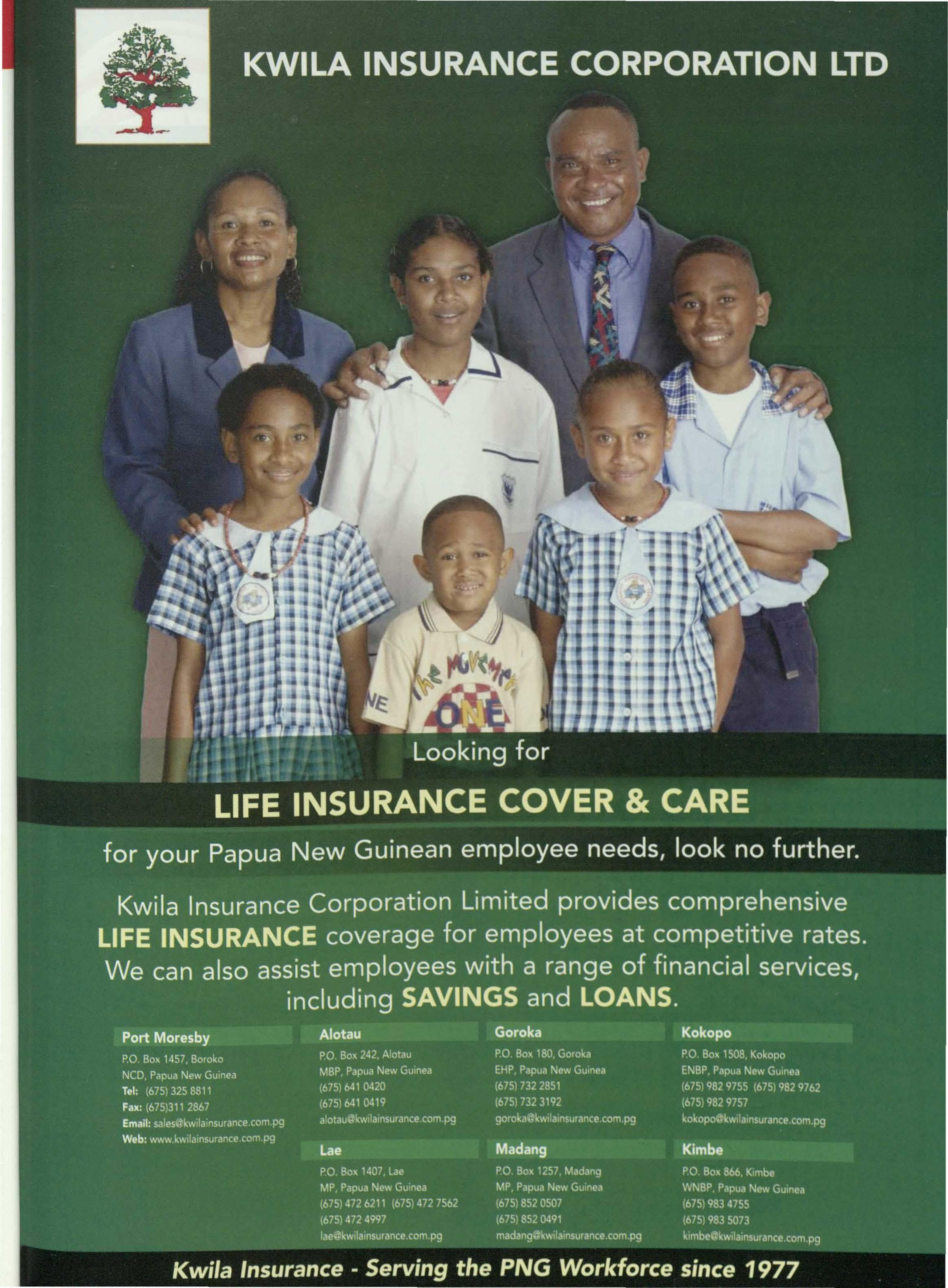
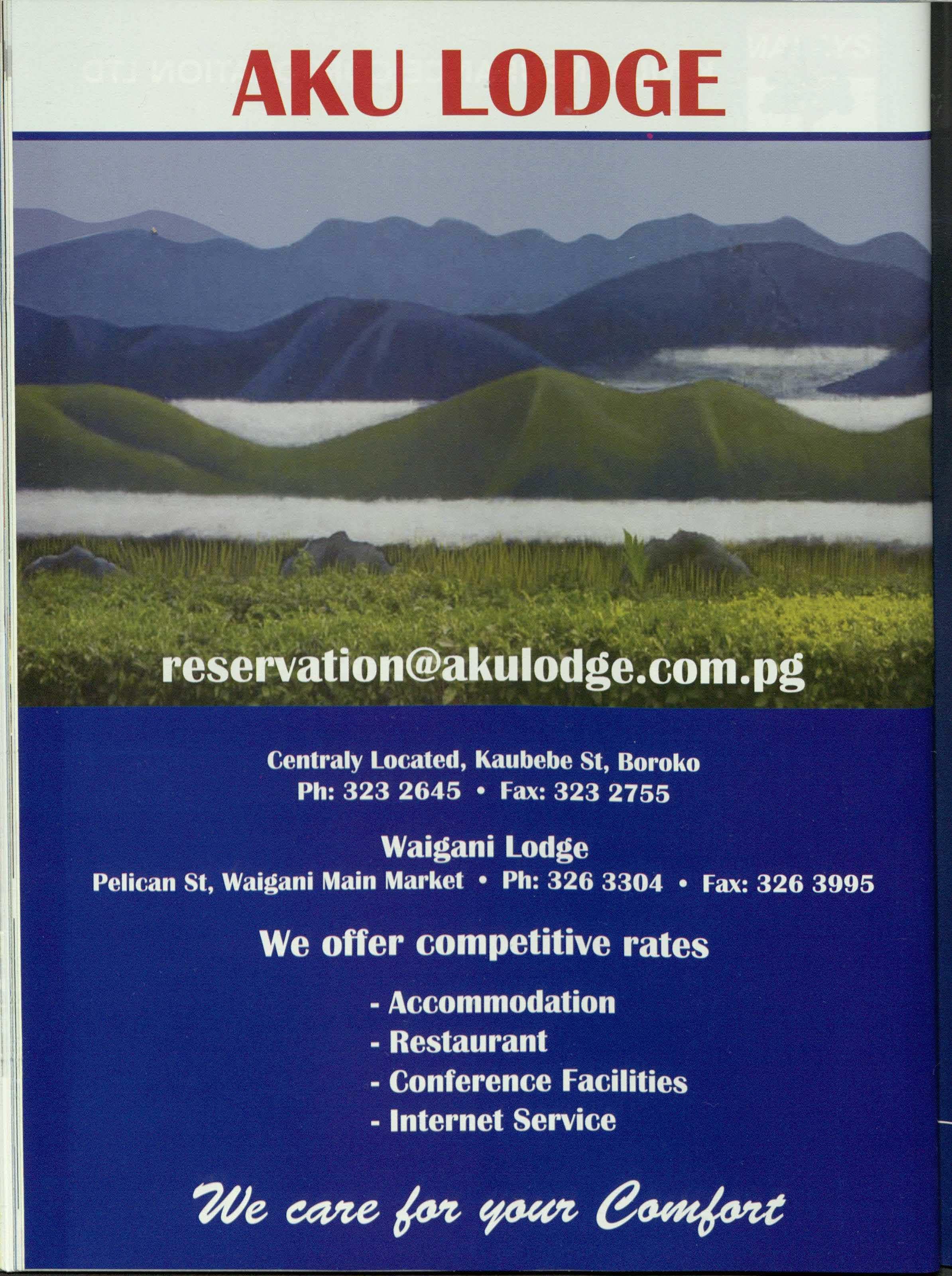
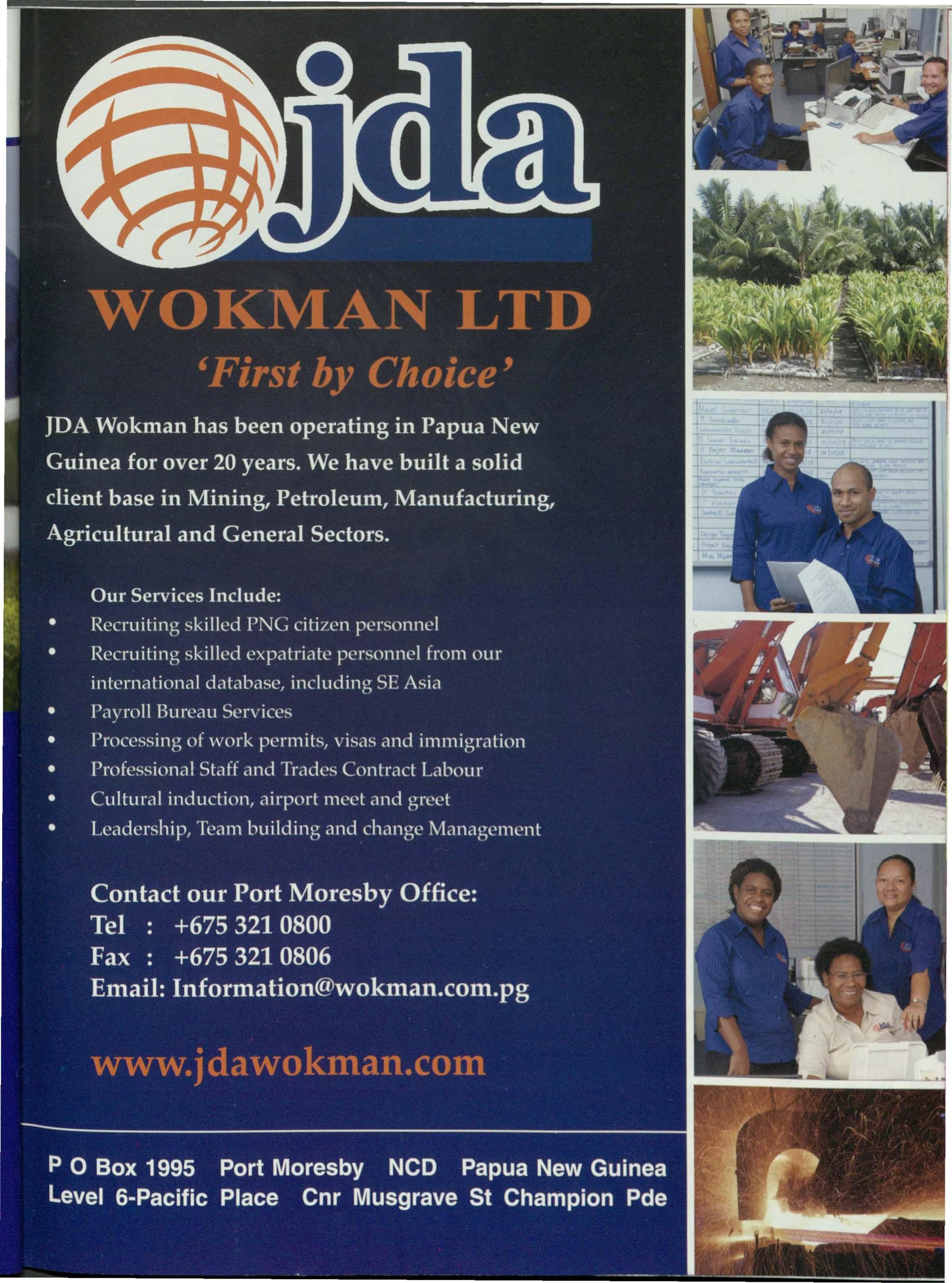

0 P.O. Box 456, Lae. Morobe Province. 0 P.O. Box 1405, Boroko. NCO.
Papua New Guinea
Phone: (675) 472 1111
Fax: (675) 4721335
Email: sklae@seetokui.com.pg

Phone: (675) 472 4177
Fax: (675) 472 3629 PO Box 954, Lae. Aircorps Rd. Papua New Guinea Email: mpslae@seetokui.com.pg
Papua New Guinea
Phone: (675) 325 4700
Fax: (675) 325 4474
Email: skpom@seetokui.com.pg
Agency Distributors and Grocery Wholesalers established in Papua New Guinea for over 60 years. Please contact our friendly staff for all your enquries.

BY DIANA MCMANUS
Throngingcrowds,neighingneddies,thunderinghooves,bellowing bulls and billowingbulldustpretty muchdescribesthe sceneof the annual Mt Garnet Raceand Rodeoweekend, a mere two-and-a-halfhoursdrive from Cairns.

or country people throughout the Far North Queensland, this rates high on the calendar of social events and is one not to be missed. With a good sealed road all the way from Cairns, it's a great destination for a taste of what some people believe is pure Australiana.
The drive from Cairns is filled with interest and presents opportunities for plenty of side trips for those with time on their hands. The range road leads to the rainforest town of Kuranda, a popular tourist destination because of its markets, unique boutiques and wildlife attractions.
Then comes Mareeba, cattle capital of the north, which hosts its own big annual rodeo in July. Coffee plantations, wineries and the lovely Granite Gorge with its tame little rock wallabies characterise this area.
The road climbs to the green and agricultural Atherton Tablelands dotted with lakes, craters and waterfalls to Ravenshoe, the highest town in Queensland, where herds of dairy cattle graze contentedly beneath the giant rotating arms of the wind farm windmills.
From this point, there is an obvious climate and vegetation change as the road dips and heads west.
lnnot Hot Springs is a good place to have a soak in the hot mineral spa pools which the local camping ground offers and the pub has an interesting collection of local
Twentyminutesbeyondis Mt Garnet,so nam d for the preci us gemstoneswhich are foundtogether with th tin which has long be n mined in the a~ a. The regionhas a wealth of historyassociatedwith the form r glory daysof tin mining...
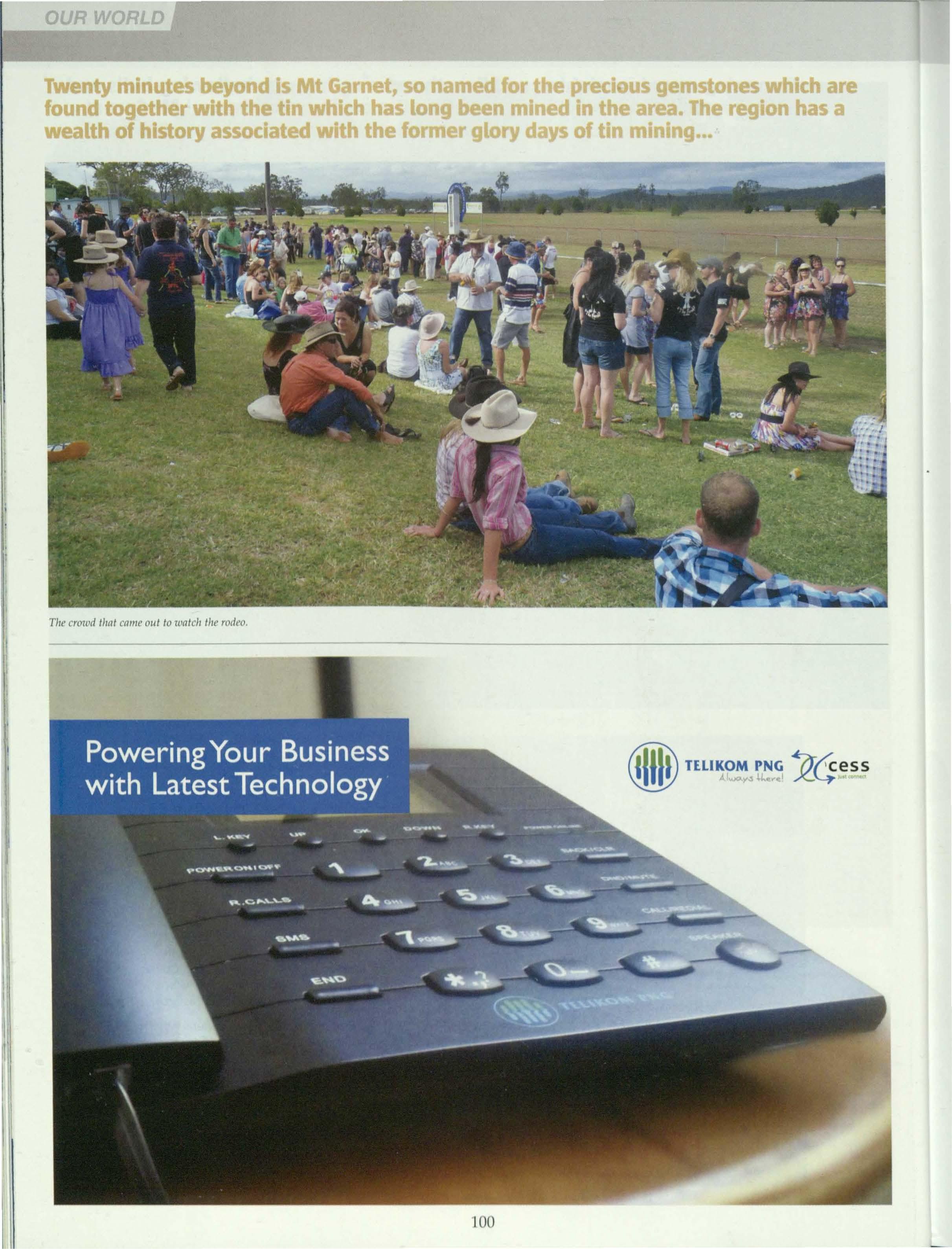
r.iilt\TELIKOM PN<i ~/.c:ess Al=~~ u,., 1 XL.;.,.. ,
tin false teeth which used to belong to an old miner. Every time he wanted some credit at the pub, he'd cash in his teeth as collateral! Twenty minutes beyond is Mt Garnet, so named for the precious gemstones which are found together with the tin which has long been mined in the area.
The region has a wealth of history associated with the former glory days of tin mining, before the bottom dropped out of the market and prices plummeted.
The Mt Garnet country races have been around for decades. Forty years ago the rodeo
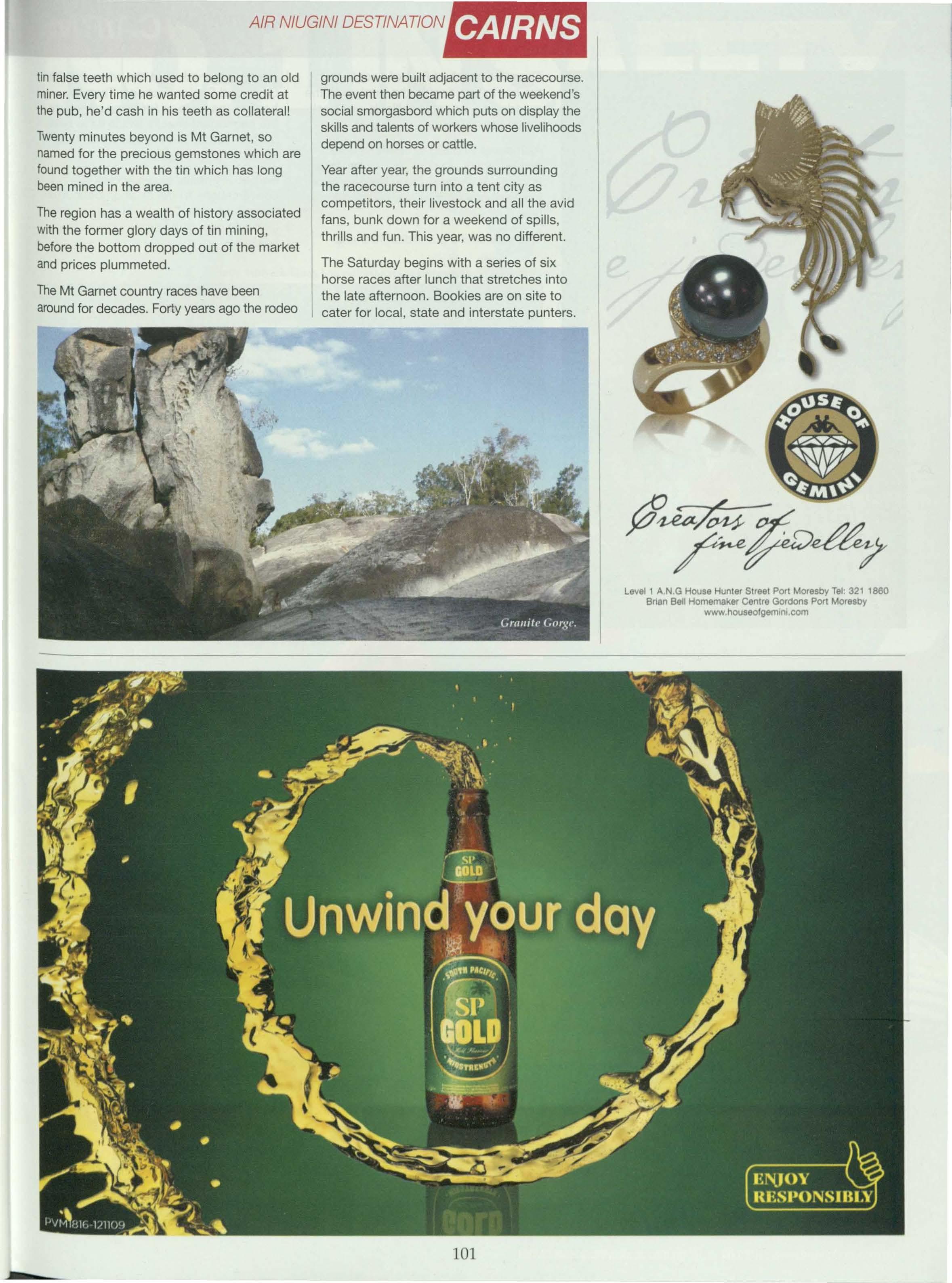
grounds were built adjacent to the racecourse. The event then became part of the weekend's social smorgasbord which puts on display the skills and talents of workers whose livelihoods depend on horses or cattle.
Year after year, the grounds surrounding the racecourse turn into a tent city as competitors, their livestock and all the avid fans, bunk down for a weekend of spills, thrills and fun. This year, was no different.
The Saturday begins with a series of six horse races after lunch that stretches into the late afternoon. Bookies are on site to cater for local, state and interstate punters.
There's a constant flow of people from the bar to the 'ring' to the punters to the grandstand, or grassy hillside and back to the bar again.
All manner of dress is on show from highly formal, very country, to extremely tropical. At some stage in the afternoon, the Fashions on the Field competition is held.
This year saw a granddaughter and
grandmother take out the prizes for the Open and Senior Sections. Then it's back to the tents or for some people to the permanent shacks which have been built on site by remote station families who attend every year.
Barbecue smells, music and loud conversations fill the air and continue to do so throughout the night as the dance gets into gear and people kick up their heels.
Wi1111ers of /1,efashio11slww gra11dmot/1erand gra11d-daug/,/erteam.

If you want the ideal place to call home, or simply the ideal place to invest, then you can't go past Bluewater at Trinity Beach;the perfect location to sit back and watch your future grow.
Cairnsis one of Australia'sfastestgrowing cities with over 2.3 million visitors each year,and with the population expected to Increaseby 16% over the next 10 years', this is your opportunity to Investin a future full of potential.
Bluewater Is Cairns' premier masterplanned community at the Beaches with its own marina leading directly to the Great Barrier Reef. With land at Cairns beaches both highly coveted and increasingly limited, an investment at Bluewater is as safe as houses. Flying PNGto Cairnsis a breezewith over 25 direct flights a week, taking little over an hour. Bluewater is clearly home to the ideal investment.
Fully optioned home & land packages from $389,000•
*Independent rental assessmentsindicate that this will achieve 5% rental returns.
+61 74055 6040 multlplexllvlng.com lelgh.martln@multlplexllvlng.com
•Sourct Aus1n11H,1n Bur auof S1at1s11csJune2009
LJ Hooker PNG agent Laurie Needham +675 320 0738 or lneedham.portmoresby@ljhooker.com

Riding a bull.
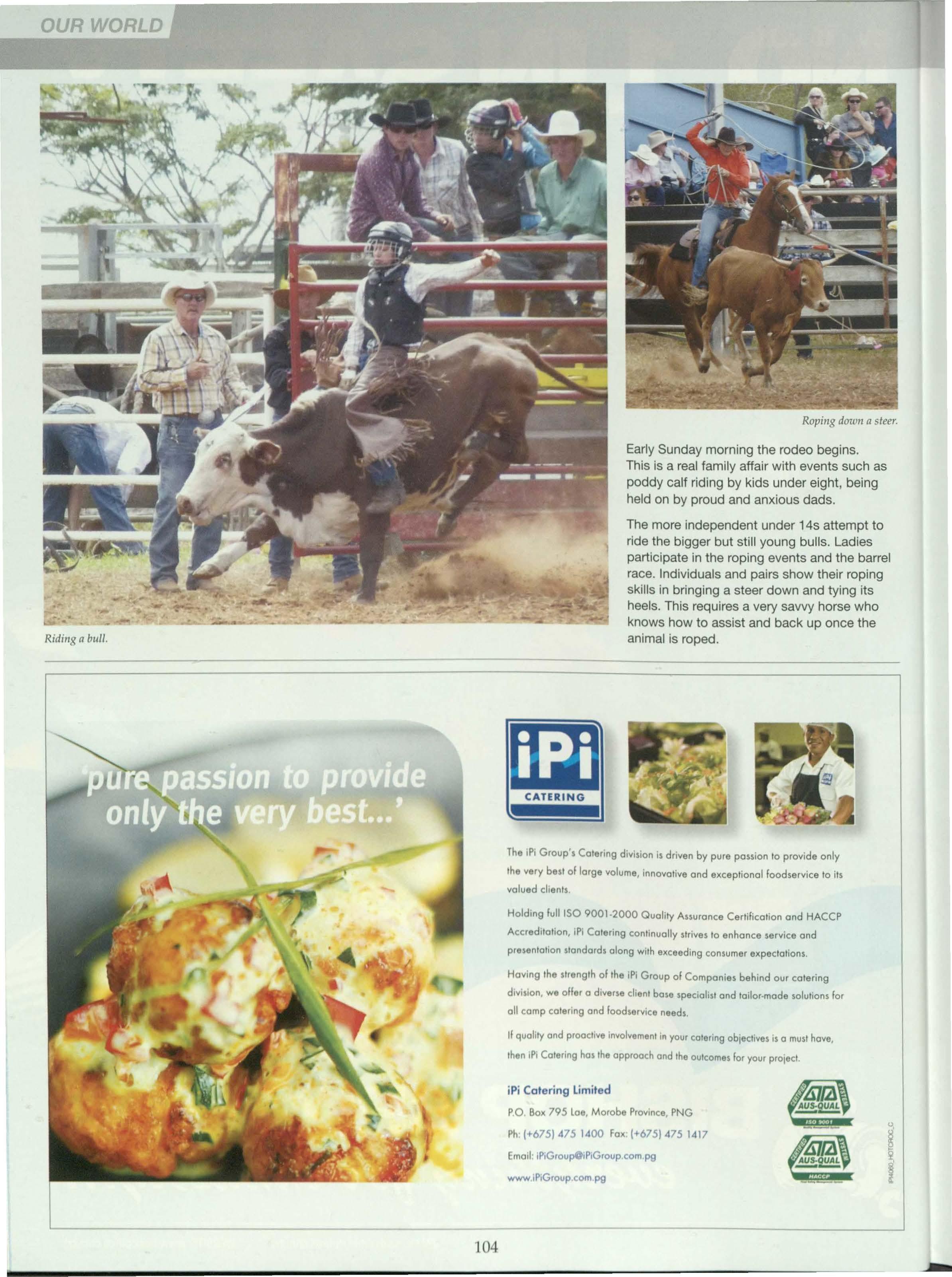
Ropingdown a steer.
Early Sunday morning the rodeo begins. This is a real family affair with events such as poddy calf riding by kids under eight, being held on by proud and anxious dads.
The more independent under 14s attempt to ride the bigger but still young bulls. Ladies participate in the roping events and the barrel race. Individuals and pairs show their roping skills in bringing a steer down and tying its heels. This requires a very savvy horse who knows how to assist and back up once the animal is roped.
The iPi Group', Catering divi,ion is driven by pure passion to provide only the very be,t of large volume, innovative ond exceptional food,ervice to it, valued clients
Holding full ISO 9001-2000 Quality Aosuronce Certification ond HACCP Accreditation, iPi Catering continually strives to enhance service and presentationstandardsalong with exceedingconsumerexpectations.
Hoving the ,trength of the iPi Group of Companie, behind our catering division, we offer a diverse client base specialist and tailor-made solutions for oil comp catering ond foodservice need,.
If qualityand proactiveinvolvementin yourcateringobjectives1s a musthave, then ,P,Catering hos the approach ond the outcomesfor your project
iPi Catering Limited
P0. Box 795 Loe, Morobe Province,PNG Ph (+675) 475 1400 Fox (+675) 475 1417
Emo,I·iP1GroupCiP1Group.com.pg www.iPiGroup.com pg
After lunch the Grand Parade takes place and then it's time to separate the men from the boys. The saddled or bareback bucking broncos have the riders almost laying back flat on their steed to stay on.
By far the most prestigious event is the Open Bull Ride, which is kept for last.
There have been some legendary bulls at Mt Garnet with names like Chainsaw for one. And there have been some legendary bull providers such as Roger Kelly, former owner of Glen Gordon Station, himself riding pick-up for the boys on the beasts.
Son Lance Kelly went on to become one of Australia's best rodeo riders and he now lives and competes in America.
While all this is going on, Australia's finest axe men compete in the wood chopping events on the sidelines showing us what it takes to fell a vertical tree or slice through a horizontal log.
Their many specialised axe

heads are astounding. After another noisy night, the Monday races follow the same pattern as Saturday, then it's time to go home for the trainers, owners, jockeys, bookies, the cowboys and cowgirls, the families and singles, the workers and stall owners, the volunteers and police/security, and the organisers.
The tents come down, the animals are loaded on to their trucks or floats and the tent city evaporates for another year until the next Labour Day long weekend in Queensland.
Events like these are becoming rarer and rarer in these days of litigation, animal rights and glorification of urban life and culture. But pockets of resistance, like Mt Garnet, continue to offer the public a rare glimpse of the country in action and a forum for country people to strut their stuff. May it continue for a very long time.
QAir Niugini flies to Cairns daily.
Australia'sfinest axe men competein the wood choppingevent.
iPi Transport is singularly the only PNG bosed houloge operator which hos full ISO 9001-2000 Quality Assurance Certification and this is al the forefront of our extensive suite of professional industry qualifications. We ore dedicated and committedindustryleadersin specialistbulk fuel and dry cargo movements.
Providing innovative and tailored transport, warehousing and storage and logisticssolutionsfor our valued clientsis the very essenceof our proactiveand responsiveculture.
Whether it be shifting oceans of fuel requirements per day into some of the most remote parts of PNG or moving general dry freight along many of PNG's most traversed routes, iPi Transport provides both the answers and the opportunities.
Moving forward is the only direction iPi Transport takes
iPi Transport limited
P.O. Box 795 Loe, Morobe Province, PNG Ph: (+675) 475 1400 Fox: (+675) 475 1417
Emoil: iPiGroup@iPiGroup.com.pg www.iPiGroup.com.pg
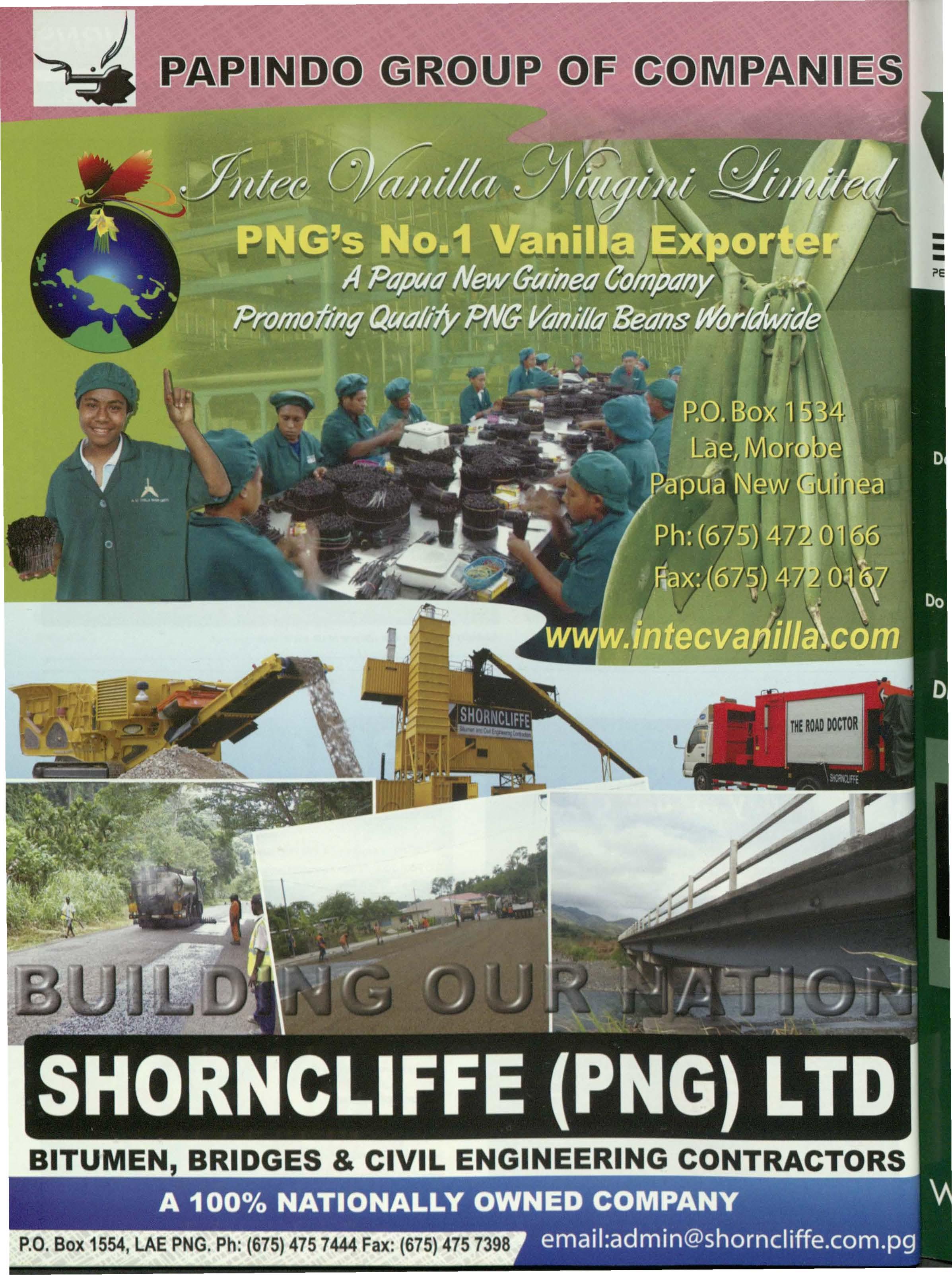
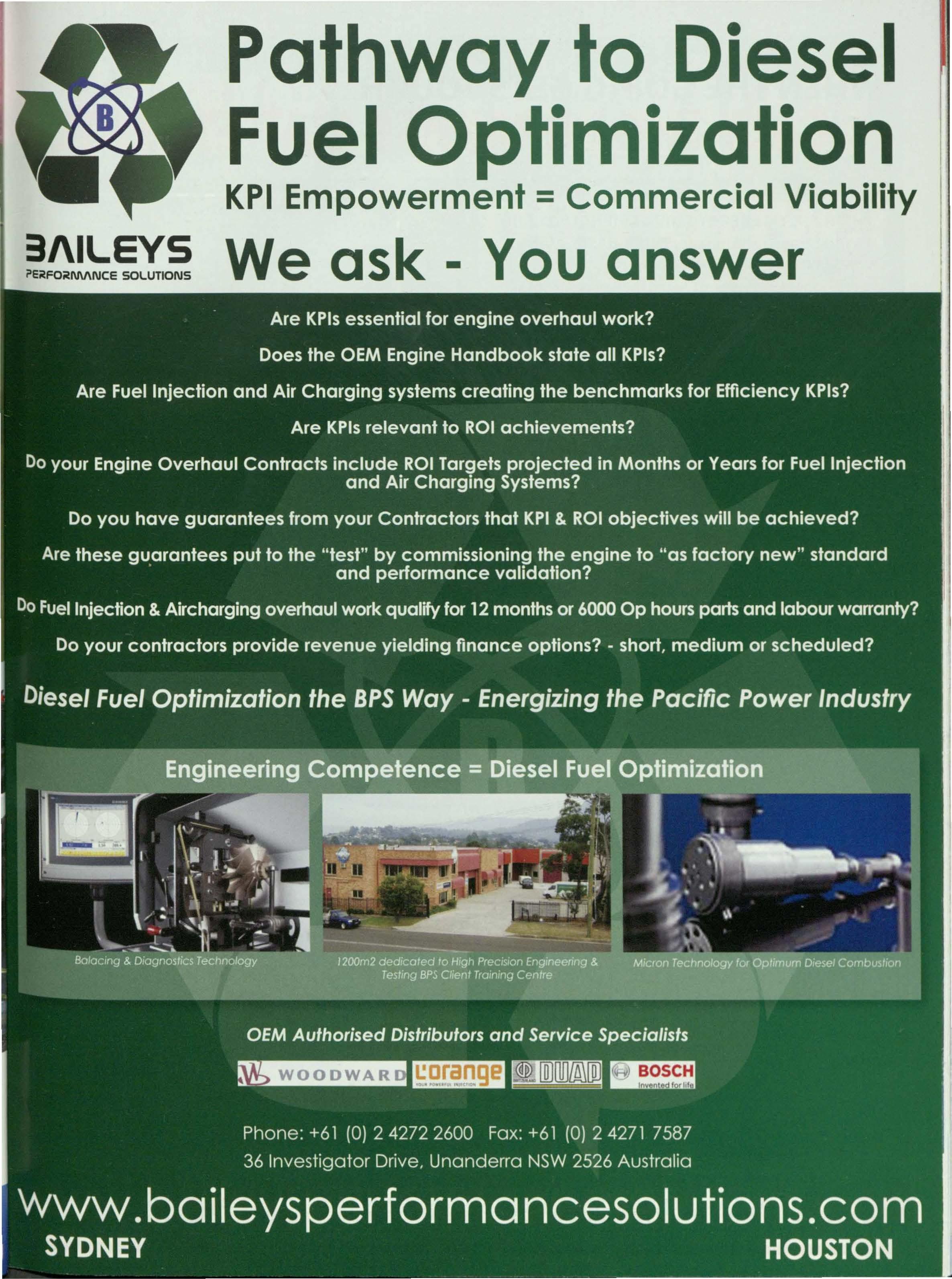
KPI Empowerment = Commercial Viability 3 /\ILevs We ask - You answer
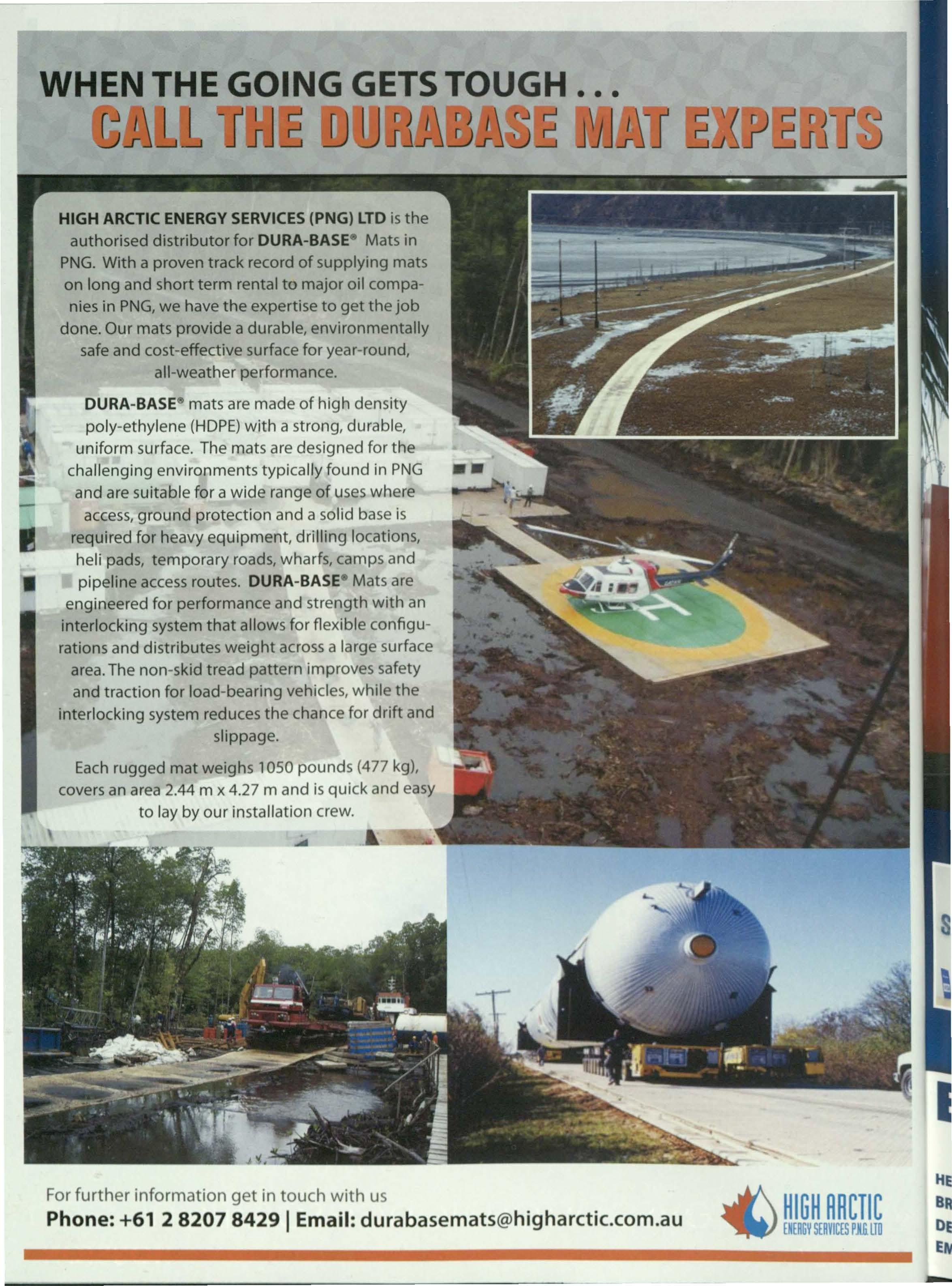
HIGH ARCTIC ENERGY SERVICES (PNG) LTD is the authorised distributor for DURA-BASP Mats in PNG. With a proven track record of supplying mats on long and short term rental to major oil companies in PNG,we have the expertise to get the job done. Our mats provide a durable, environmentally safe and cost-effective surface for year-round, all-weather performance.
DURA-BASE• mats are made of high density poly-ethylene (HOPE)with a strong, durable, uniform surface. The mats are designed for the challenging environments typically found in PNG and are suitable for a wide range of uses where access,ground protection and a solid base is required for heavy equipment, drilling locations, heli pads, temporary roads, wharfs, camps and I pipeline access routes. DURA-BASP Mats are engineered for performance and strength with an interlocking system that allows for flexible configurations and distributes weight across a large surface area. The non-skid tread pattern improves safety and traction for load-bearing vehicles, while the interlocking system reduces the chance for drift and slippage.
Each rugged mat weighs 1050 pounds (477 kg), covers an area 2.44 m x 4.27 m and is quick and easy to lay by our installation crew.
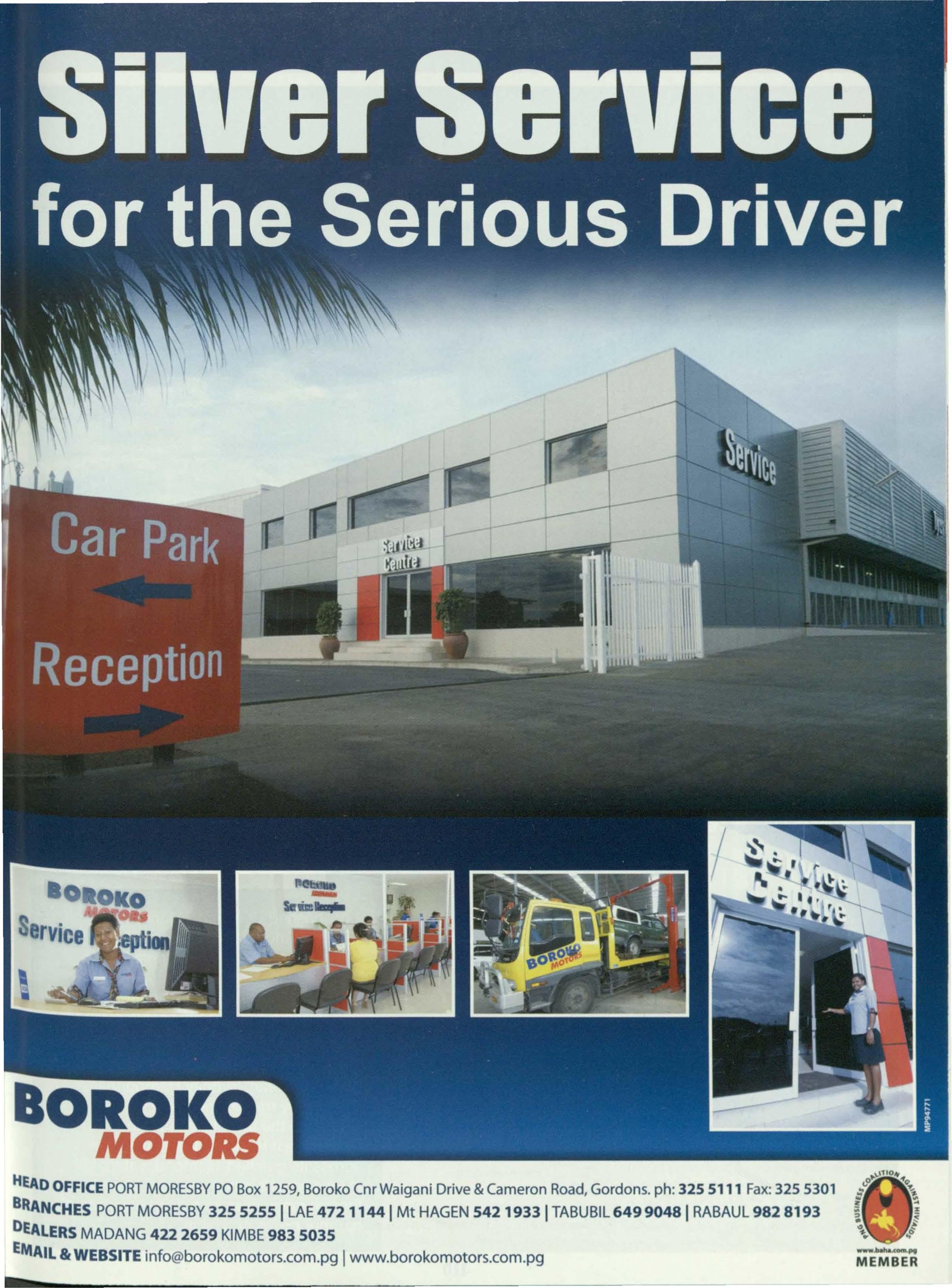

,...
Palm-lined Chowder Bay takes its name from WhenUS whalers prepared clam chowder from the area's abundant seafood resources.
The adjoining vast lawns of Clifton Gardens are the picnicking family's favourite, with a shaded children's playground.
The shark-netted swimming area was, in days Qoneby, visited by Sydney's old steamship ferries.
To the east of the beach, an ex-World War One hospital, submarine base and military barracks survive. Encased within the native bushland of Headland Park, the complex is now protected by the Sydney Harbour Federation Trust, and features 270-degree lookouts, a sculpture trail, forts, underground tunnels and heritage buildings.
Hire a snorkel from Plunge Diving to find moray eels, frogfish and the surreal ghost Pipefish. For a nose-to-nose encounter with a seahorse, snorkel around the swimming enclosure's net. www.plungediving.com.au
Refuel with Italian delights from Bacino Kiosk. Housed in an ex-ammunition shed, this bonsai-sized cafe blends its own superb coffee.
Access: Bus 244 direct, or ferry to Taronga Zoo. Then follow the bush-track to Chowder Bay.

A picture-postcard setting dominated by the tree-adorned peninsula of Rocky Point. Cross the dainty footbridge to reach it and look back onto beach bliss. To your right, on Edwards Beach, is the ornate Bathers' Pavilion, famous
for its blueberry pancakes and wood-fired oven dishes.
To the left is sheltered Balmoral Beach, home to historic Balmoral Baths, flocked-to since 1898. Jon Allen's Balmoral Sailing School is a little further south, where windsurfers and upright paddlesurfers can hire out quality gear. www.sailingschool.com.au
Access: Bus 247 to Military Road, Mosman, then walk down. Or take the thrilling national park bush-track from Chowder Bay.
Find this hidden gem at willow-treed Rosherville Reserve. A resplendent setting looking across to Clontarf Beach, this is the romantic couples' chosen retreat.
You'll be forgiven for thinking you are stranded on an island; such is the bay's priceless peace. Watch moored yachts bob up and down as time stands still in one of Sydney Harbour's most discreet coves. Pack a hamper as there is no kiosk here.
Access: Enjoy a tranquil 1-km stroll from Balmoral beach.
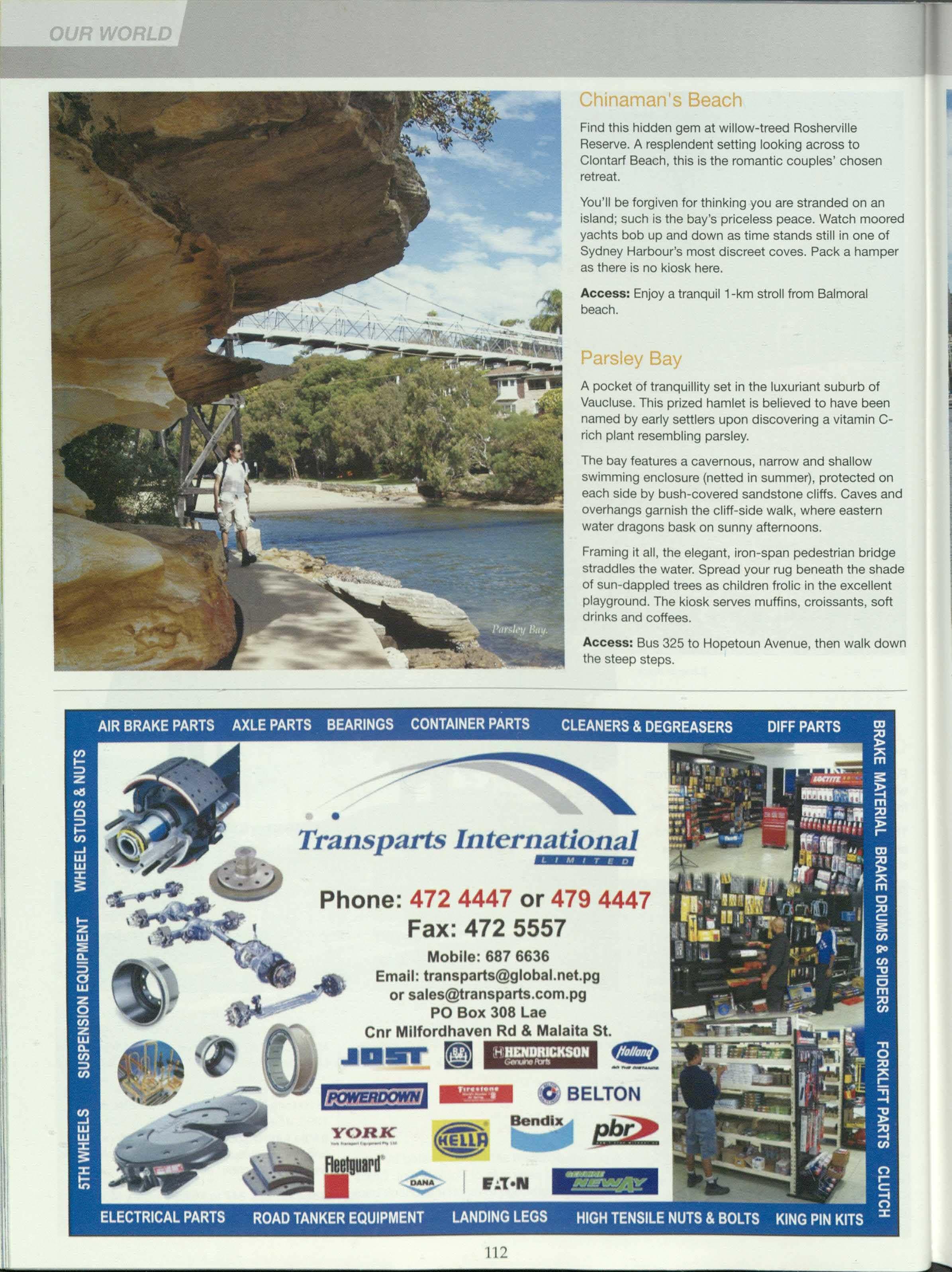
A pocket of tranquillity set in the luxuriant suburb of Vaucluse. This prized hamlet is believed to have been named by early settlers upon discovering a vitamin Grich plant resembling parsley.
The bay features a cavernous, narrow and shallow swimming enclosure (netted in summer), protected on each side by bush-covered sandstone cliffs. Caves and overhangs garnish the cliff-side walk, where eastern water dragons bask on sunny afternoons.
Framing it all, the elegant, iron-span pedestrian bridge straddles the water. Spread your rug beneath the shade of sun-dappled trees as children frolic in the excellent playground. The kiosk serves muffins, croissants, soft drinks and coffees.
Access: Bus 325 to Hopetoun Avenue, then walk down the steep steps
transparts@global.net.pg or sales@transparts.com.pg
Seven Shillings Beach.
Carved into South Head and looking onto Middle Head, Camp Cove is a delightful strip of golden sand. It was also the site for a night's stopover before Governor Phillip and his First Fleet landed at Sydney Cove in 1788.
The irregular sandstone rock at the western end of the beach may have been an important aboriginal shelter, and shell middens and rock carvings depicting local marine life have been found in the area.
Climb up onto the handsome timber boardwalk on the South Head Heritage Trail to be spoiled by dazzling views across the beach and to the city skyline beyond.
Access: SuperCat ferry to Watsons Bay, then a 10-15 minute walk north.
C'\ C :1:
Proudly poised at prestigious Point Piper, Seven Shillings Beach is a jewel; said to be named after the seven-shilling fishing fee charged by a local aboriginal.
Redleaf Pool dominates the harbour view, with its horse-shoe-shaped boardwalk elevated above the elegant swimming enclosure. Sunlovers bedeck it in summer, whilst swimmers Paddle across to floating pontoons.
The grassy hillscape behind is a natural amphitheatre from which to view Sydney Harbour's ceaseless bustle. The shaded alfresco cafe overlooks Double Bay, and above it is one of Sydney's top wedding spots; charming Blackburn Gardens. Find immaculately manicured, split-level lawns, flowerbeds, water features and a sundial here.
Access: Ferry to Double Bay, then climb down the (99!) steps from the council chambers off New South Head Road.

In 1868, Clontarf Beach hit news headlines when the Duke of Edinburgh (Queen Victoria's son) narrowly missed being assassinated
during a picnic here. On a world tour (and Australia's first visit by a British royal), he survived the shooting.
Today, picnicking is still central to Clontarf's social scene. Its superb reserve features picnic tables, free BBQs, shaded playgrounds and shark-netted baths. A sandy spur carves into the marina, itself inhabited by millionaire yachts.
Clonny's kiosk sells the freshest baguettes and fish and chips. Or for special (weekendonly) occasions, you can book a memorable al a carte meal inside Clonny's on the Beach restaurant, the outlook from which is splendid. www.clonnys.com.au
Access: Bus 171 to Spit Bridge, then walk around Fisher Bay and Sandy bay.
Sydney's most celebrated harbour beach, where the iconic Manly Ferry docks, is shark-netted and flanked by Norfolk Island pines.
Head into the Manly Art Gallery & Museum to view the priceless photography collection of Manly's early swimming days, including the first legal 'daylight' swim. If that whets your fins, dare to venture next door.
At Oceanworld, you can dive into the stingray and shark

tank! www.oceanworld.com.au
There are many dining options on the wharf, but remember to peep beneath it. Endangered fairy penguins clamber up the sands to feed their chicks, who favour a diet of anchovies and sandy sprat.
They are the last breeding colony on NSW's mainland, so avoid approaching or using camera flashes.
Access: Manly Ferry.
QAir Niugini flies direct to Sydney two times a week.
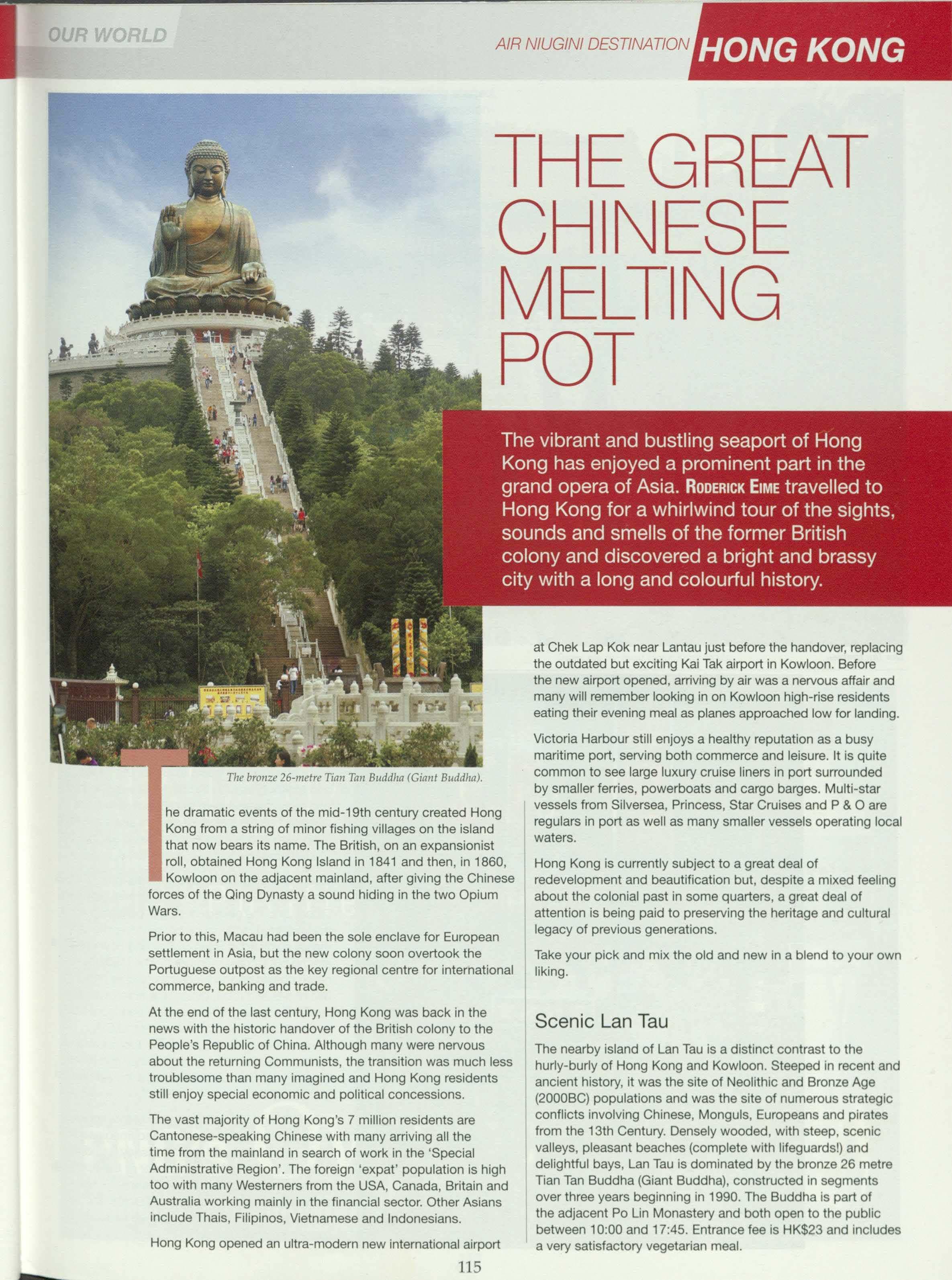
he dramatic events of the mid-19th century created Hong Kong from a string of minor fishing villages on the island that now bears its name. The British, on an expansionist roll, obtained Hong Kong Island in 1841 and then, in 1860, Kowloon on the adjacent mainland, after giving the Chinese forces of the Qing Dynasty a sound hiding in the two Opium Wars.
Prior to this, Macau had been the sole enclave for European settlement in Asia, but the new colony soon overtook the Portuguese outpost as the key regional centre for international commerce, banking and trade.
At the end of the last century, Hong Kong was back in the news with the historic handover of the British colony to the People's Republic of China. Although many were nervous about the returning Communists, the transition was much less troublesome than many imagined and Hong Kong residents still enjoy special economic and political concessions.
The vast majority of Hong Kong's 7 million residents are Cantonese-speaking Chinese with many arriving all the time from the mainland in search of work in the 'Special Administrative Region'. The foreign 'expat' population is high too with many Westerners from the USA, Canada, Britain and Australia working mainly in the financial sector. Other Asians include Thais, Filipinos, Vietnamese and Indonesians.
Hong Kong opened
airport
at Chek Lap Kok near Lantau just before the handover, replacing the outdated but exciting Kai Tak airport in Kowloon. Before the new airport opened, arriving by air was a nervous affair and many will remember looking in on Kowloon high-rise residents eating their evening meal as planes approached low for landing.
Victoria Harbour still enjoys a healthy reputation as a busy maritime port, serving both commerce and leisure. It is quite common to see large luxury cruise liners in port surrounded by smaller ferries, powerboats and cargo barges. Multi-star vessels from Silversea, Princess, Star Cruises and P & 0 are regulars in port as well as many smaller vessels operating local waters.
Hong Kong is currently subject to a great deal of redevelopment and beautification but, despite a mixed feeling about the colonial past in some quarters, a great deal of attention is being paid to preserving the heritage and cultural legacy of previous generations.
Take your pick and mix the old and new in a blend to your own liking.
The nearby island of Lan Tau is a distinct contrast to the hurly-burly of Hong Kong and Kowloon. Steeped in recent and ancient history, it was the site of Neolithic and Bronze Age (2000BC) populations and was the site of numerous strategic conflicts involving Chinese, Monguls, Europeans and pirates from the 13th Century. Densely wooded, with steep, scenic valleys, pleasant beaches (complete with lifeguards!) and delightful bays, Lan Tau is dominated by the bronze 26 metre Tian Tan Buddha (Giant Buddha), constructed in segments over three years beginning in 1990. The Buddha is part of the adjacent Po Lin Monastery and both open to the public between 10:00 and 17:45. Entrance fee is HK$23 and includes a very satisfactory vegetarian meal.
Nnthn11Ronrl nl 11i,~ht.
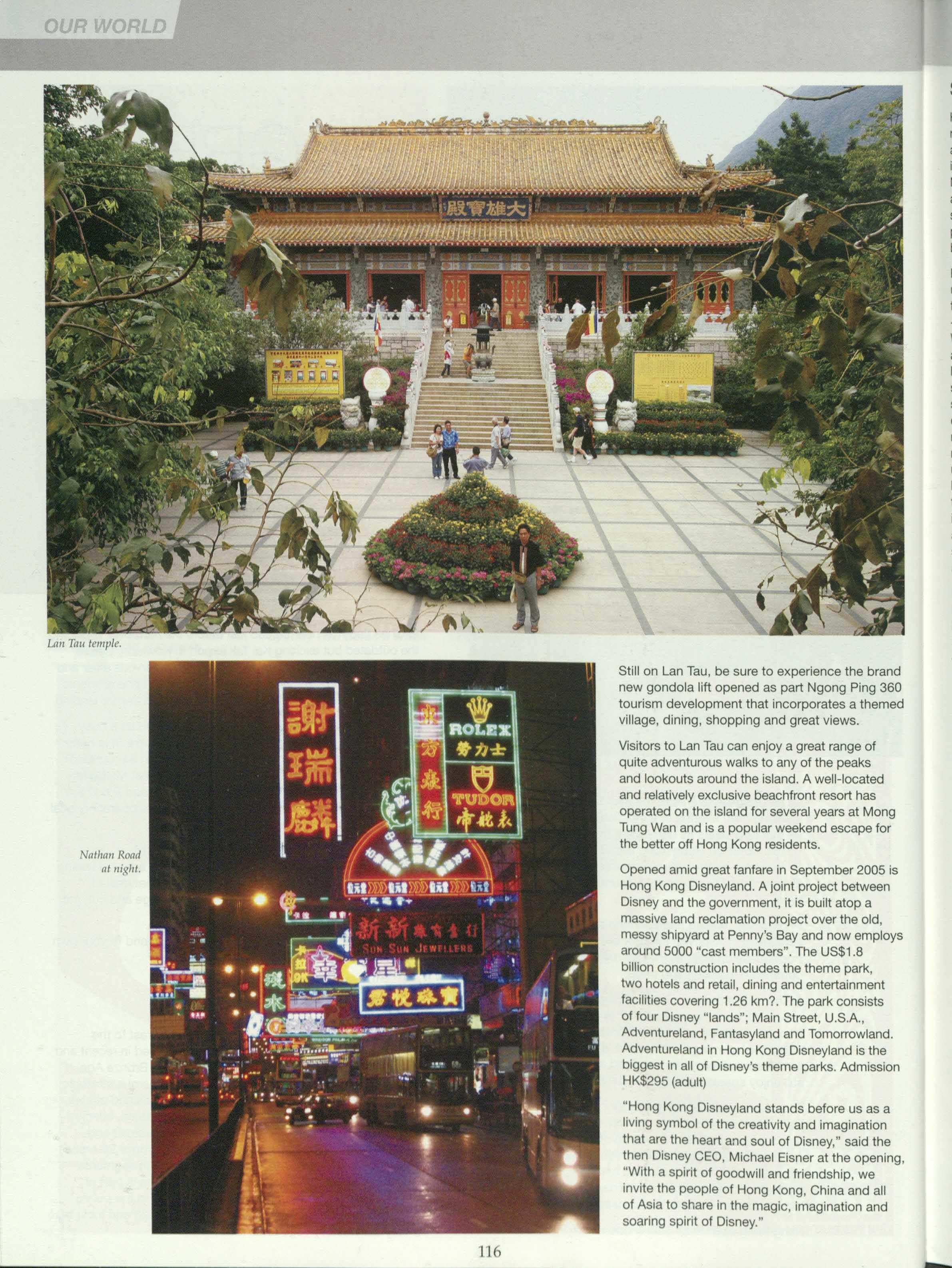
Still on Lan Tau, be sure to experience the brand new gondola lift opened as part Ngong Ping 360 tourism development that incorporates a themed village, dining, shopping and great views.
Visitors to Lan Tau can enjoy a great range of quite adventurous walks to any of the peaks and lookouts around the island. A well-located and relatively exclusive beachfront resort has operated on the island for several years at Mong Tung Wan and is a popular weekend escape for the better off Hong Kong residents.
Opened amid great fanfare in September 2005 is Hong Kong Disneyland. A joint project between Disney and the government, it is built atop a massive land reclamation project over the old, messy shipyard at Penny's Bay and now employs around 5000 "cast members". The US$1.8 billion construction includes the theme park, two hotels and retail, dining and entertainment facilities covering 1.26 km?. The park consists of four Disney "lands"; Main Street, U.S.A., Adventureland, Fantasyland and Tomorrowland. Adventureland in Hong Kong Disneyland is the biggest in all of Disney's theme parks. Admission HK$295 (adult)
"Hong Kong Disneyland stands before us as a living symbol of the creativity and imagination that are the heart and soul of Disney," said the then Disney CEO, Michael Eisner at the opening, "With a spirit of goodwill and friendship, we invite the people of Hong Kong, China and all of Asia to share in the magic, imagination and soaring spirit of Disney."
Hong Kong no longer enjoys a reputation for cheap electronic and consumer goods, in fact some items are decidedly expensive. Nevertheless, you can still enjoy an authentic and genuine Hong Kong shopping experience and gather a pile of souvenirs and trinkets without breaking the bank.
Fora non-stop experience of local, urban Chinese lifestyles, look no fartherthan Yau Ma Tei and Mong Kok - the heart of the Kowloon Peninsula. Within these two neighbourhoods are side streets and alleys that are home to one of Hong Kong's liveliest street spectacles. Here is the bustling shopping hub of Hong Kong that everyone knows and remembers. At night, the shops are open until nearly midnight and haggling and browsing under the blaze of hundreds of neon lights is its own experience. Walking through Yau Ma Tei and Mong Kok is great fun. You'll love the ambience and the great deals you can get on souvenirs, clothing, electronic goods and much more.
Hong Kong's authentic "Chinatown" District is the thriving Western, a hive of shophouses, exotic markets and steep "ladder" lanes. This is

where modern Hong Kong started, mushrooming around Possession Street where the victorious British first raised the Union Jack in 1841.
Also don't miss Stanley Market for silk garments, sportswear, art and Chinese costume jewellery; Edwardian Western Market for fabrics and handicrafts; Bonham Strand West for medicinal herbs and ginseng; and Queen's Road West for birds' nest soup.
Despite Hong Kong's high density and traffic chaos, people manage to get around with minimum fuss. Drivers are generally tolerant and forgiving as traffic doesn't travel much faster than a brisk walk and there is always a minor jam somewhere on your route. Taxis, buses and trams ply the busy roadways and can be useful for short trips around town, but Hong Kong's greatest peoplemover is definitely the Mass Transit Railway (MTR). Covering the Island, Kowloon, Lan Tau and the airport, the MTR network is fast, comprehensive and reasonably priced and conveniently avoids the turmoil in the streets above. Fares start at HK$4. Have change for the ticket machines. Tip: Airport check-in counters available in city MTR terminal.
High above Hong Kong Island on the 'back of the Dragon', Victoria Peak is Hong Kong's premier visitor attraction, providing magnificent harbour and city views. Arriving late afternoon enables you to experience the dazzling panorama of Hong Kong Island, the harbour, Kowloon and the hills beyond. At night, the neon-dotted skyline is another signature Hong Kong sight. The Peak also offers visitors an array of entertainment, dining and shopping options.
Take the Peak Tram
The best way to get to the top is via the Peak Tram, a funicular railway that travels a steep 373m line up the lush mountainside. The tram first operated in 1888, and once competed with sedan chairs as the most popular way up. Try to get seats at the front of the tram on the right-hand side for the best views on the journey skyward. Fare: HK$20 one way.
Explore the new Maritime Museum
Opened in September 2005 in Stanley Plaza, this fascinating new complex was funded by the maritime industry as a non-profit educational institution and features extensive modern and ancient galleries of Chinese seafaring history.
Go Green at the Wetland Park
The Hong Kong Wetland Park comprises a 10,000m2 visitor centre, Wetland Interactive

At CloudyBaySustainableForestryLtdwe prideourselvesonthe consistentquality and uniformityof our manufacturedPNGtimberproductsfor supplyto privatehouse builders,developmentcompanies,constructioncompanies,self-buildcontractors, shopfittersandto the generalpublic.Ourproductsaremanufacturedfor residential andcommercialpurposesandour rangeincludes:
Timberproducts:
• Roughsawn• DAR(dressedall round)• Mouldings
• KilnDriedand PressureTreatedproducts
Joineryproducts: • Entrancedoors• Kitchencabinets• Staircases
• BespokeFurnitureRange
BuildingSolutions:
• PrefabricatedEnvironmentallyFriendlyTimberFrameKits
• Tailormadeto suit yourbudget
• Freedesignsby in-housearchitect'
'hm1tedto
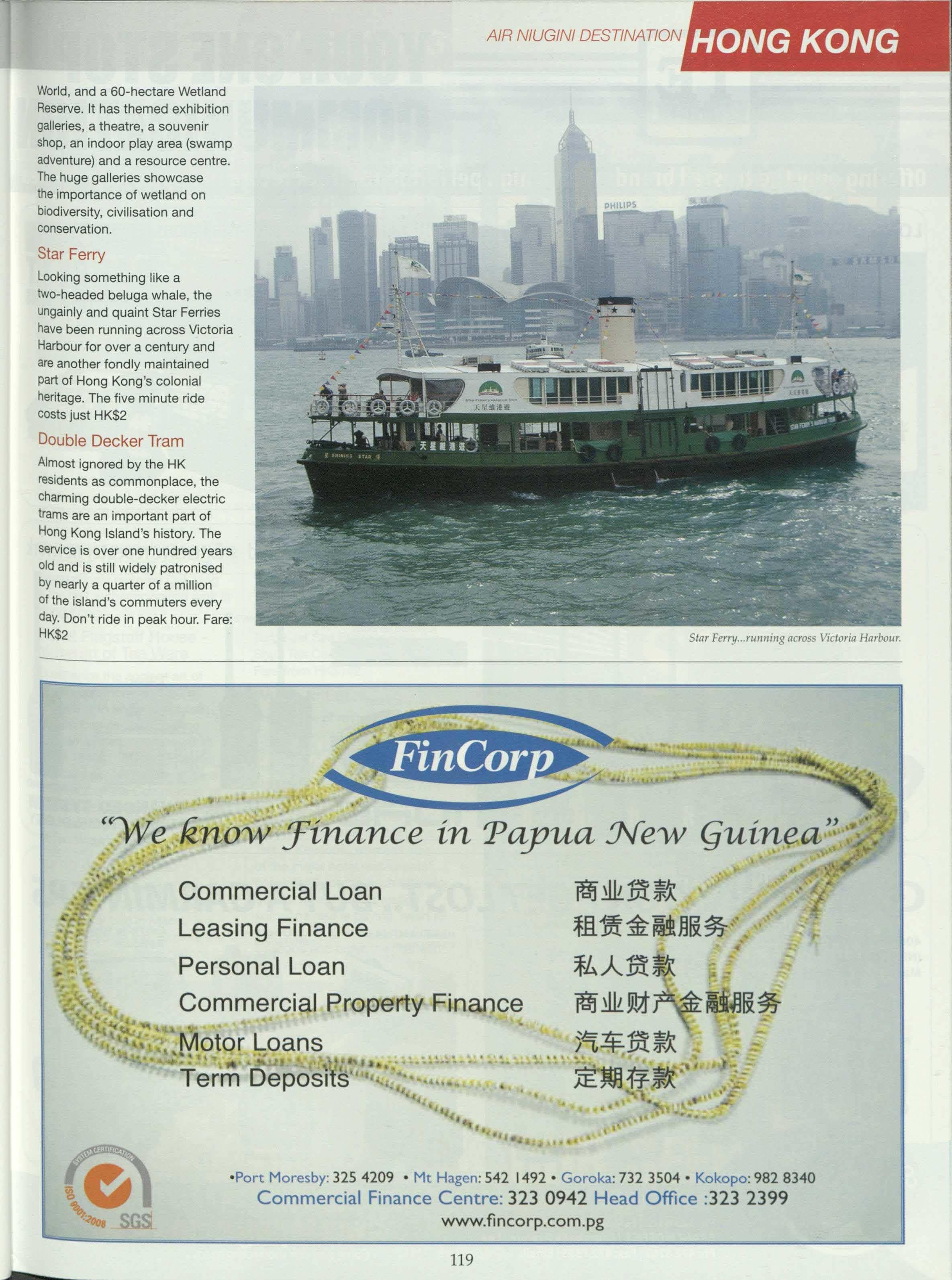
World, and a 60-hectare Wetland Reserve. It has themed exhibition galleries, a theatre, a souvenir shop, an indoor play area (swamp adventure) and a resource centre. The huge galleries showcase the importance of wetland on biodiversity, civilisation and conservation.
Star Ferry
looking something like a two-headed beluga whale, the ungainly and quaint Star Ferries have been running across Victoria Harbour for over a century and are another fondly maintained part of Hong Kong's colonial heritage. The five minute ride costs just HK$2
Double Decker Tram
Almost ignored by the HK residents as commonplace, the charming double-decker electric trams are an important part of Hong Kong Island's history. The service is over one hundred years old and is still widely patronised by nearly a quarter of a million of the island's commuters every day. Don't ride in peak hour. Fare: HK$2
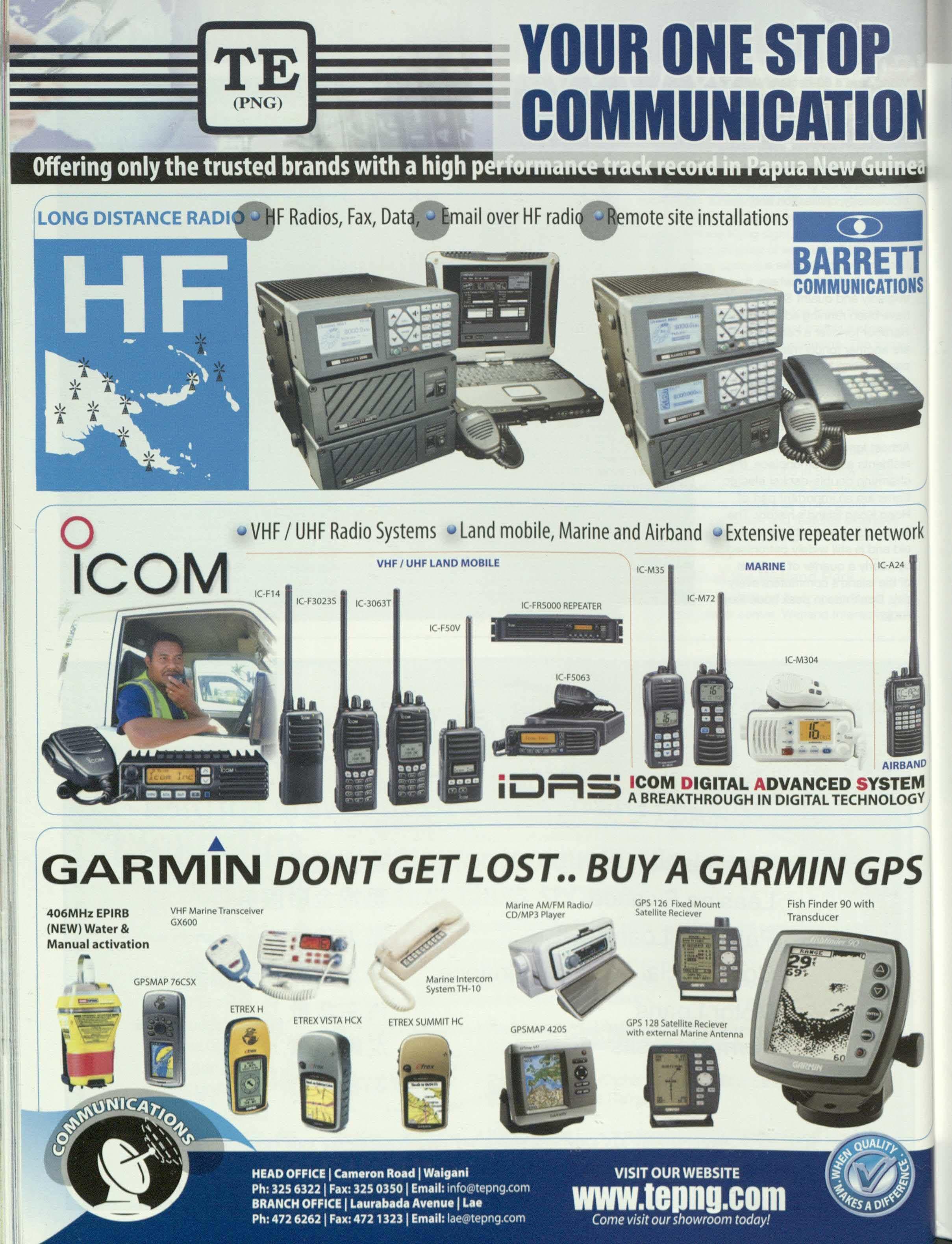
Sampa11ssta11dout in co11trast to the high-rise buildings.
Sail Hong Kong's scenic harbour on board an authentic Chinese junk and enjoy superb views of the city's impressive skyline. Originally owned and manned by Chinese fishermen, the Duk ling is typical of the junks that once crisscrossed Hong Kong's Waterways150 years ago. The Painstakingly restored Duk Ling is the last authentic sailing junk in Hong Kong.
Sip at Flagstaff HouseMuseum of Tea Ware
Experience the ancient art of the tea ceremony and learn all there is to know about tea blends, brewing and serving from an authentic master. Built in the 1840s, Flagstaff House Originallyserved as the office and residence of the Commander of the British Forces in Hong Kong. It was converted to the Museum ofTea Ware in 1984.
If You have an extended stay in Hong Kong, a day trip at least or a night or two in Macau is a fascinating side trip. Explore the nch European cultural history
that predates Hong Kong by 300 years. There's wonderful 16th Century World Heritage architecture, great restaurants, museums and, of course, the famous gambling. Macau is definitely undergoing a huge growth spurt at the moment and enormous, Las Vegas-style casinos, tourist attractions and plush hotels are being built to cater for an anticipated rush of Asian tourists. Sixty five kilometres (about 1 hour) by Turbo Jet Sea Express from the Shun Tak Centre and you're there. Fare from HK$142.
The choice of restaurants in Hong Kong is overwhelming, there's over 9,000. You can choose any number of ethnic flavours and standards from world-class five star Michelin to delightful (but risky) street vendors. The greatest variety is probably at Tsim Sha Tsui in Kowloon, whereas any of the major hotel restaurants consistently outdo each other for quality, awards and prestige. If someone else is paying, head to the Lung King Heen at the Four Seasons and order the Sauteed Wagyu Beef.
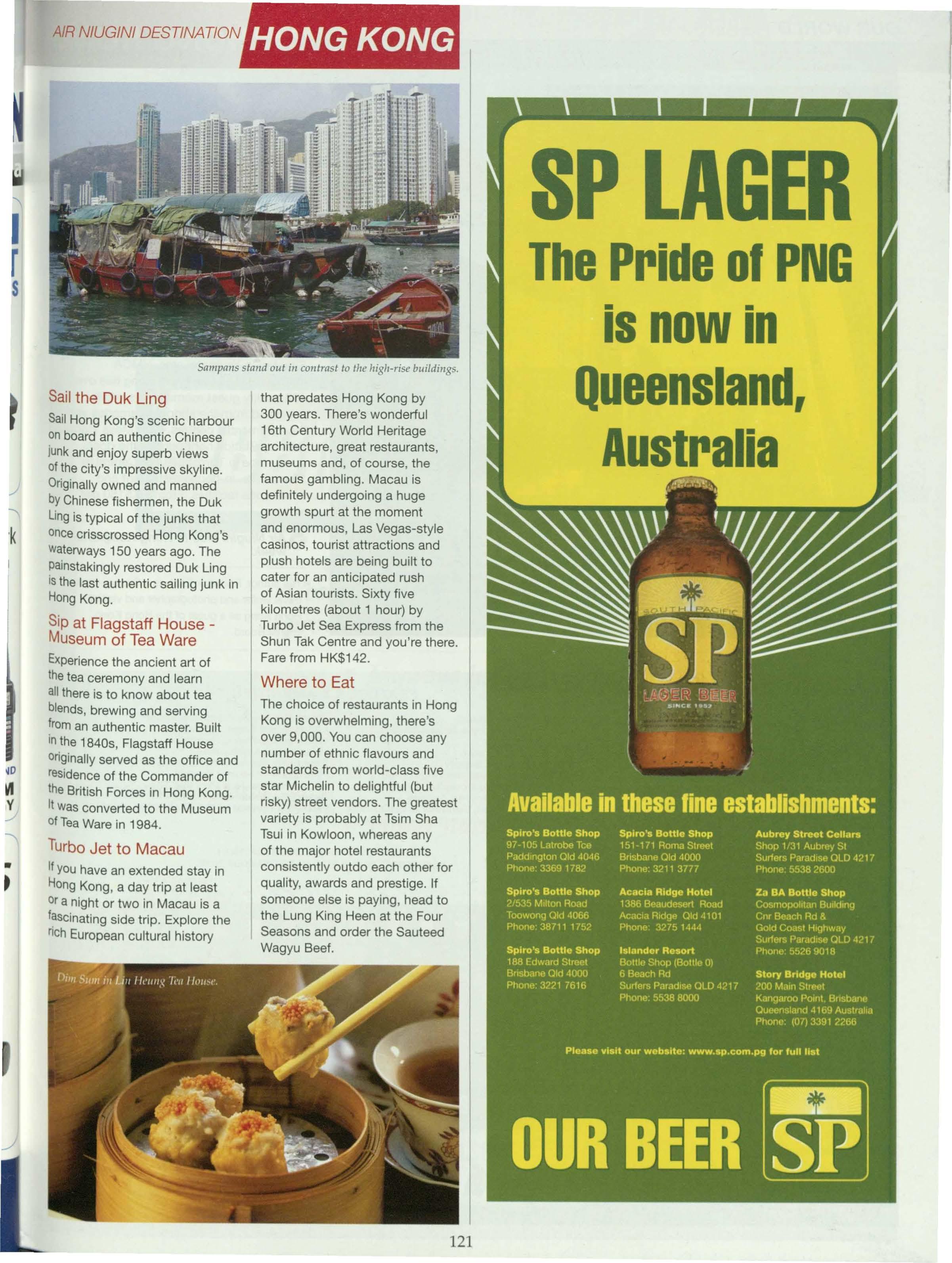
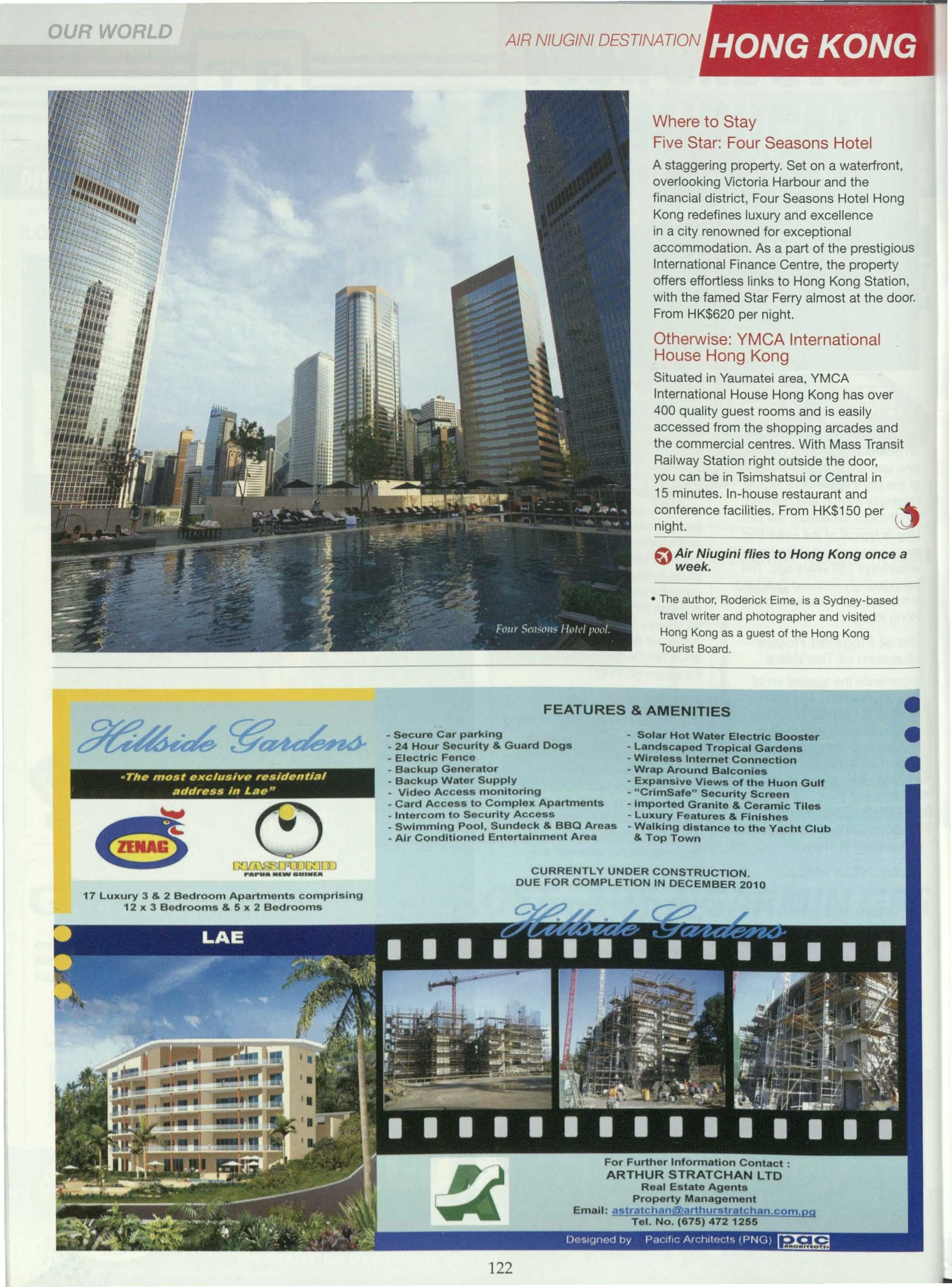
Five Star: Four Seasons Hotel
A staggering property. Set on a waterfront, overlooking Victoria Harbour and the financial district, Four Seasons Hotel Hong Kong redefines luxury and excellence in a city renowned for exceptional accommodation. As a part of the prestigious International Finance Centre, the property offers effortless links to Hong Kong Station, with the famed Star Ferry almost at the door. From HK$620 per night.
Situated in Yaumatei area, YMCA International House Hong Kong has over 400 quality guest rooms and is easily accessed from the shopping arcades and the commercial centres. With Mass Transit Railway Station right outside the door, you can be in Tsimshatsui or Central in 15 minutes. In-house restaurant and conference facilities. From HK$150 per night.
Q Air Niugini flies to Hong Kong once a week.
• The author, Roderick Eime, is a Sydney-based travel writer and photographer and visited Hong Kong as a guest of the Hong Kong Tourist Board.
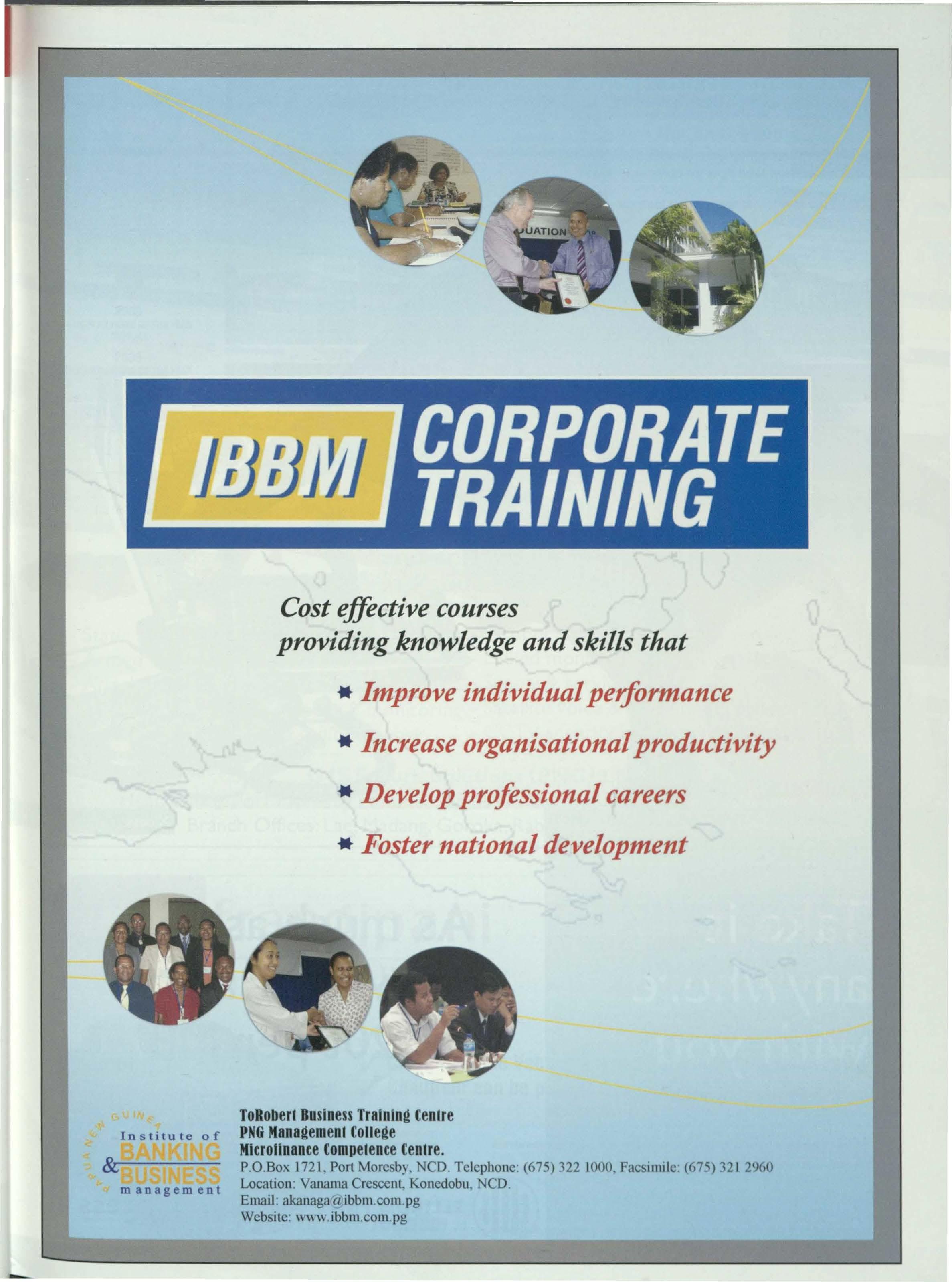
Cost effective courses providing knowledge and skills that
• Improve individual performance
• Increase organisational productivity
* Develop professional careers
• Foster national development



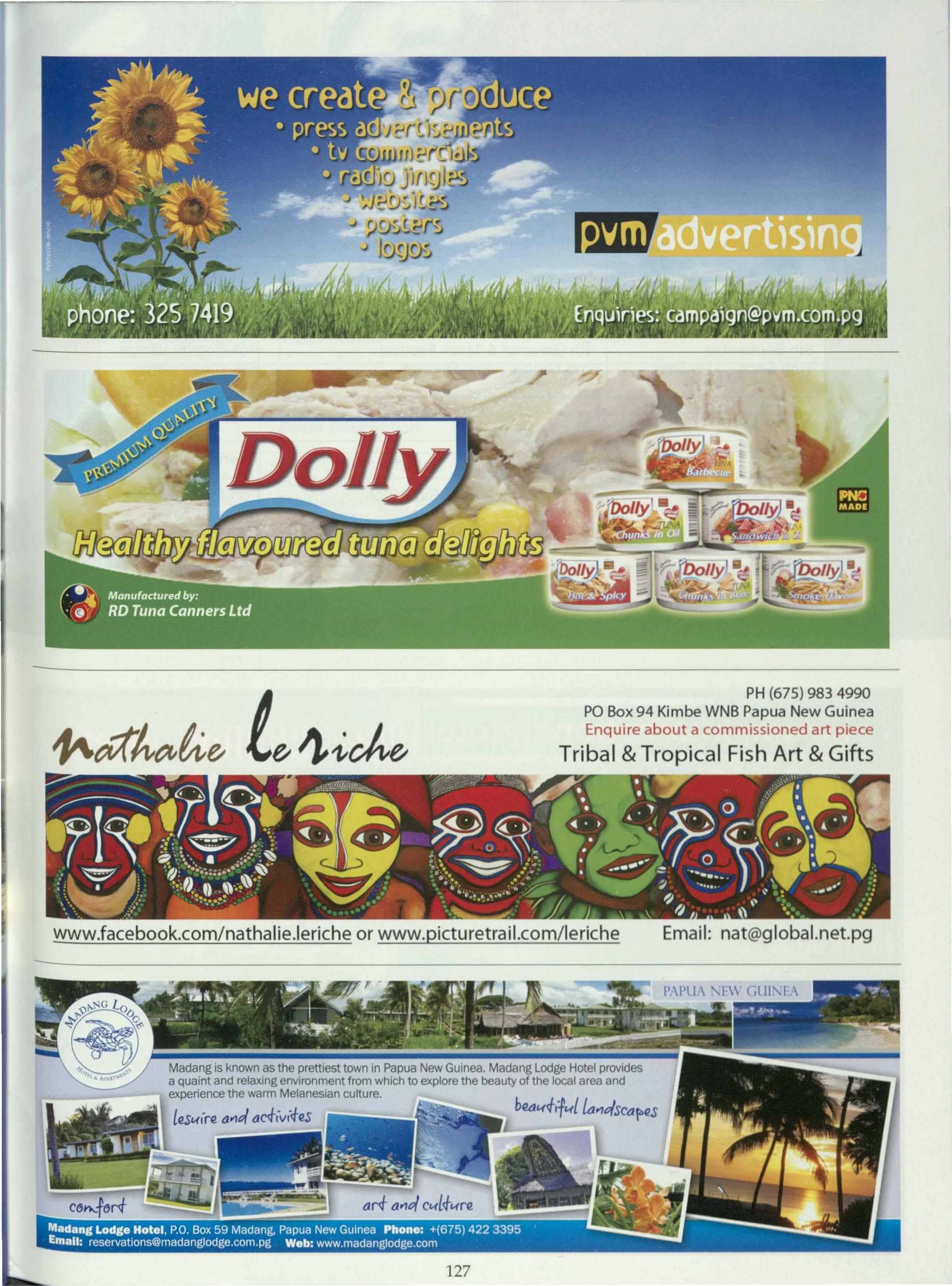
Date
4th June - 7th June
23rd Oct - 24th Oct
3rd Sept - 4th September
8th September
10th Sept - 11th Sept

Event Description
Madang Festival
Morobe Agricultural Cultural Show Festival
9th National Garamut & Mambu Festival
4th Garamut & Mask Festival
2nd Middle Sepik Festival
Event Description
15th Apr - 18th Apr
5th May - 7th May
11th June-12th June
23rd July
10th Sept- 15th Sept
5th Nov- 7th Nov
National Arts & Craft Exhibition
8th Gogodala Canoe Festival
6th Gulf Mask Festival
New Ireland Cultural Day
Hiri Moale Festival
7th National Canoe Festival
Acco111moda11011
Town/Province
Madang
Lae Wewak
Rofudogmu Village
Paliambe Village
Co111 cnt ion and B11si11cssCc11trc Rcstclllrnnts
Town Province
Port Moresby
Balimom Town
Teare Village
Port Moresby
Port Moresby
Alotau
Apartments uitcs
Exccurive Room
Deluxe Rooms
Haus Win
Bulolo Room
Board Room
Va11daFine Dining
Kolzomo'sCoffee Shop
Luluclis ltalia11 Restaurant
Aem Bar
ports111a11sBar
wim111i11gPool
Cy1111wsiw11
Travel Agency
Gift Shop
Bouriquc
Cw Rrntal
Date
8th July - 14th July
15th July-1 Sth July
20th July-22nd July
22nd - 24th July
27th July-29th July
30th July - 2nd Aug
5th Aug-8th Aug
12th Aug - 14th Aug
10th Sept- 13th Sept
14th Sept- 15th Sept
16th Sept-19th Sept

Event Description
Warwagira Festival
16th National Mask Festival
Tavur Cultural Show
Kavieng District Cultural Show
Kono Wokisok Festival
Kontu/Tembin Shark Calling Show
5th Namatanai Mask Festival
Mona Festival
Choral Festival Show
Kokopo District Cultural Show
Music Festival
Date
TBA
14th Aug-15th Aug
13th Sept-15th Sept
17th Sept-19th Sept
TBA
Event Description
Enga Cultural Show
Hagen Show
6th Bilasim Skin Festival
Goroka Show
Coffee Festival
For further detai
Town/Province
Kokopo (Rabaul)
Kokopo (Rabaul)
Kimbe (West New Britain)
Kavieng
Kono Village - West Coast New Ireland
Kontu Village - West Coast New Ireland
Namatanai Town - New Ireland
Autonomous Region of Bougainville
Kokopo
Kokopo
Kokopo
Town/Province
Wabag
Mt Hagen
Goroka
Goroka
Goroka
National airline, Air Niugini, on Monday July 26 welcomed the arrival of its second Boeing 767-300ER aircraft to Port Moresby and Papua New Guinea.
he aircraft resplendent in new Air Niugini livery featuring a magnificent plumed Bird of Paradise arrived to a traditional wash down ceremony at the Jacksons International airport. A water cannon spray was unleashed by fire trucks, saluting the arrival of the aircraft.
On arrival, the Boeing 767 was awash not only with water but also a spectacular lightshow display of stars illuminating the aircraft against the night sky.
The arrival of the second B767-300ER aircraft now brings the total aircraft In Air Niuglnl's Boeing fleet to three including a Boeing 757 aircraft.
Prime Minister, Grand Chief Sir Michael Somare was at the airport to welcome the aircraft. Also present was his deputy Don Pomb Polye; Minister for State Enterprise, Finance and Treasury Arthur Somare; along with Air Niugini Chairman Sir James Tjoeng; and Air Niugini CEO Wasantha Kumarasiri.
Air Niugini's cameras caught the moment when the ribbon was cut - the ribbon itself looking very much like the new trademark livery on the side of Air Niuglnl's aircraft.
The event was also witnessed by other ministers and members of parliament, diplomatic corps, heads of statutory bodies, representatives from corporate and businesshouses, industry partners and the media.
The Prime Minister in welcoming the aircraft said the arrival of an additional Boeing will vastly enhance Air Niugini's flexibility and scheduling options one international sections. He also said it gives Air Niugini the opportunity to capitalise on the opportunities and developments arising from the multibillion dollar LNG Project.
"The LNG is by far the biggest mining project ever undertaken in Papua New Guinea with the labour force being drawn from throughout the world and with

additional aircraft on the international sector, Air Niugini is in a better position to handle these movements. "Sir Michael added.
Mr Kumarasiri re-emphasised that the additional B767 aircraft will provide operational flexibility for both passenger and cargo movements on international sectors.
"The extra capacity and frequencies would ensure flexible travel options for our valued customers. It also places Air Niugini in a better position to take advantage of the current resource development that's taking place in the country."
Mr Kumarasiri also highlighted some key achievements in the last four years. The most notable included the increase in the number of aircraft from eleven to 20 aircraft before the end of this year and also Air Niugini remaining profitable without increasing airfares since 2003.
Like the other two aircraft that arrived earlier, the B767-300ER arrived in the new Air Niugini livery. The notable changes included a magnificent plumed Bird of Paradise on the tail wing of the aircraft representing a Bird of Paradise in flight and also a swirl of gold and red on the fuselage of the aircraft.
The Boeing 767's cabin offers 46 business and 148 economy class seats with greater pitch in both cabins, which means more leg room for the passengers.
All Boeing aircraft provide services on Air Niugini's international routes. Air Niugini currently operates to ten international destinations including the Australian ports of Cairns, Brisbane and Sydney, Honiara in Solomon Islands, Nadi - Fiji, Kuala Lumpur in Malaysia, Manila - Philippines, Narita in Japan, Singapore and Hong Kong. U
Air Niugini has a brand new Q400 Next Generation aircraft. It arrived in Port Moresby and Papua New Guinea on July 21, 2010.

he aircraft under the registration P2-PXU, resplendent in Air Niugini's new livery featuring a magnificent plumed bird of paradise arrived to a traditional wash down ceremony as it taxied into Jackson's airport.
On arrival to welcome the new aircraft was Public Enterprise Minister, Hon. Arthur Somare, Air Niugini Board and Management, representatives from corporate and businesshouses, diplomatic corps, industry Partners and the media.
Minister Somare in his welcome address said the arrival of the 0400 NextGen aircraft marks a new era in Air Niugini's operations, adding
that it will further enhance and boost the airline's domestic operations.
The 0400 NextGen is the first of the two aircraft ordered by Air Niugini from Bombardier. It is also the first of its aircraft type to be operating in Papua New Guinea under the P2 registration. Both aircraft were funded by PNG Sustainable Development Program.
He said: "This begins a new era at Air Niugini with one of the world's most advanced turboprop aircraft that will meet Air Niugini's requirements for many years to come.
"We are pleased with 0400 aircraft's hot and
Ihigh capabilities as well as its ability to operate from the shorter runways on our routes."
He said as a commercial entity, Air Nluglnl is also keen to capitalise on the potential business opportunities and developments arising from the multi-billion dollar LNG project.
The 0400 NextGen is a brand new aircraft specifically configured to suit Air Niugini's requirement.
The 74-seat capacity aircraft has the ability to operate from shorter runways and delivers the quietest and most vibration free passenger cabin of any propeller driven aircraft.
Celebrnli11g1/,enrrivnl of 1/,eQ400 al Jnckso11sAirport.
The aircraft features an enhanced cabin environment with the introduction of LED lighting, new ceiling panels, dished window sidewalls and larger overhead luggage bins. These features combined with the Active Noise and Vibration Suppression (ANVS) system provide an excellent cabin experience for passengers."
It also has two class cabin and a hot galley,

allowing for hot meals to be served on board. Apart from that, the 0400 NextGen aircraft is fast with the speed that's close to that of a jet aircraft and is fuel efficient with low emissions.
The addition of 0400 gives Air Niugini the opportunity to reassess some of its jet routes.
The 0400 NextGen aircraft follows in the footsteps of a long line of robust and reliable
Ide Havilland and Bombardier turboprops that have served Air Niugini very well over the years.
The second 0400 NextGen aircraft is expected to arrive in September this year. Air Niugini is also expecting its second Boeing 767 aircraft next month. This will bring the total aircraft in the airline's fleet to 20 before the end of the year.
Air Niugini Chief Executive Officer, Mr Wasantha Kumarasiri said the airline is proud of its achievement, comparing to only 11 aircraft four years ago.
He said, "With the additional aircraft in the fleet, we are confident this will provide operational flexibility for both our cargo and passenger movements. The extra capacity and frequencies would ensure flexible travel options for valued customers. It also places Air Niugini in a better position to take advantage of the resource development that's currently taking place in the country, especially the multi-billion dollar LNG project."
The 0400 NextGen aircraft is manufactured by Bombardier, a world leading manufacturer of innovative transport solutions from commercial aircraft and business jets to rail transportation equipment, systems and services. Bombardier's headquarters is based in Toronto, Canada.
Both Minister Somare and Mr Kumarasiri thanked everyone involved in ensuring the successful acquisition of the aircraft including the PNG Sustainable Development Program, Department of Transport, PNG Civil Aviation Authority, Internal Revenue Commission, ICCC, the board, management and the 0400 project team at Air Niugini. V
BY ILLAN KAPRANGI Corporate Affairs & Public Relations Officer, Air Niuginl
n Air Nluglni female cadet pilot has made history by becoming the first Papua New Gulnean woman, if not the Pacific, to have received the prestigious Sir Donald Anderson Trophy In Australia.
Twenty one-year old Rhoda llave whose father Is from lhu in the Gulf Province and her mother from Malaysia was recognized for her outstanding academic achievement In professional aviation studies by female trainee pilots, based on examination results.
The award Is sponsored by Australia Civil Aviation Safety Authority each
year at the Australian Women Pilots' Association conference and is given to the top three female pilots.
Rhoda is the only female among six Air Niugini cadet pilots who have completed their 18-month training at Coifs Harbor In New South Wales, Australia in December last year.
Air Nlugini Chief Executive Officer, Mr Wasantha Kumarasiri when congratulating the young pilot, said Rhoda's achievement is not only for Air Nlugini but also for Papua New Guinea.
"Each year, Air Niugini Invests millions of kina In training young pilots and
ly
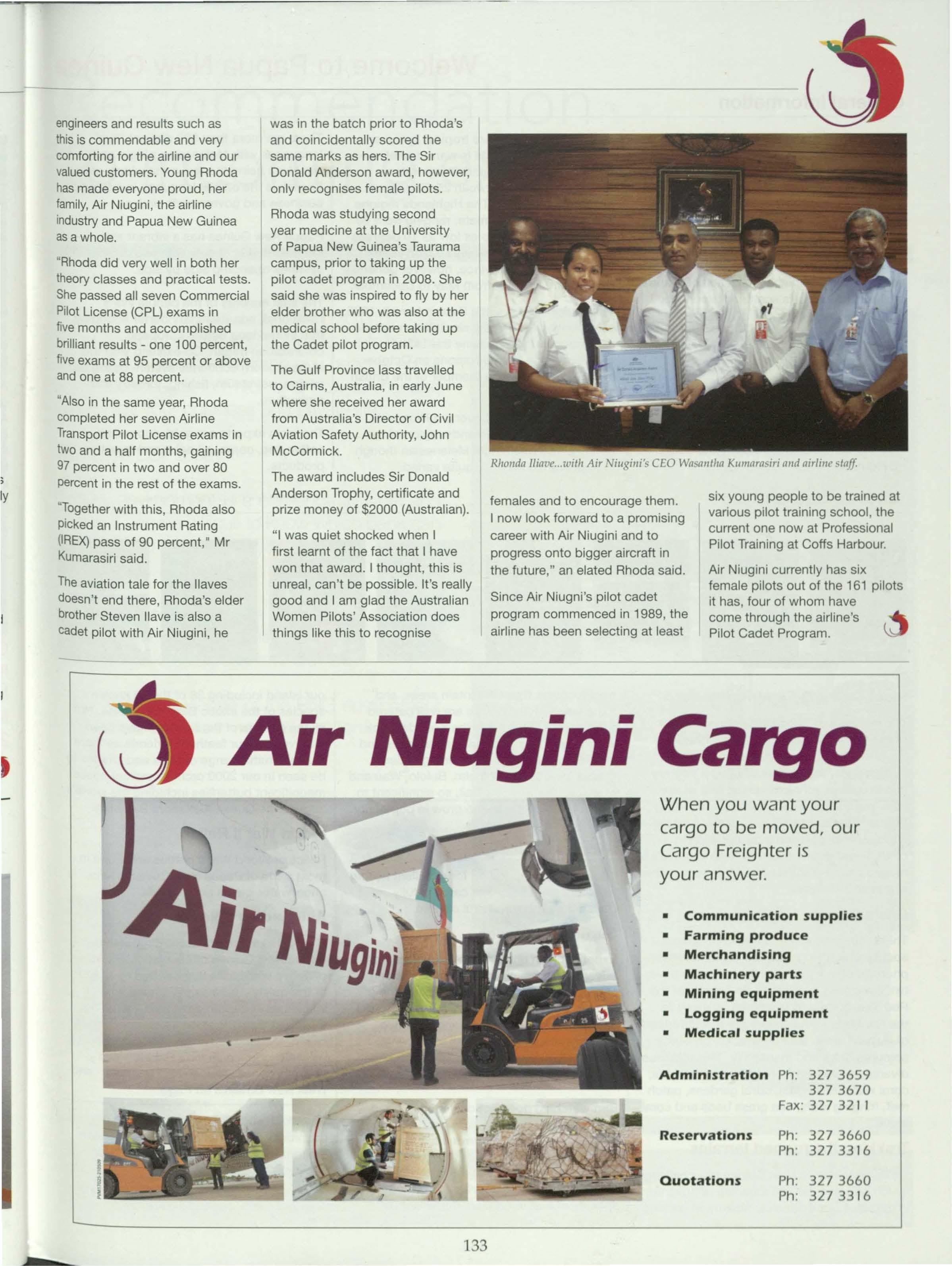
engineersand results such as this is commendable and very comforting for the airline and our valued customers. Young Rhoda has made everyone proud, her family,Air Niugini, the airline industry and Papua New Guinea as a whole.
"Rhoda did very well in both her theory classes and practical tests. She passed all seven Commercial Pilot License (CPL) exams in five months and accomplished brilliant results - one 100 percent, five exams at 95 percent or above and one at 88 percent.
"Also in the same year, Rhoda completed her seven Airline Transport Pilot License exams in two and a half months, gaining 97 percent in two and over 80 percent in the rest of the exams.
"Together with this, Rhoda also picked an Instrument Rating (IREX)pass of 90 percent," Mr Kumarasiri said.
The aviation tale for the llaves doesn't end there, Rhoda's elder brother Steven llave is also a cadet pilot with Air Niugini, he
was in the batch prior to Rhoda's and coincidentally scored the same marks as hers. The Sir Donald Anderson award, however, only recognises female pilots.
Rhoda was studying second year medicine at the University of Papua New Guinea's Taurama campus, prior to taking up the pilot cadet program in 2008. She said she was inspired to fly by her elder brother who was also at the medical school before taking up the Cadet pilot program.
The Gulf Province lass travelled to Cairns, Australia, in early June where she received her award from Australia's Director of Civil Aviation Safety Authority, John McCormick.
The award includes Sir Donald Anderson Trophy, certificate and prize money of $2000 (Australian).
"I was quiet shocked when I first learnt of the fact that I have won that award. I thought, this is unreal, can't be possible. It's really good and I am glad the Australian Women Pilots' Association does things like this to recognise
Rhonda //im•e with Air Niugini's CEO
females and to encourage them.
I now look forward to a promising career with Air Niugini and to progress onto bigger aircraft in the future," an elated Rhoda said.
Since Air Niugni's pilot cadet program commenced in 1989, the airline has been selecting at least
six young people to be trained at various pilot training school, the current one now at Professional Pilot Training at Coffs Harbour.
Air Niugini currently has six female pilots out of the 161 pilots it has, four of whom have come through the airline's Pilot Cadet Program.
Lying entirely within the tropics, barely south of the Equator and just north of the Australian continent is Papua New Guinea, the second largest island in the world. With a total land mass of 473.189sq.km it is the last of a string of Islands spilling down from South East Asia into the Pacific.
Apart from the mainland, Papua New Guinea comprises a remarkable collection of islands, atolls and coral reefs scattered around its coastline. The mainland is divided by the Owen Stanley Range-a rugged central spine with peaks over 4,000 metres high. Great rivers begin their journey to the sea from these mountains-among them, Fly and Sepik waterways. Below the mountain chain, fertile coastal plains, flooded delta regions and mangrove swamps exist alongside broad sandy beaches, sheltered bays and dense rain forests.
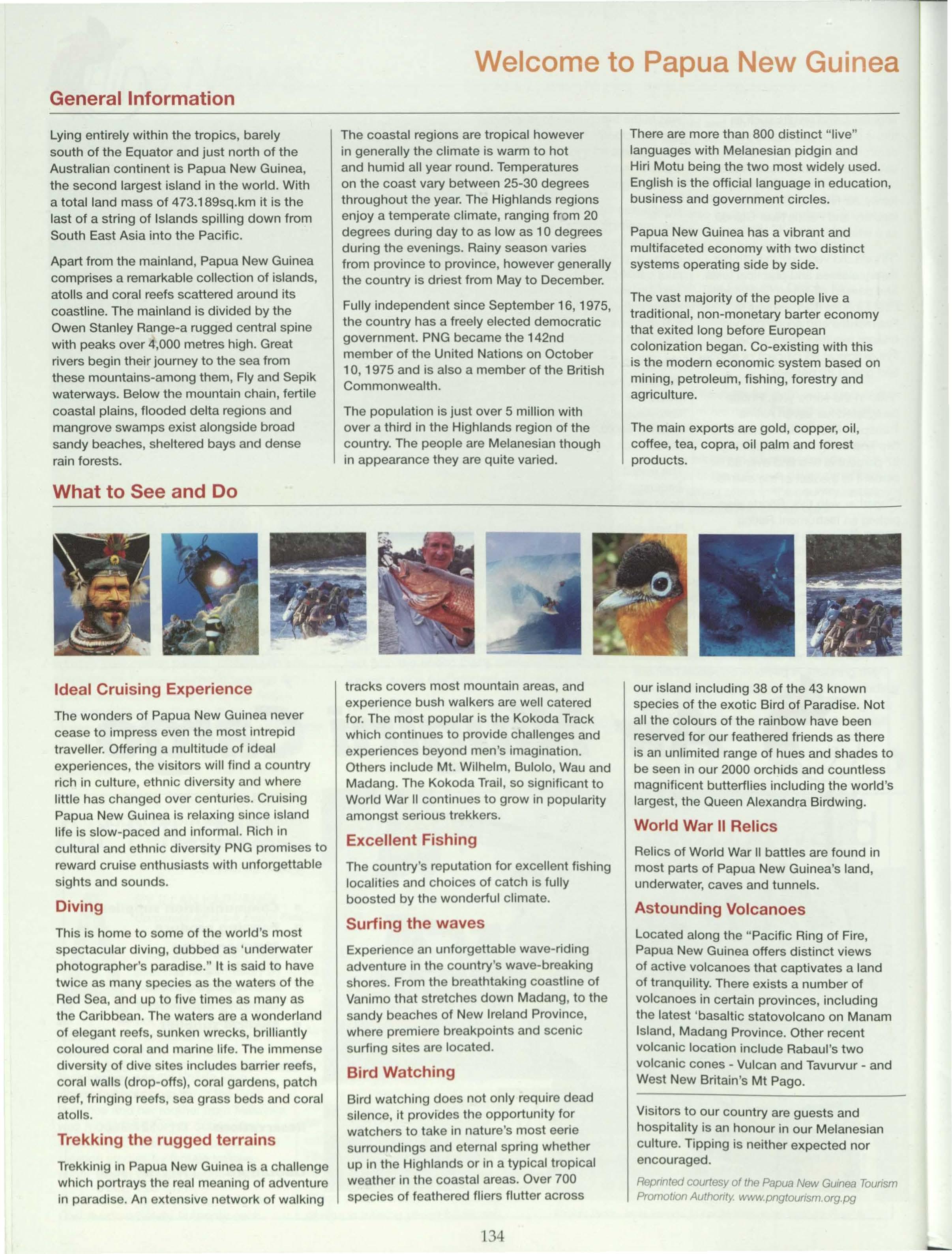
The wonders of Papua New Guinea never cease to impress even the most intrepid traveller. Offering a multitude of ideal experiences, the visitors will find a country rich in culture, ethnic diversity and where little has changed over centuries. Cruising Papua New Guinea is relaxing since island life is slow-paced and informal. Rich in cultural and ethnic diversity PNG promises to reward cruise enthusiasts with unforgettable sights and sounds.
This is home to some of the world's most spectacular diving, dubbed as 'underwater photographer's paradise." It is said to have twice as many species as the waters of the Red Sea, and up to five times as many as the Caribbean. The waters are a wonderland of elegant reefs, sunken wrecks, brilliantly coloured coral and marine life. The immense diversity of dive sites includes barrier reefs, coral walls (drop-offs), coral gardens, patch reef, fringing reefs, sea grass beds and coral atolls.
Trekking the rugged terrains
Trekkinig In Papua New Guinea is a challenge which portrays the real meaning of adventure in paradise. An extensive network of walking
The coastal regions are tropical however in generally the climate is warm to hot and humid all year round. Temperatures on the coast vary between 25-30 degrees throughout the year. The Highlands regions enjoy a temperate climate, ranging from 20 degrees during day to as low as 10 degrees during the evenings. Rainy season varies from province to province, however generally the country is driest from May to December.
Fully independent since September 16, 1975, the country has a freely elected democratic government. PNG became the 142nd member of the United Nations on October 1 0, 1975 and is also a member of the British Commonwealth.
The population is just over 5 million with over a third in the Highlands region of the country. The people are Melanesian though in appearance they are quite varied.
There are more than 800 distinct "live" languages with Melanesian pidgin and Hiri Motu being the two most widely used. English is the official language in education, business and government circles.
Papua New Guinea has a vibrant and multifaceted economy with two distinct systems operating side by side.
The vast majority of the people live a traditional, non-monetary barter economy that exited long before European colonization began. Co-existing with this is the modern economic system based on mining, petroleum, fishing, forestry and agriculture.
The main exports are gold, copper, oil, coffee, tea, copra, oil palm and forest products.
tracks covers most mountain areas, and experience bush walkers are well catered for. The most popular is the Kokoda Track which continues to provide challenges and experiences beyond men's imagination. Others include Mt. Wilhelm, Bulolo, Wau and Madang. The Kokoda Trail, so significant to World War II continues to grow in popularity amongst serious trekkers.
The country's reputation for excellent fishing localities and choices of catch is fully boosted by the wonderful climate.
Experience an unforgettable wave-riding adventure in the country's wave-breaking shores. From the breathtaking coastline of Vanimo that stretches down Madang, to the sandy beaches of New Ireland Province, where premiere breakpoints and scenic surfing sites are located.
Bird watching does not only require dead silence, it provides the opportunity for watchers to take in nature's most eerie surroundings and eternal spring whether up in the Highlands or in a typical tropical weather in the coastal areas. Over 700 species of feathered fliers flutter across
our island including 38 of the 43 known species of the exotic Bird of Paradise. Not all the colours of the rainbow have been reserved for our feathered friends as there is an unlimited range of hues and shades to be seen in our 2000 orchids and countless magnificent butterflies including the world's largest, the Queen Alexandra Birdwing.
World War II Relics
Relics of World War II battles are found in most parts of Papua New Guinea's land, underwater, caves and tunnels.
Located along the "Pacific Ring of Fire, Papua New Guinea offers distinct views of active volcanoes that captivates a land of tranquility. There exists a number of volcanoes in certain provinces, including the latest 'basaltic statovolcano on Manam Island, Madang Province. Other recent volcanic location include Rabaul's two volcanic cones - Vulcan and Tavurvur - and West New Britain's Mt Pago.
Visitors to our country are guests and hospitality is an honour in our Melanesian culture. Tipping is neither expected nor encouraged.

1.Obtain"AWelcomeGuideto PortMoresby''- the mostcomprehensiveand up-to-date information sourcecontainingeverythingyou need to know to be successful in PNG, and how to manage and enjoy your business and privatelife.
2. Talkto BSP today.
A new environmentis a challenge to work and livein. It can be difficultto know which bank can provideyou the security and banking services you'llneed.
BSP can help you make the most out of your PNGexperience.Bank with confidencewith the largestbank in Papua New Guinea.
With more knowledge of the PNG environment andglobal expertise,we are your bank.
